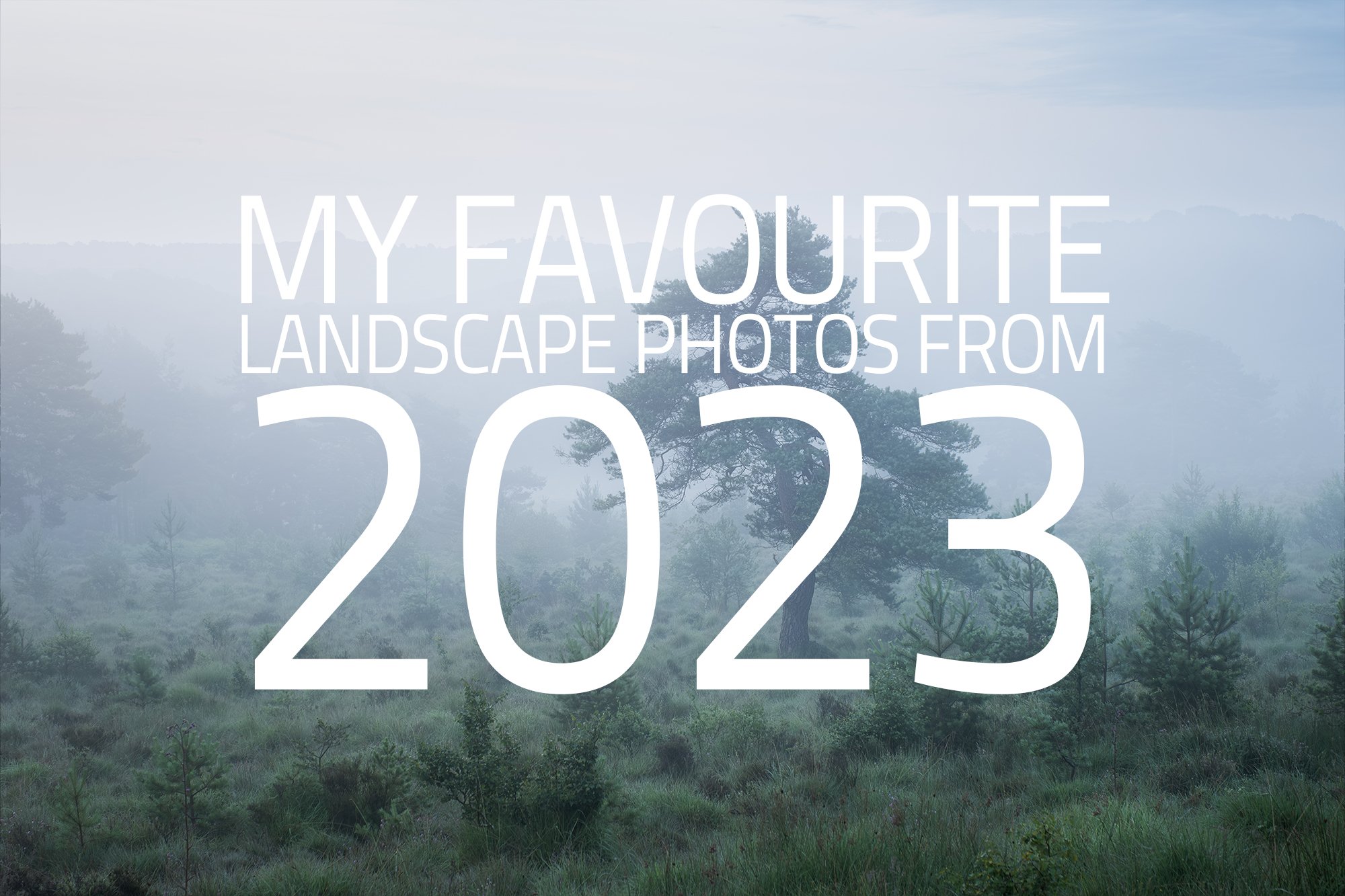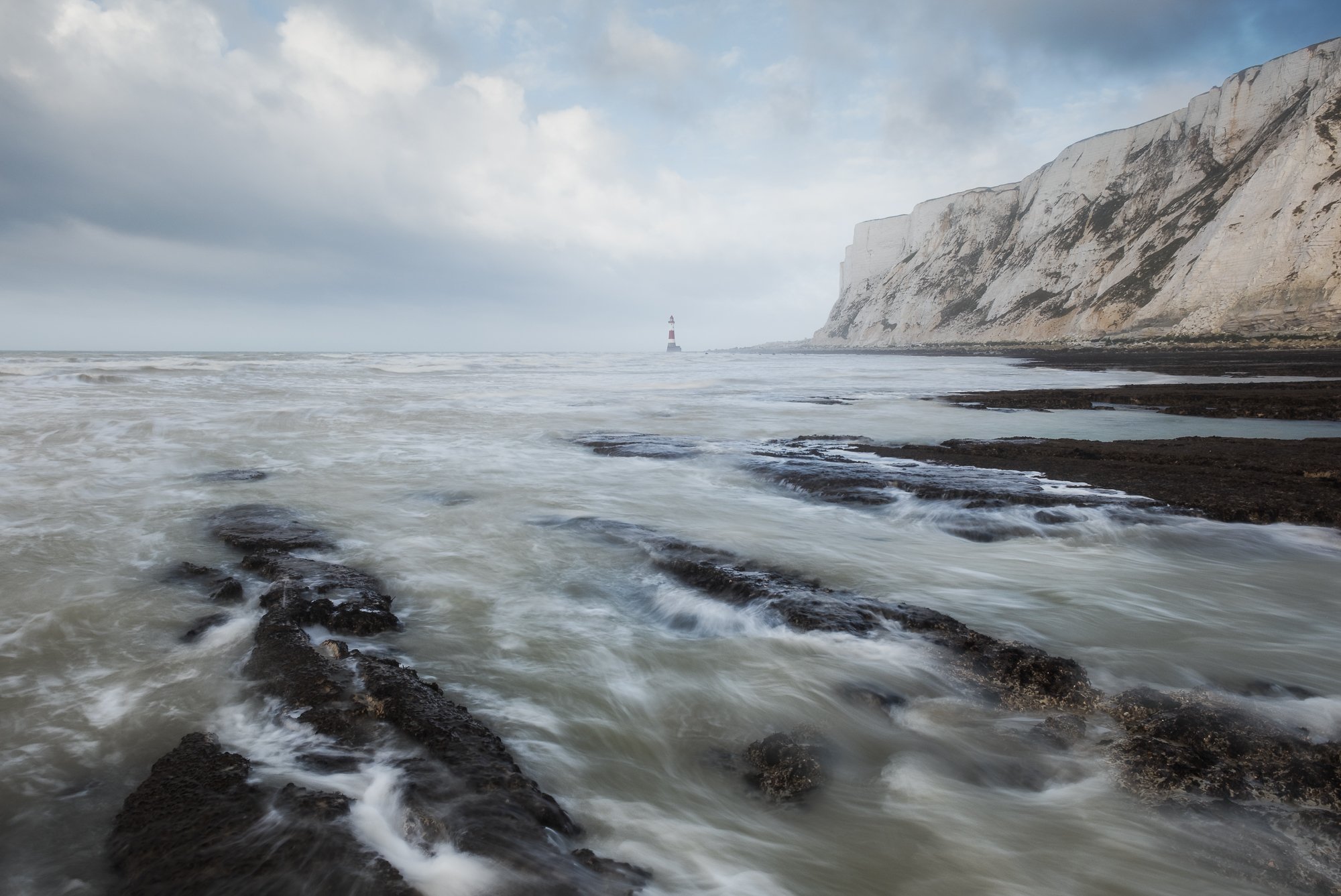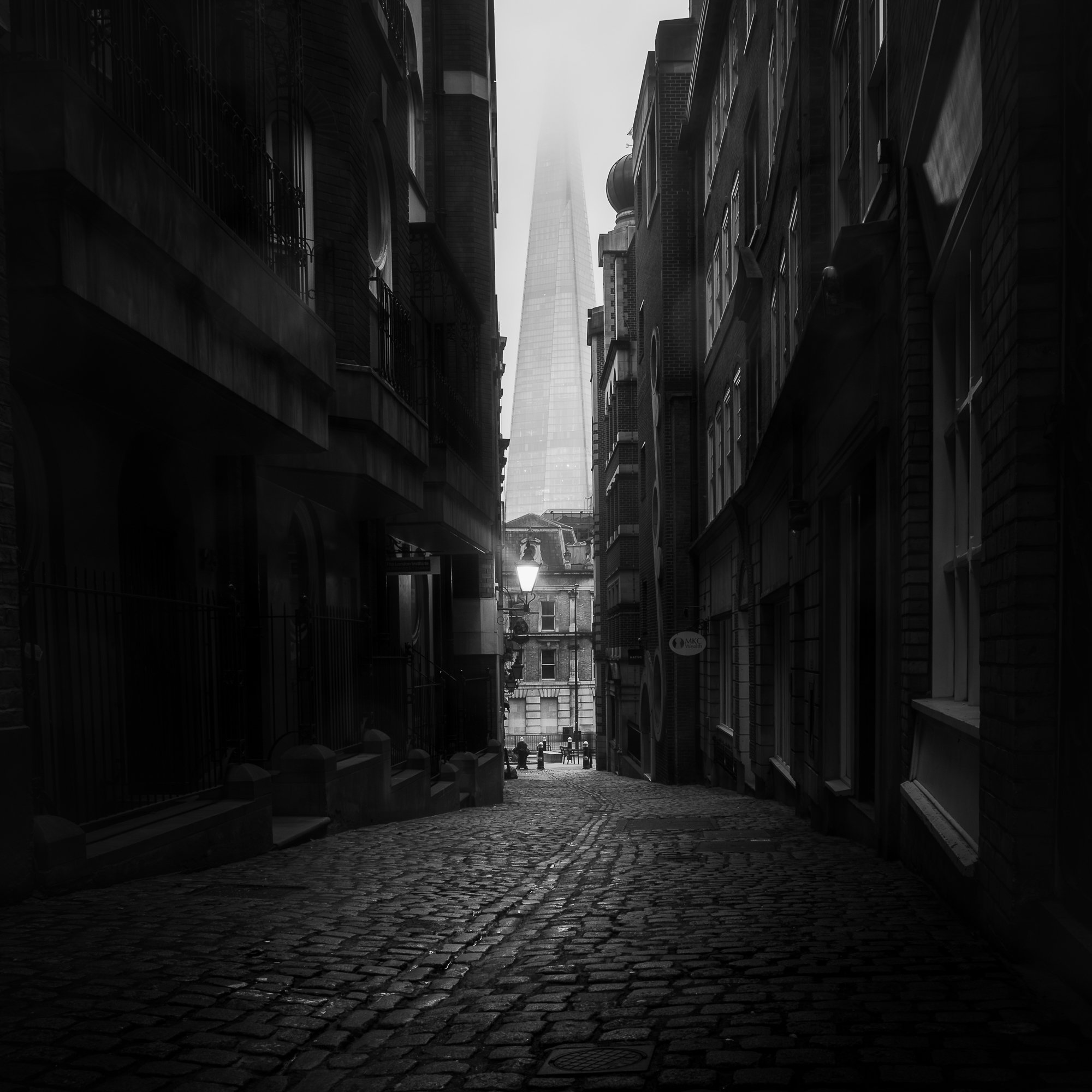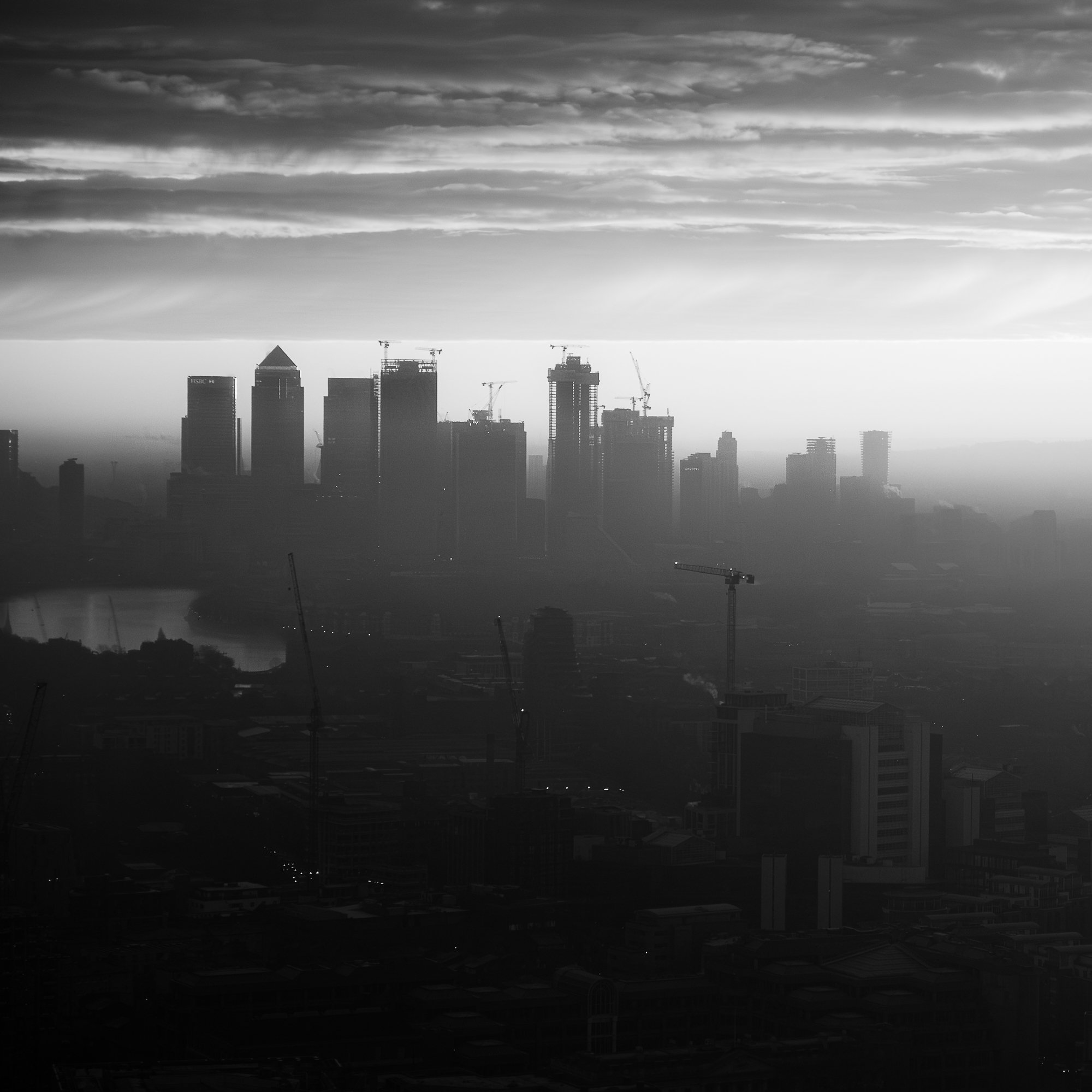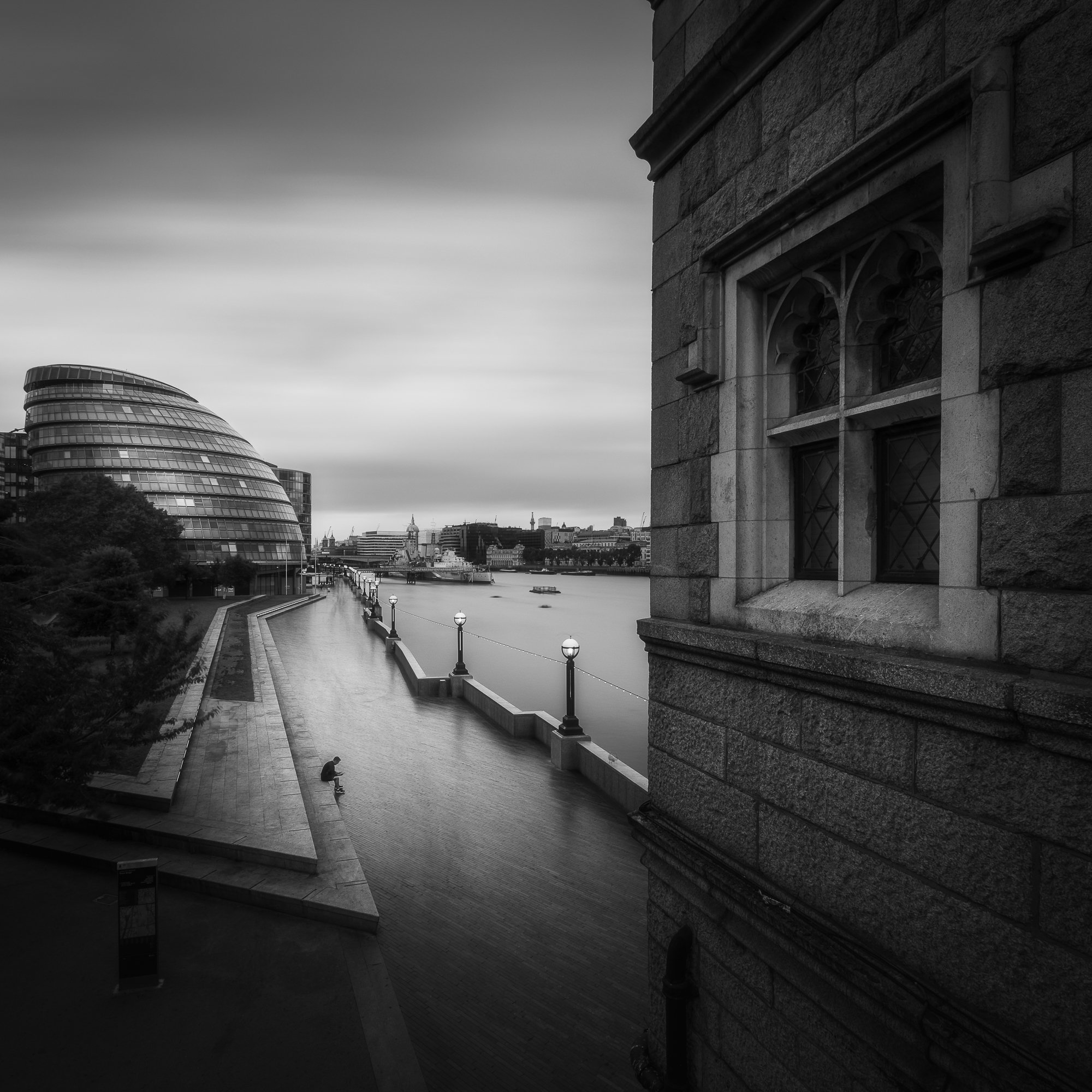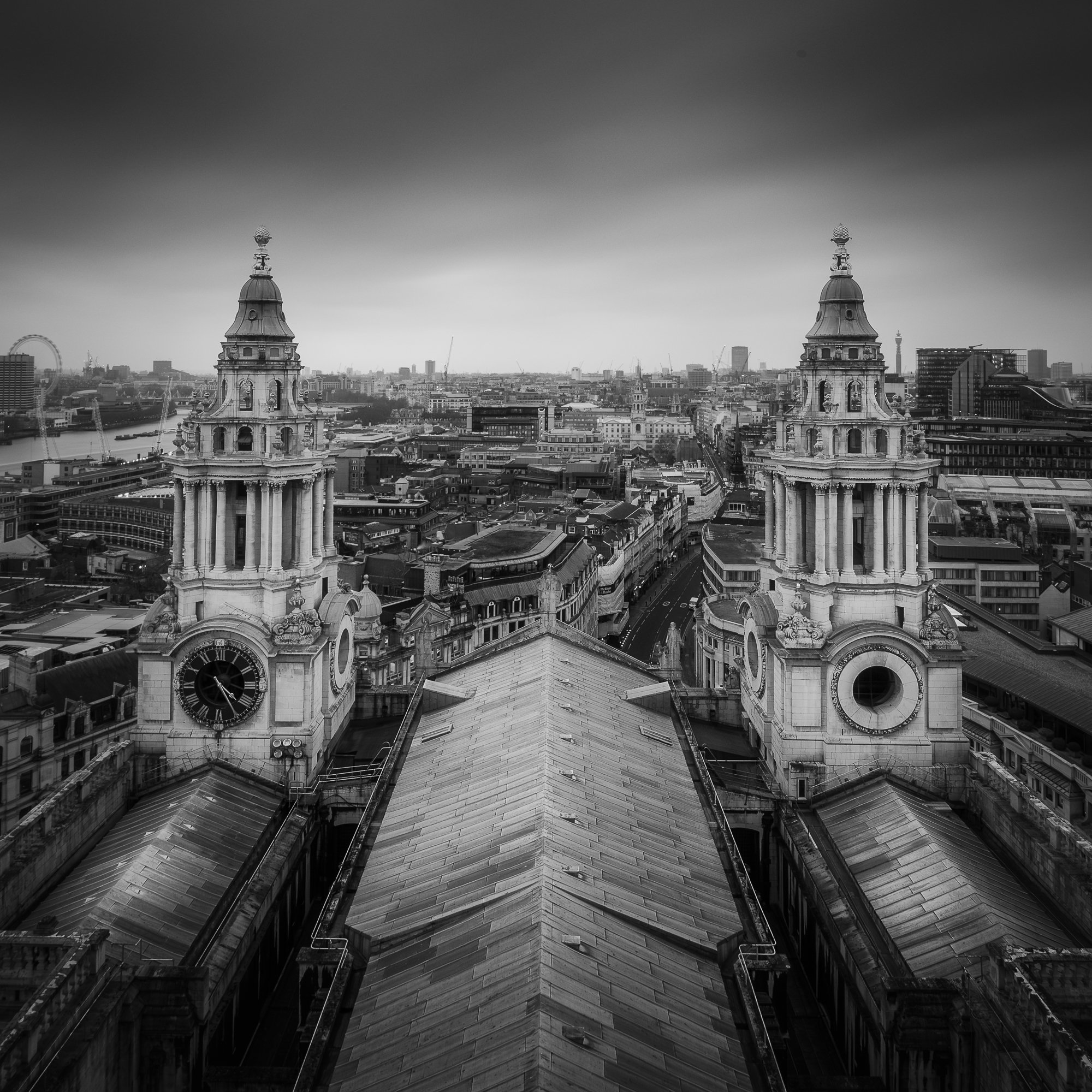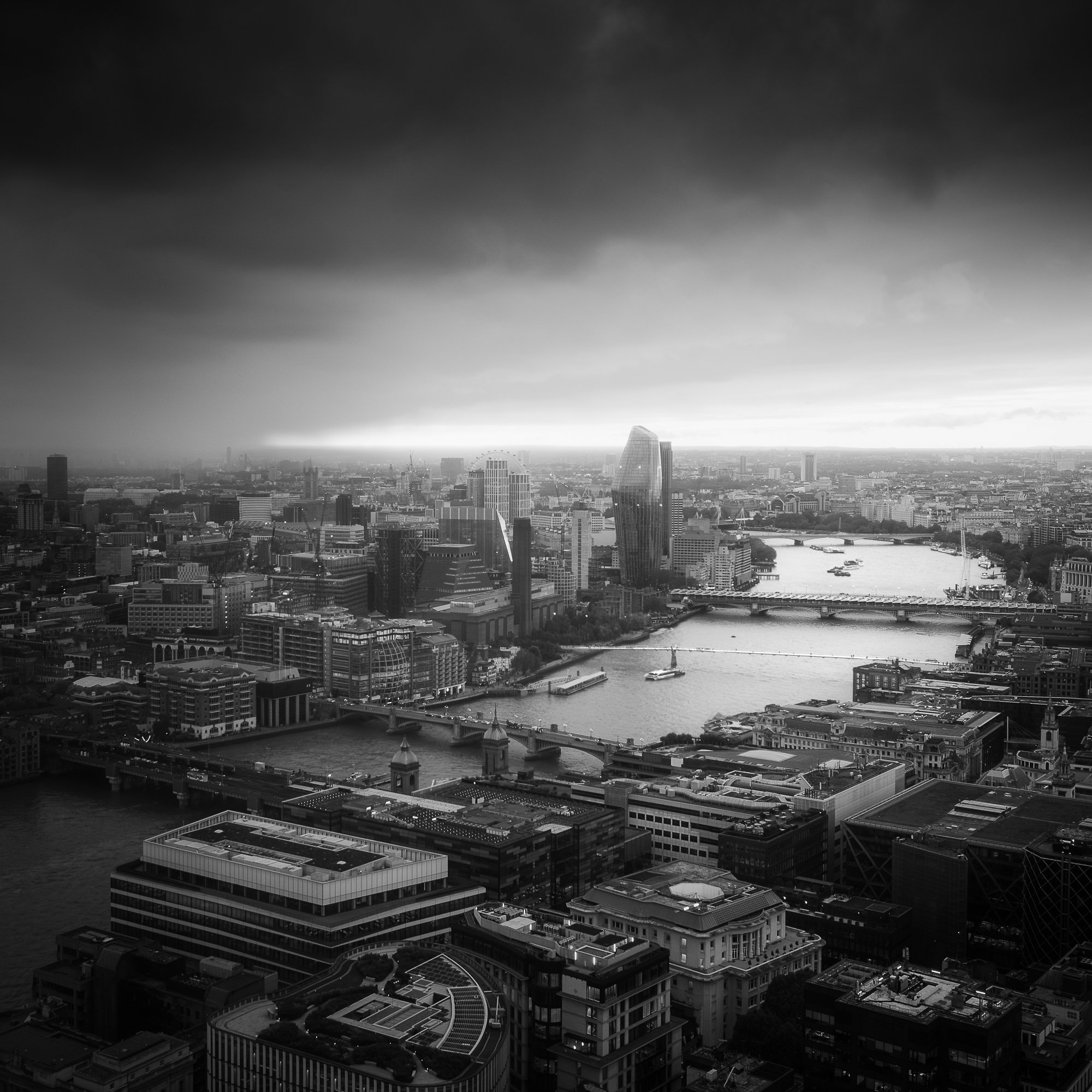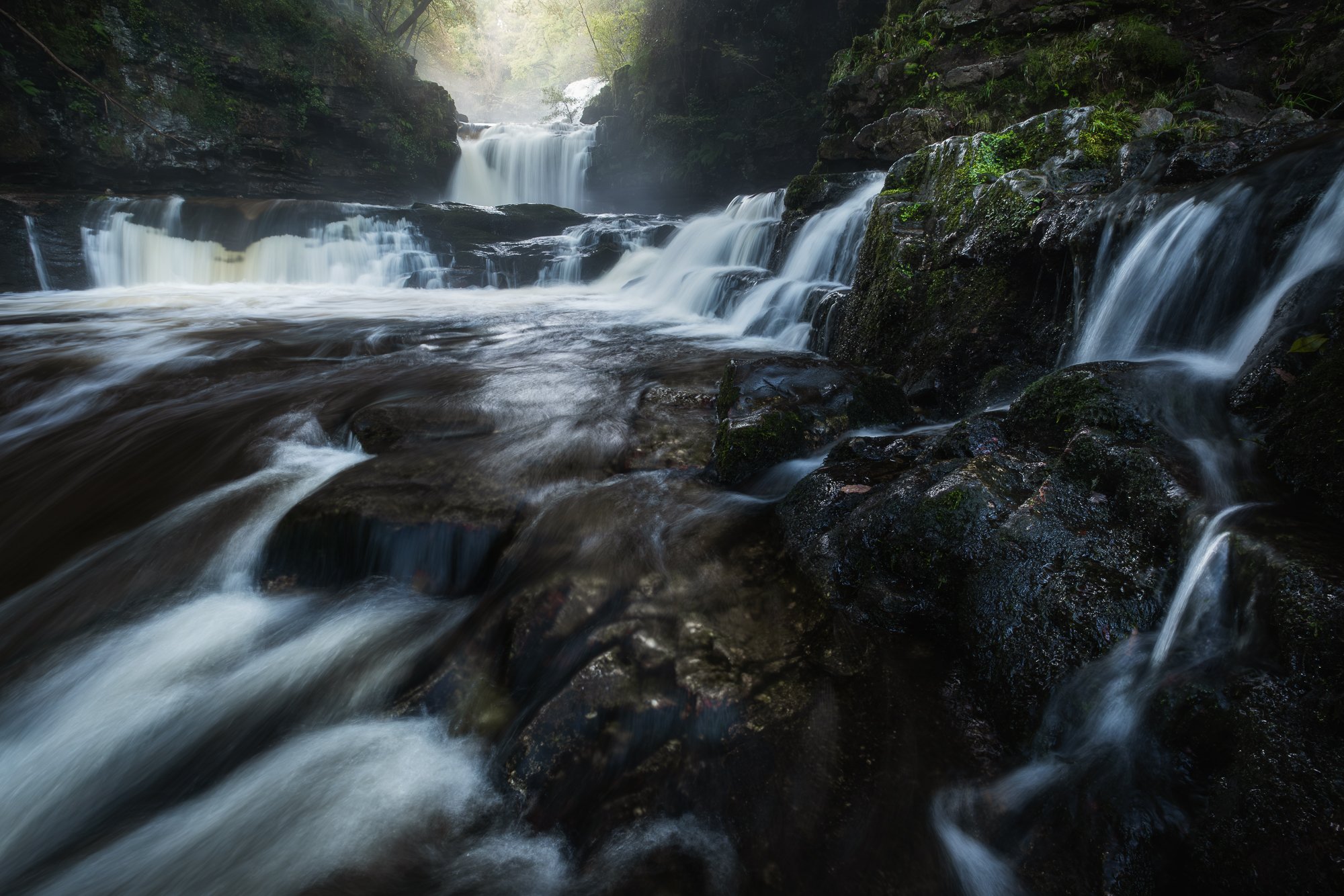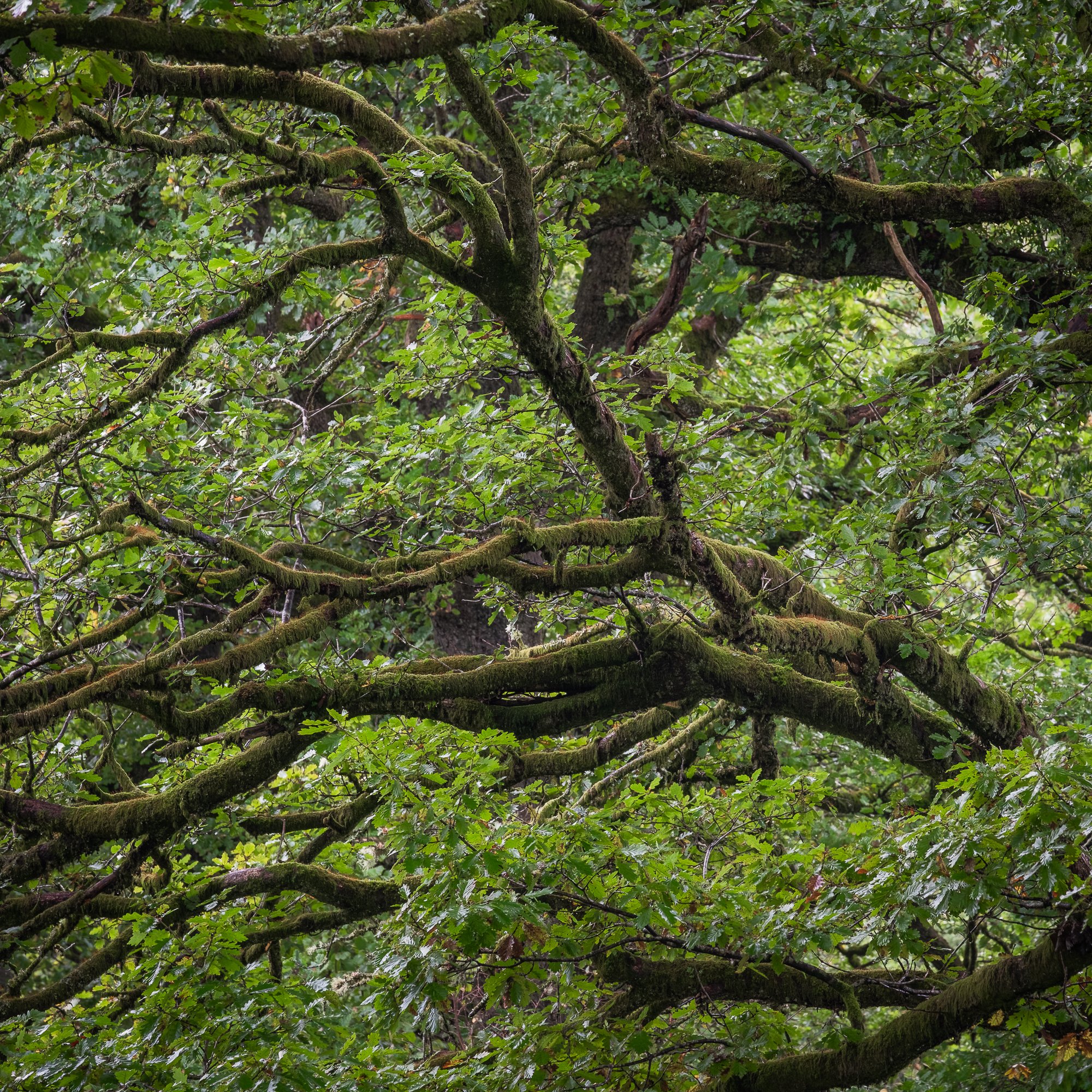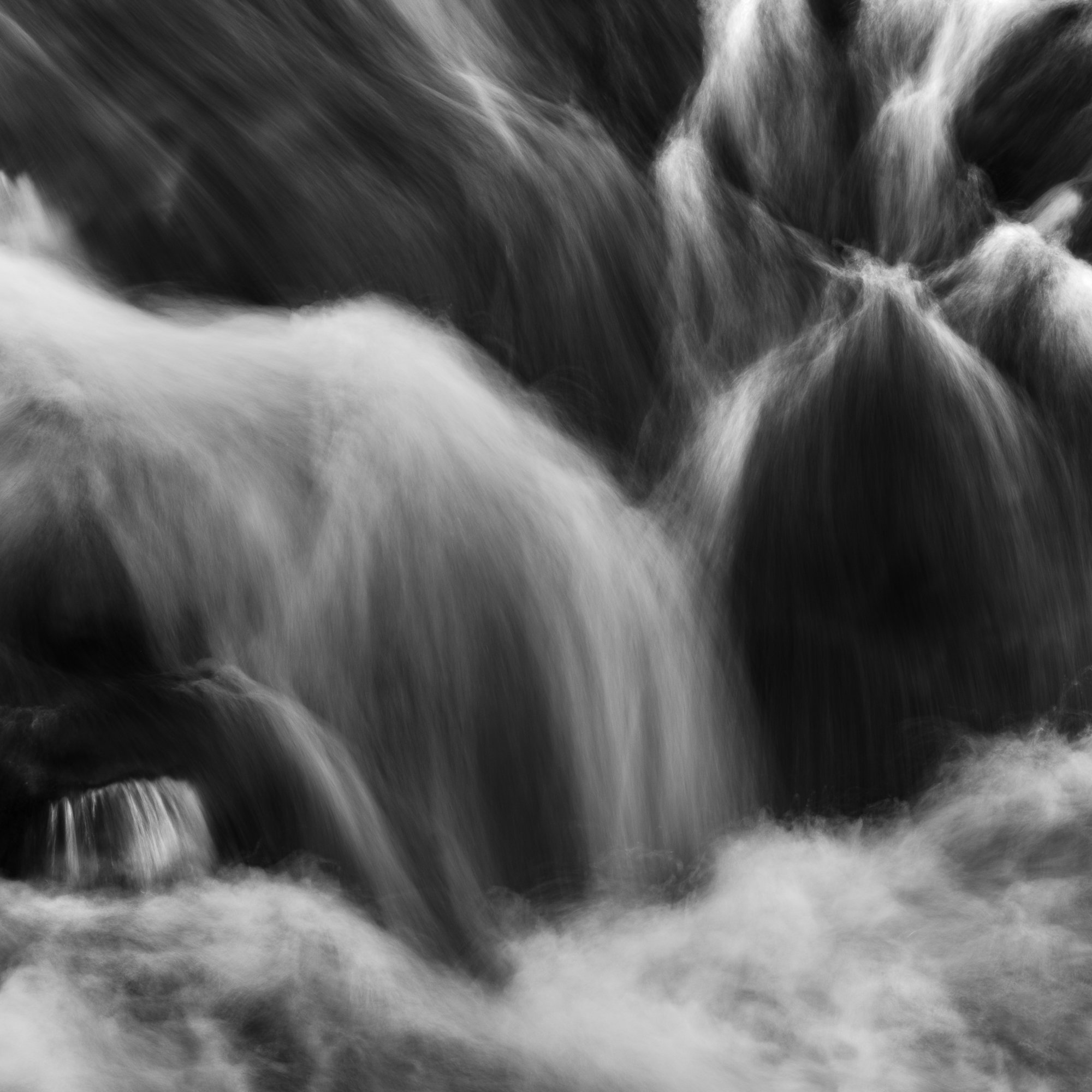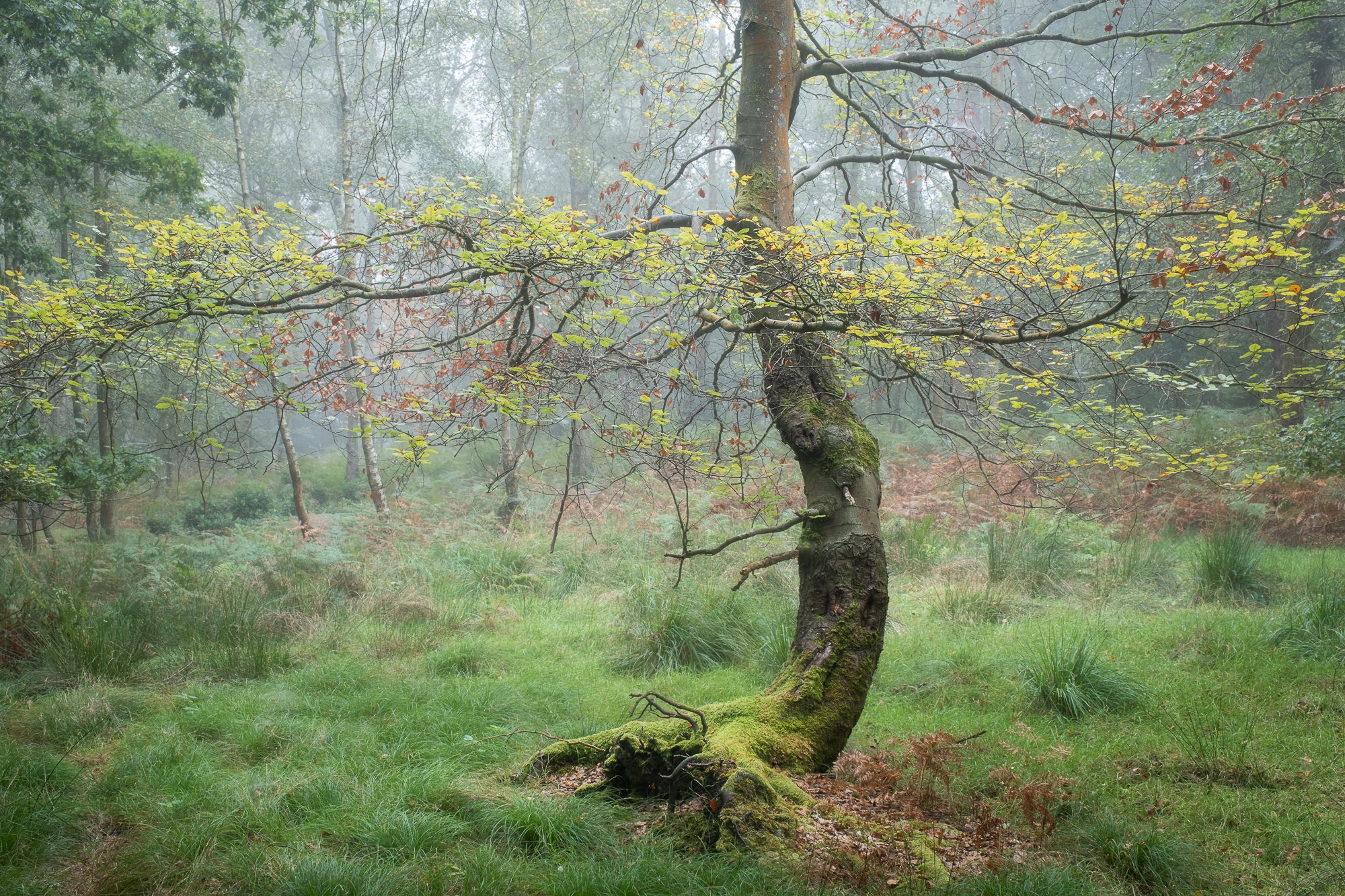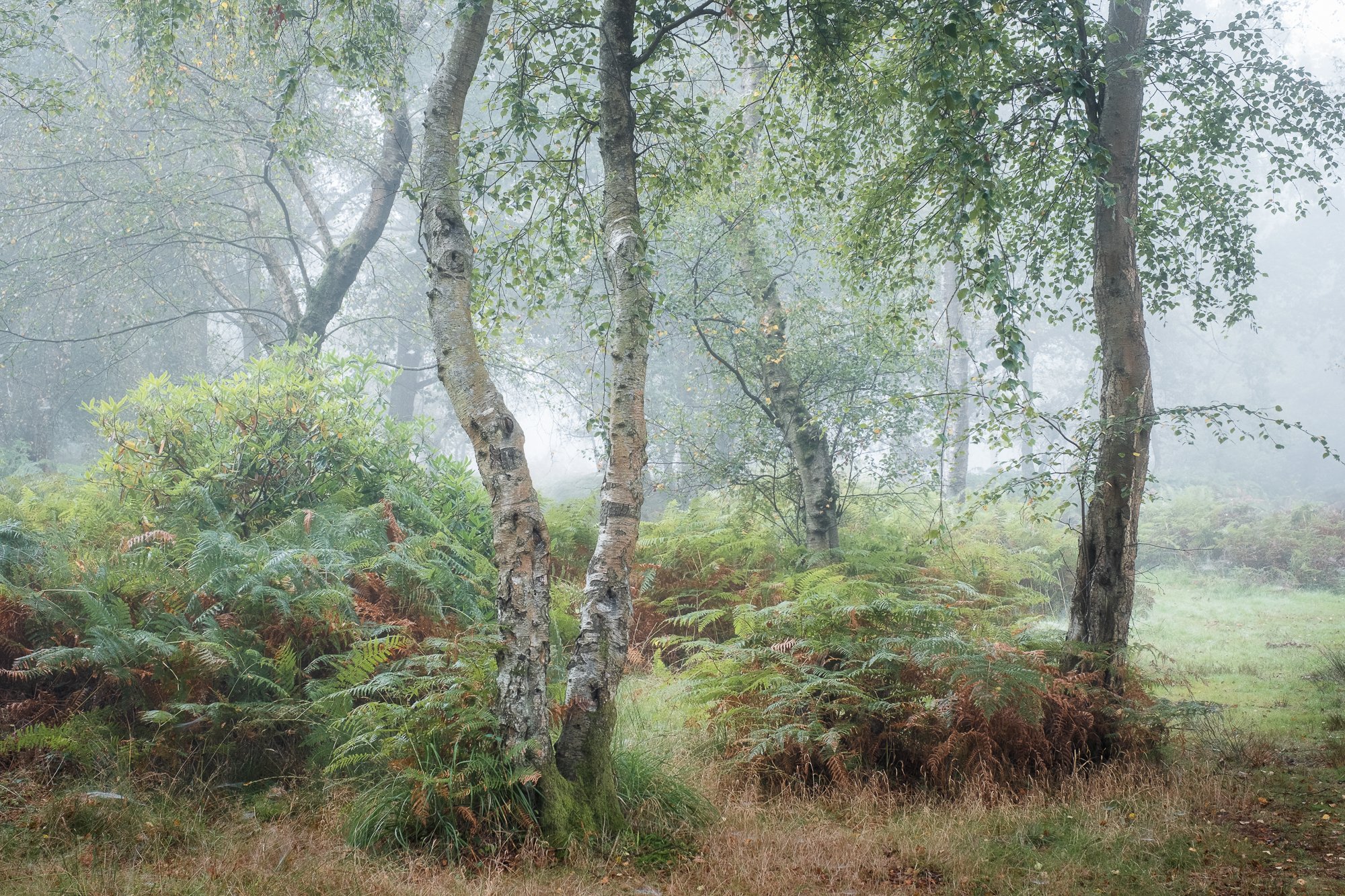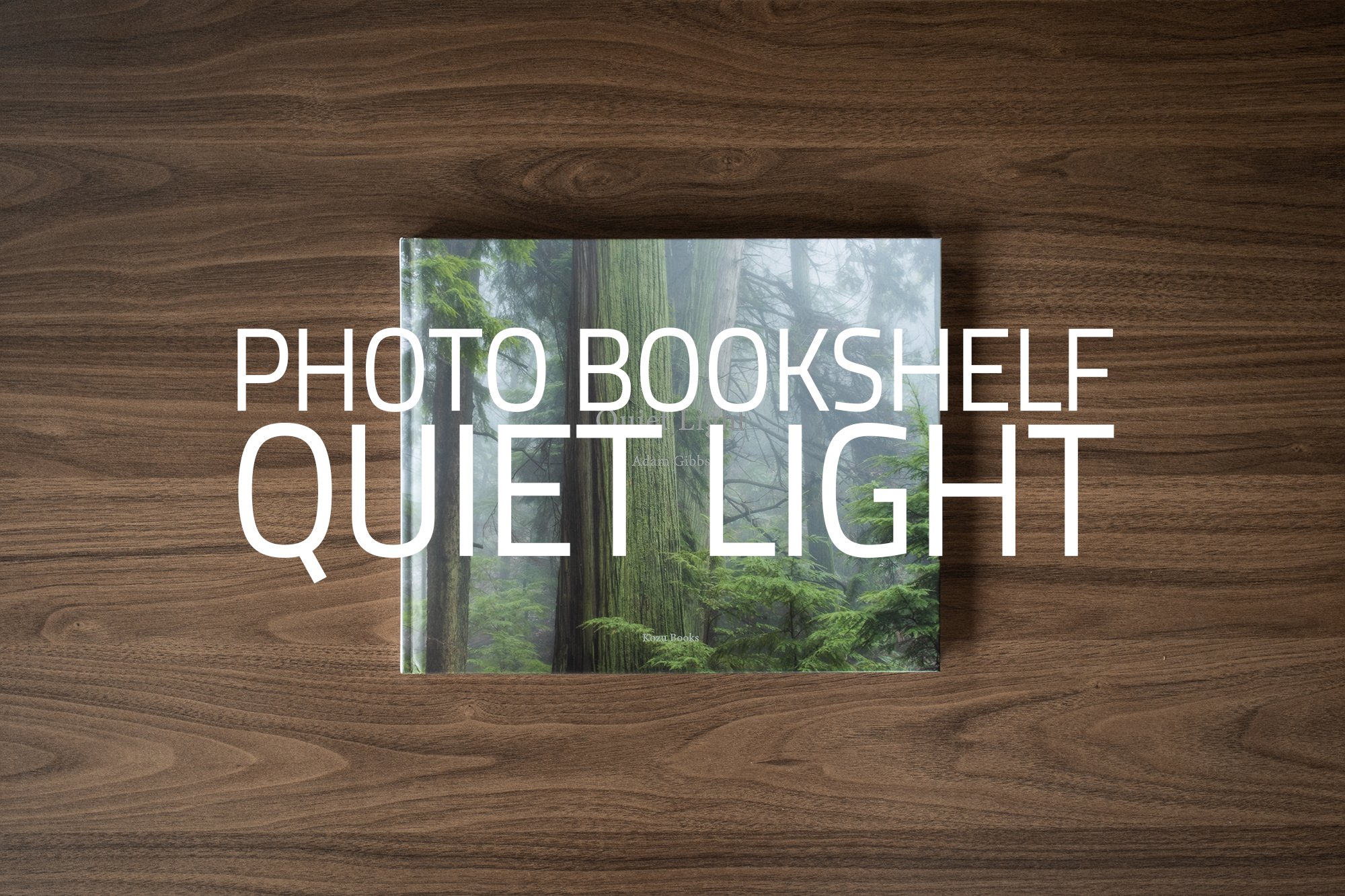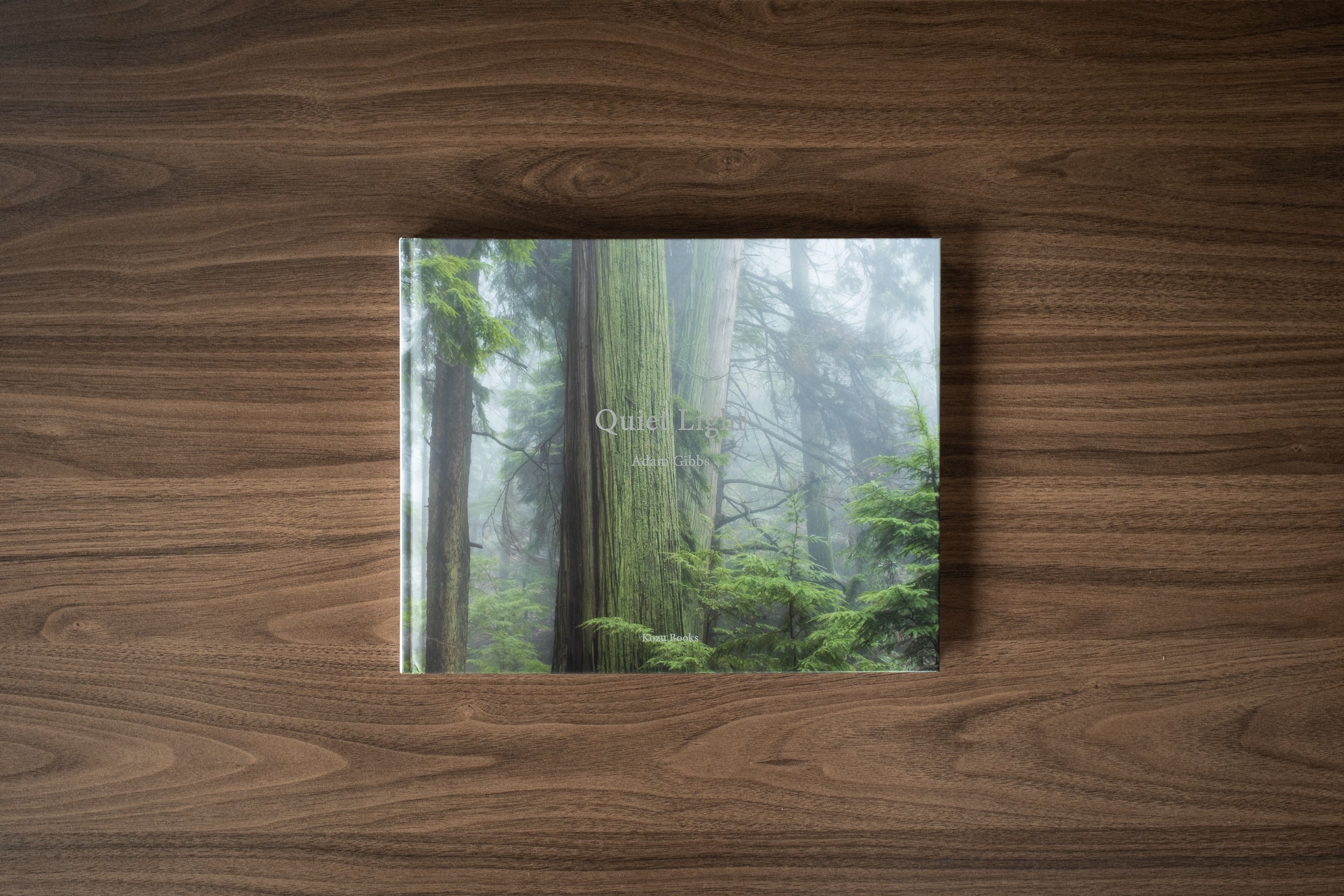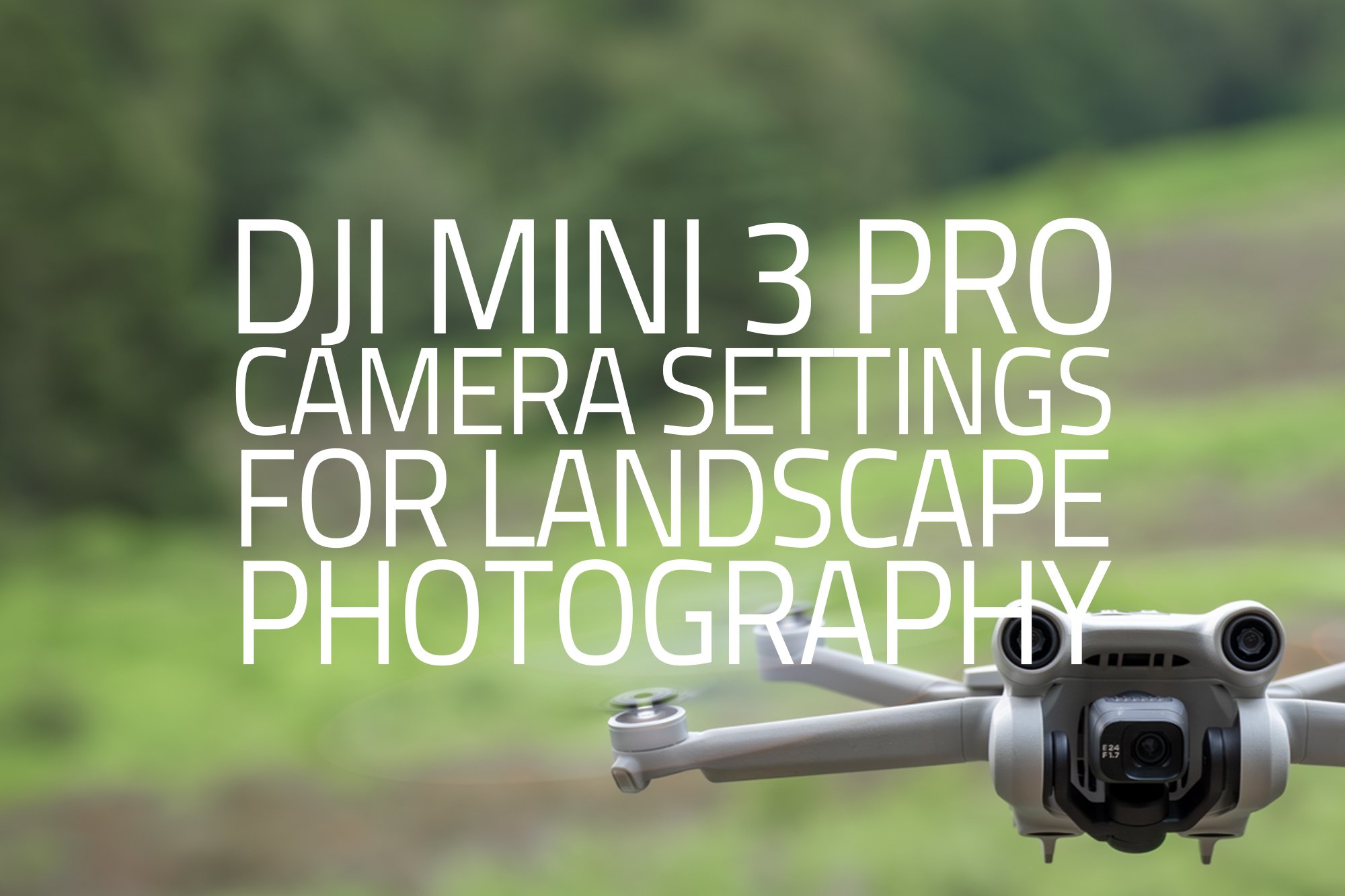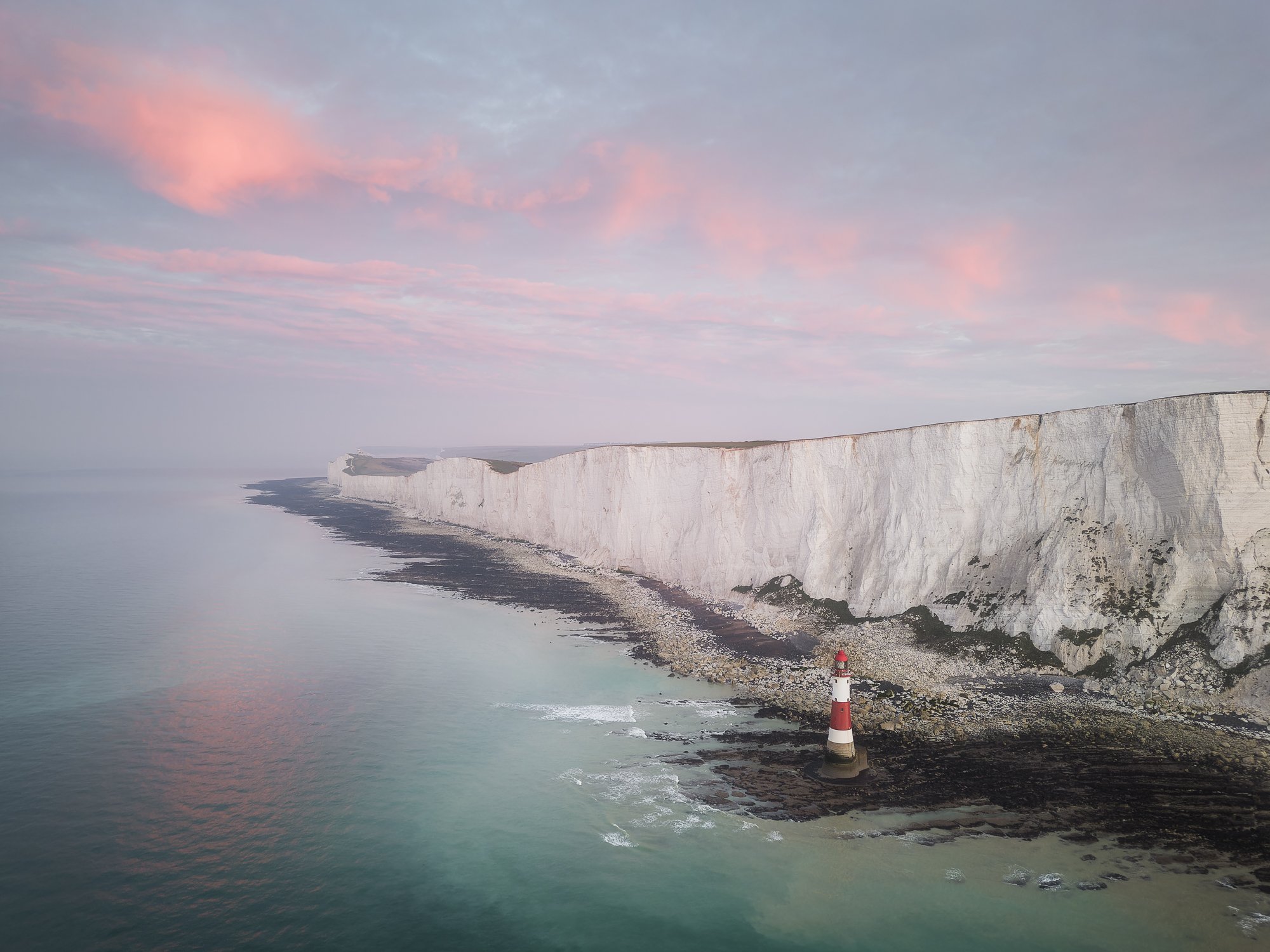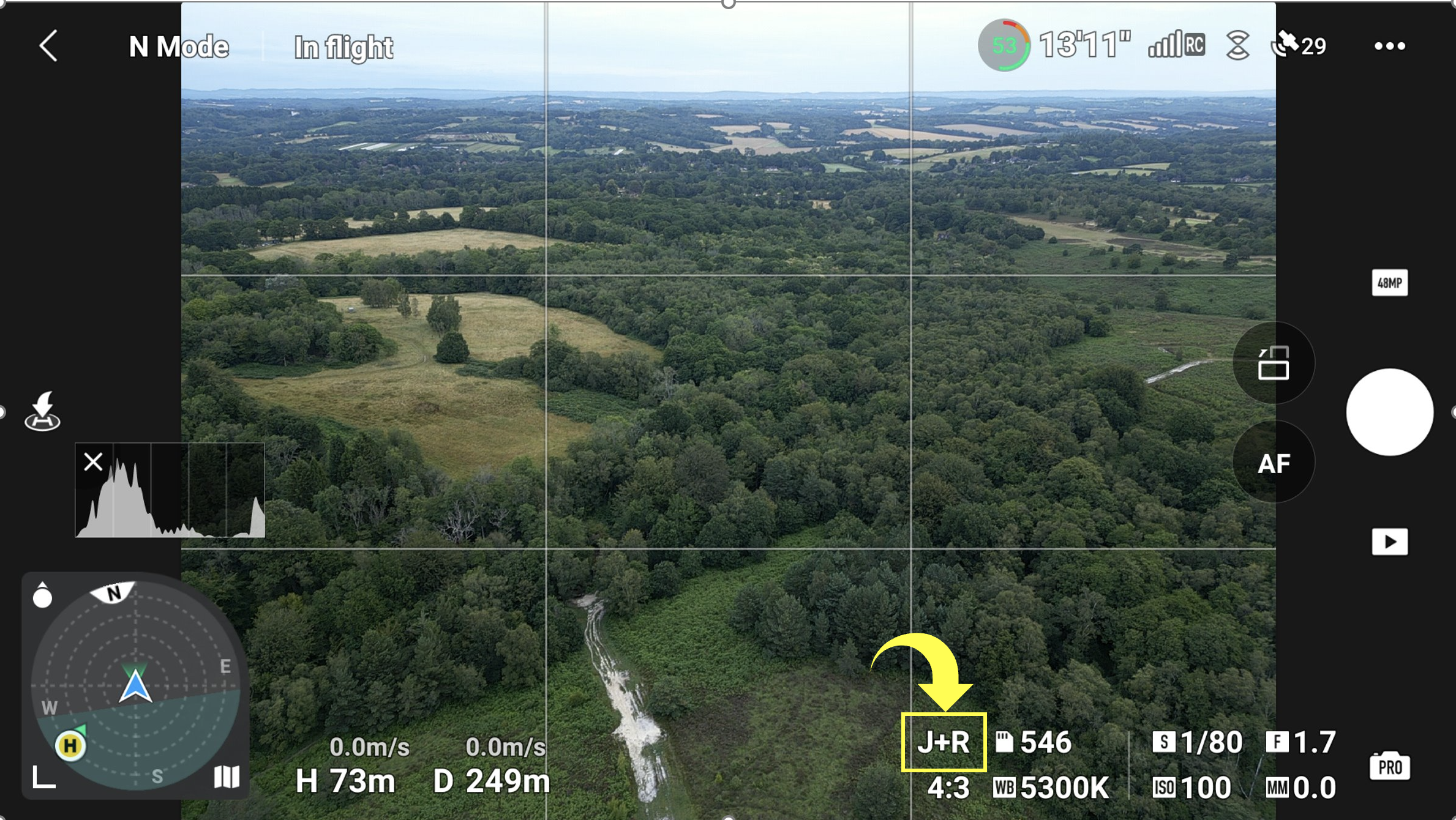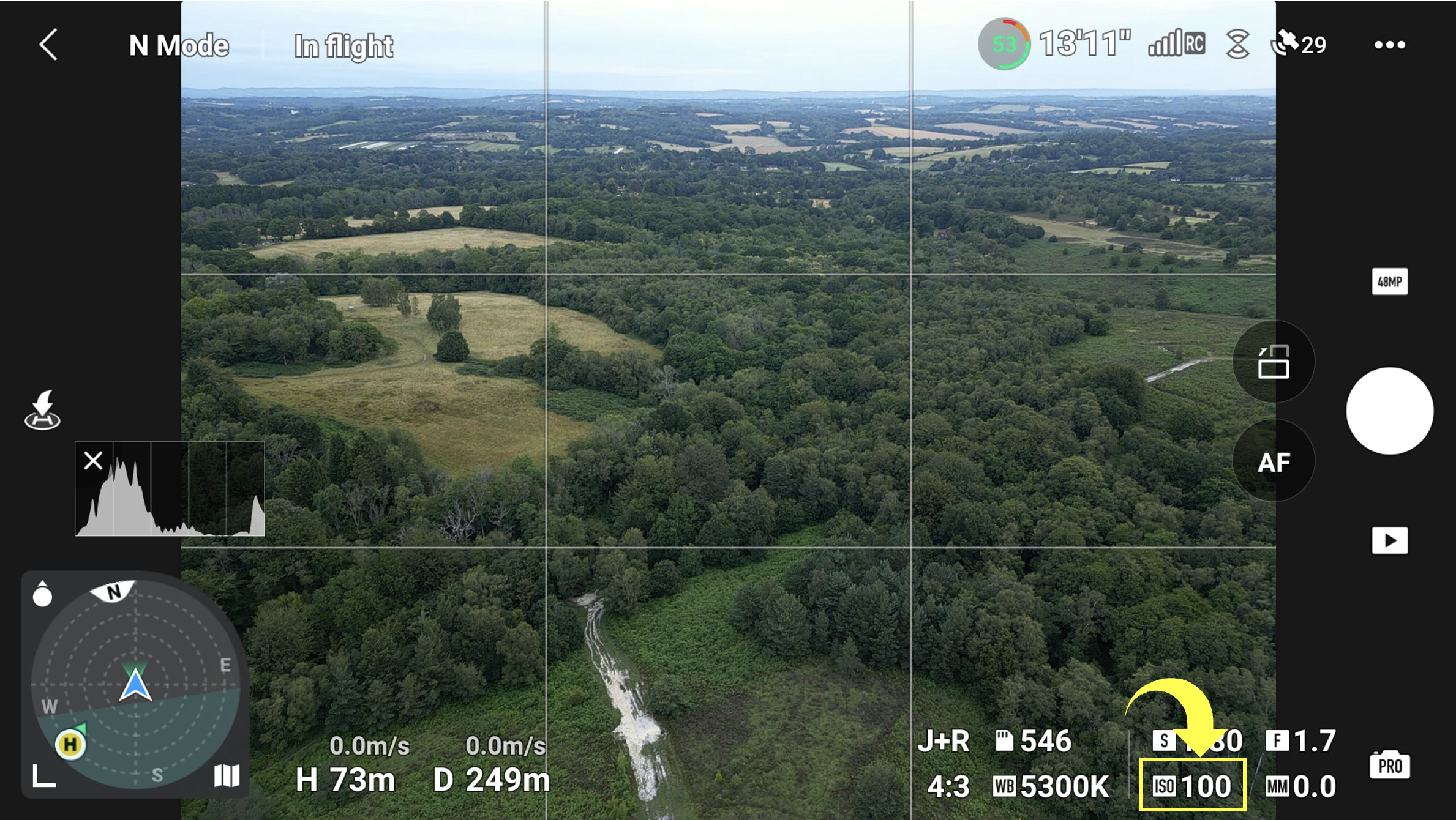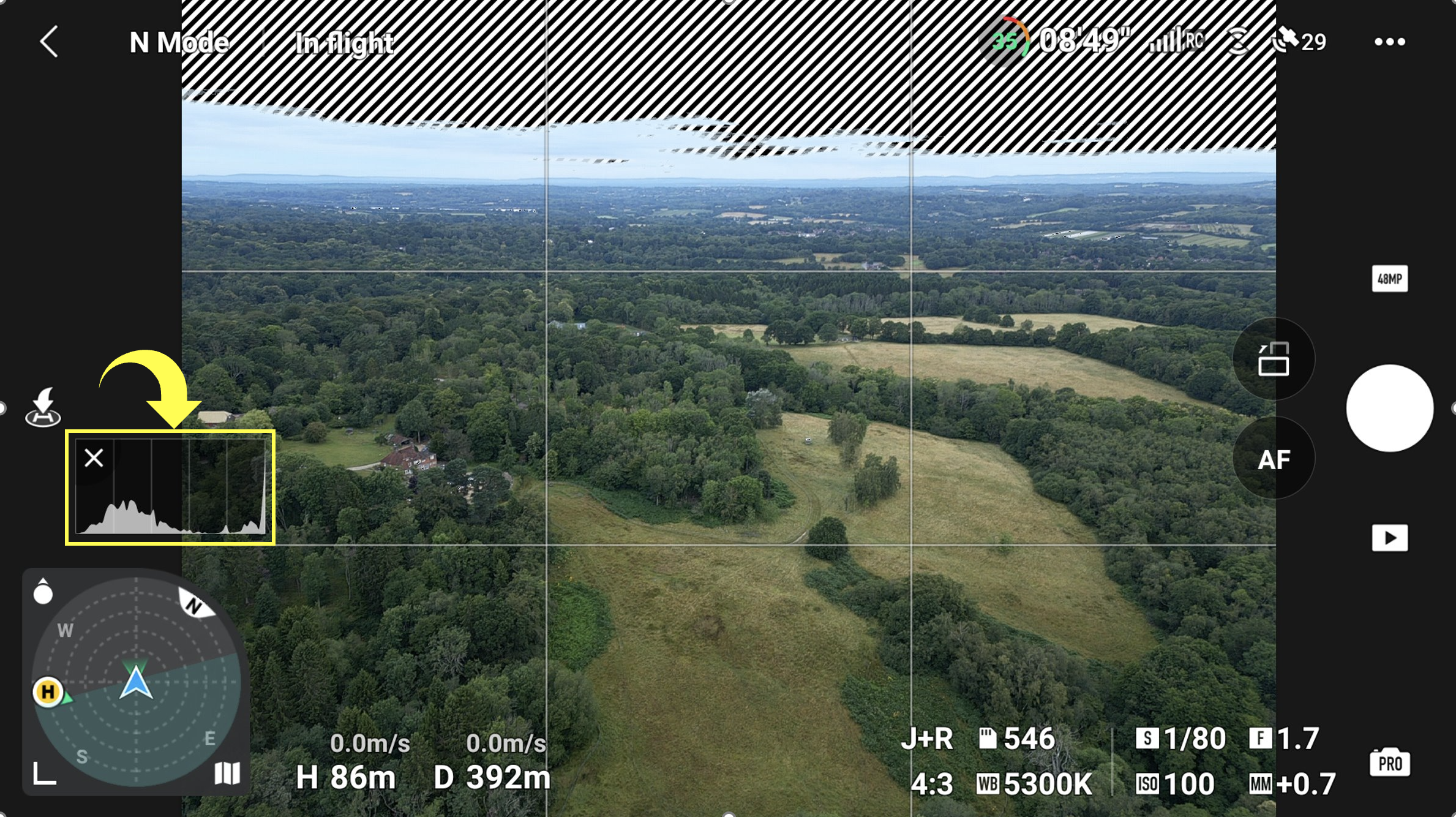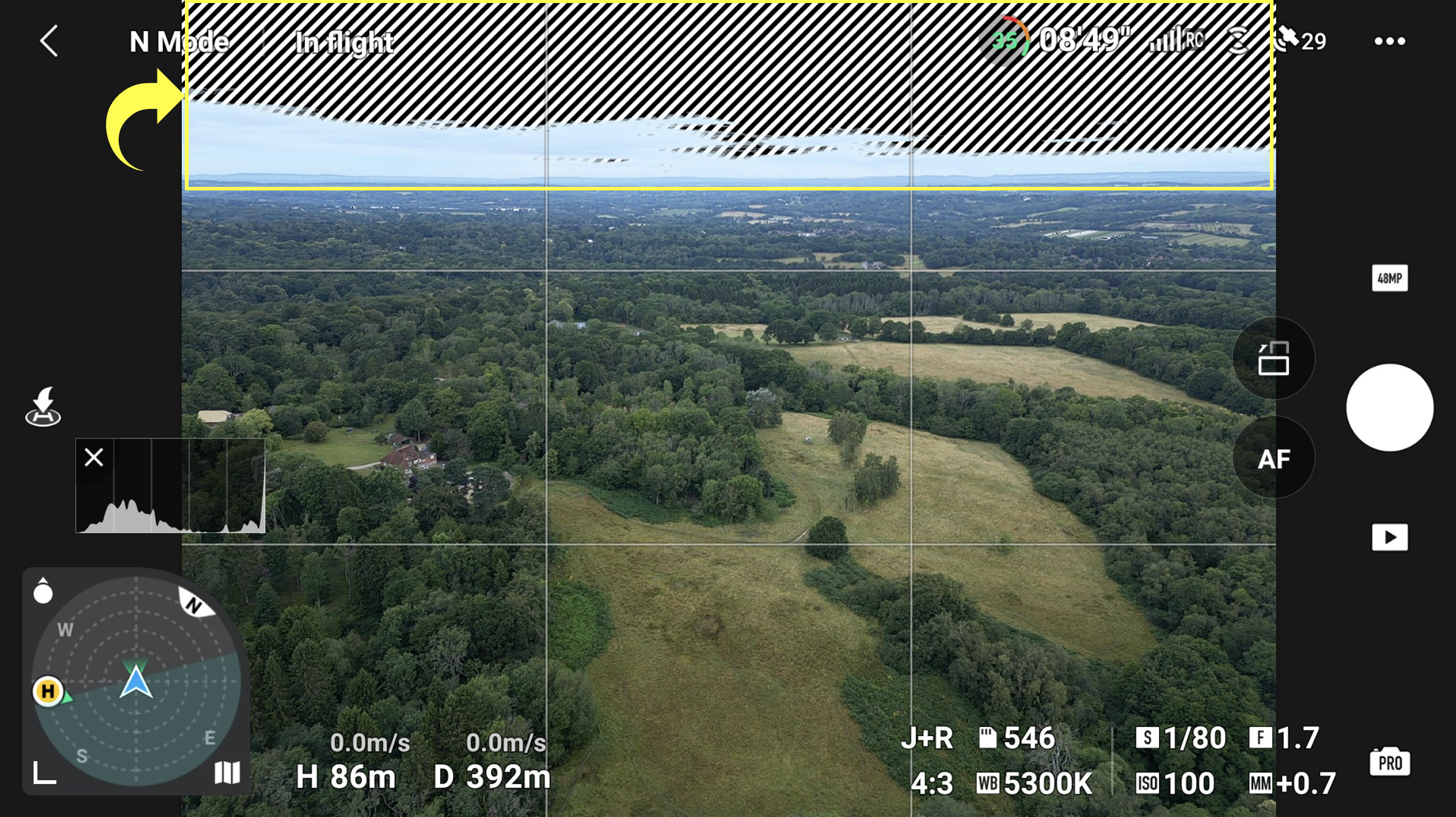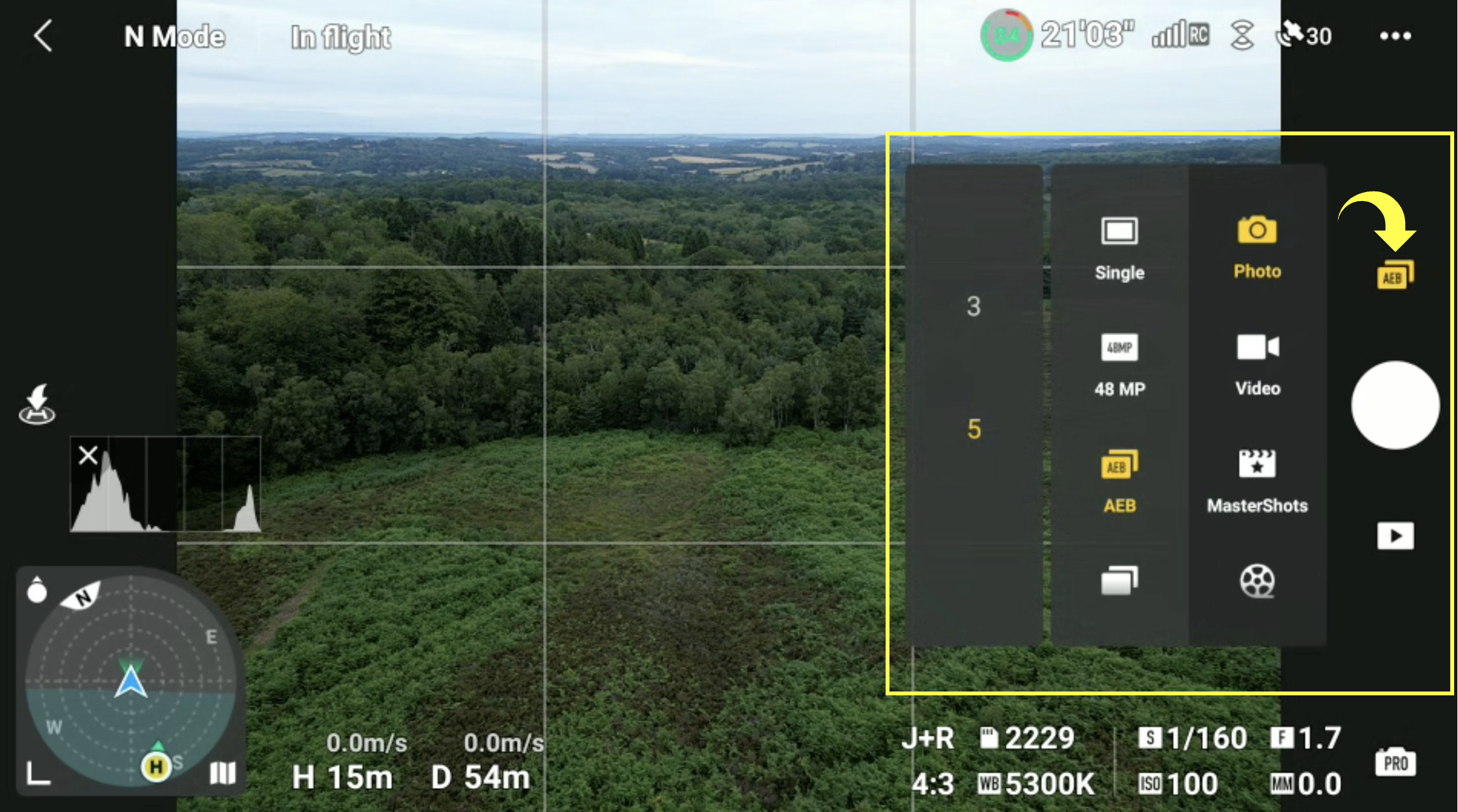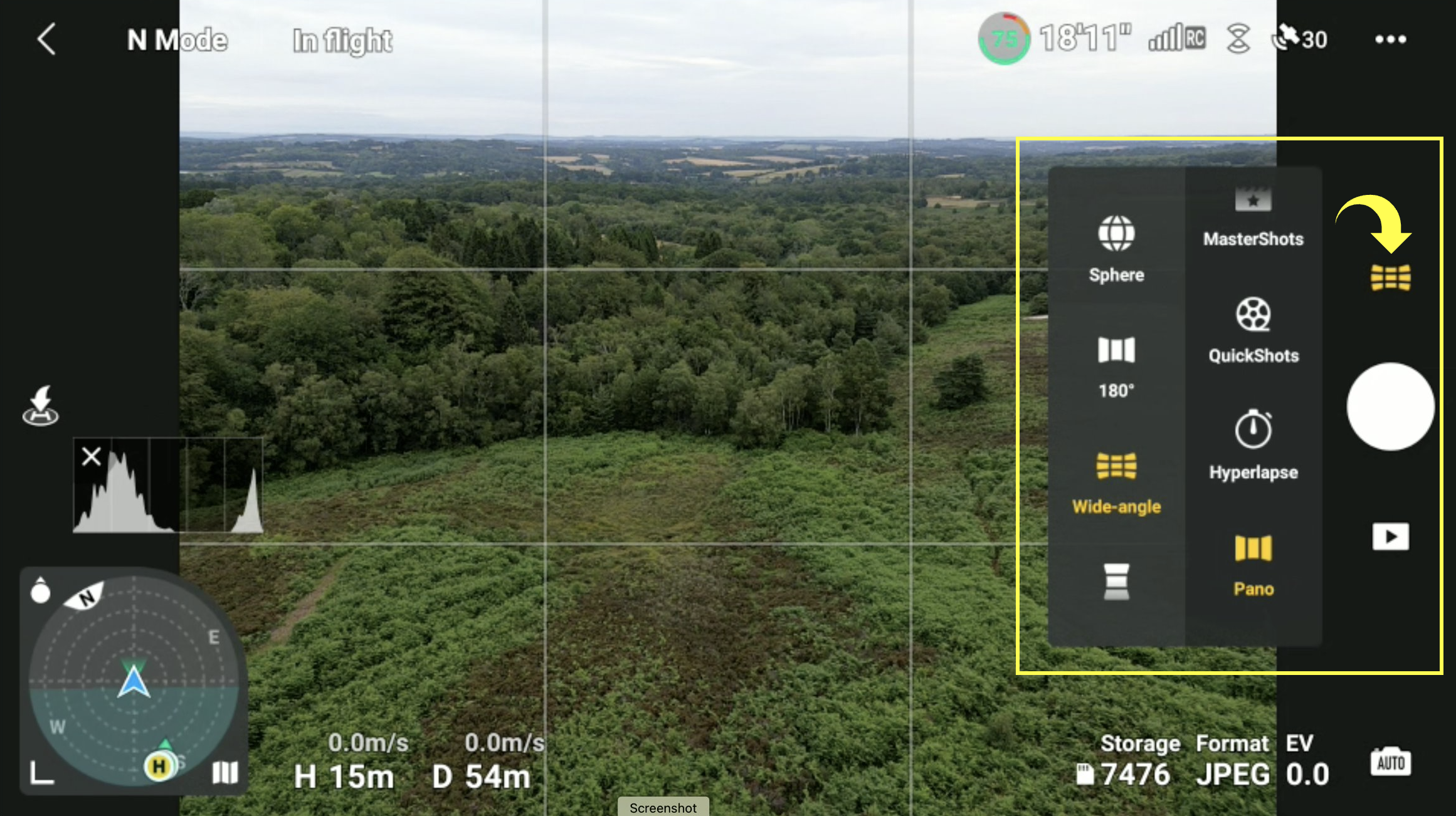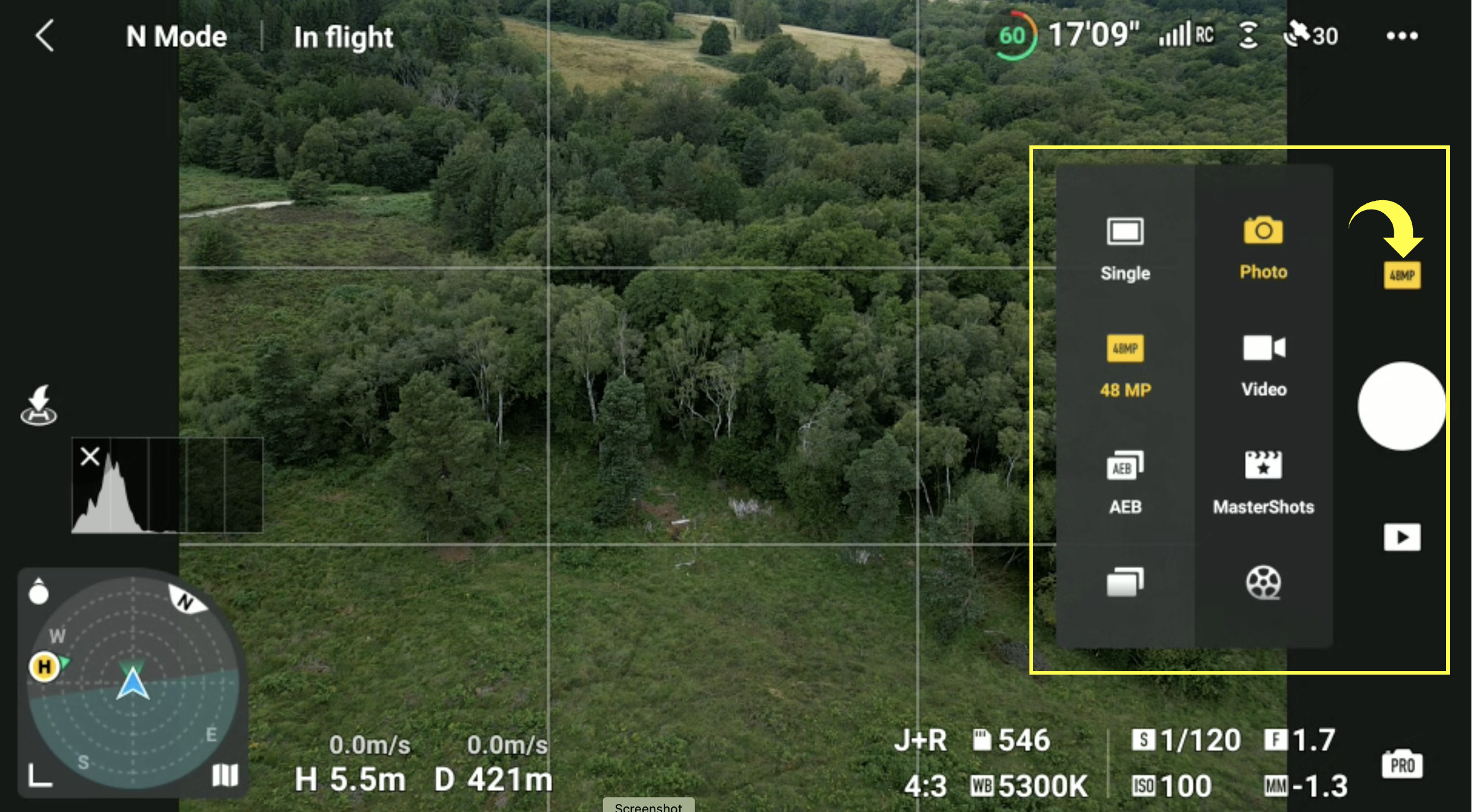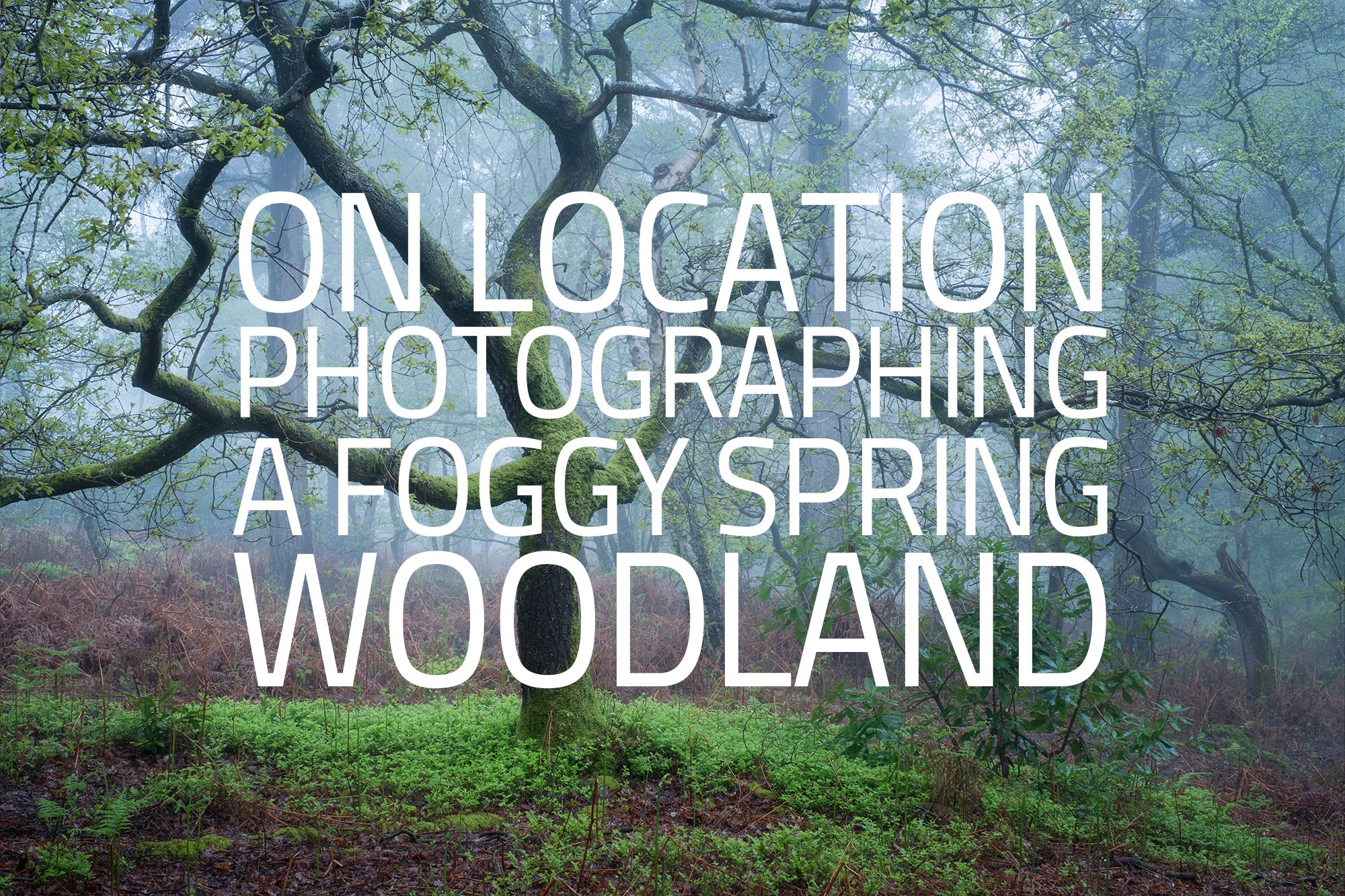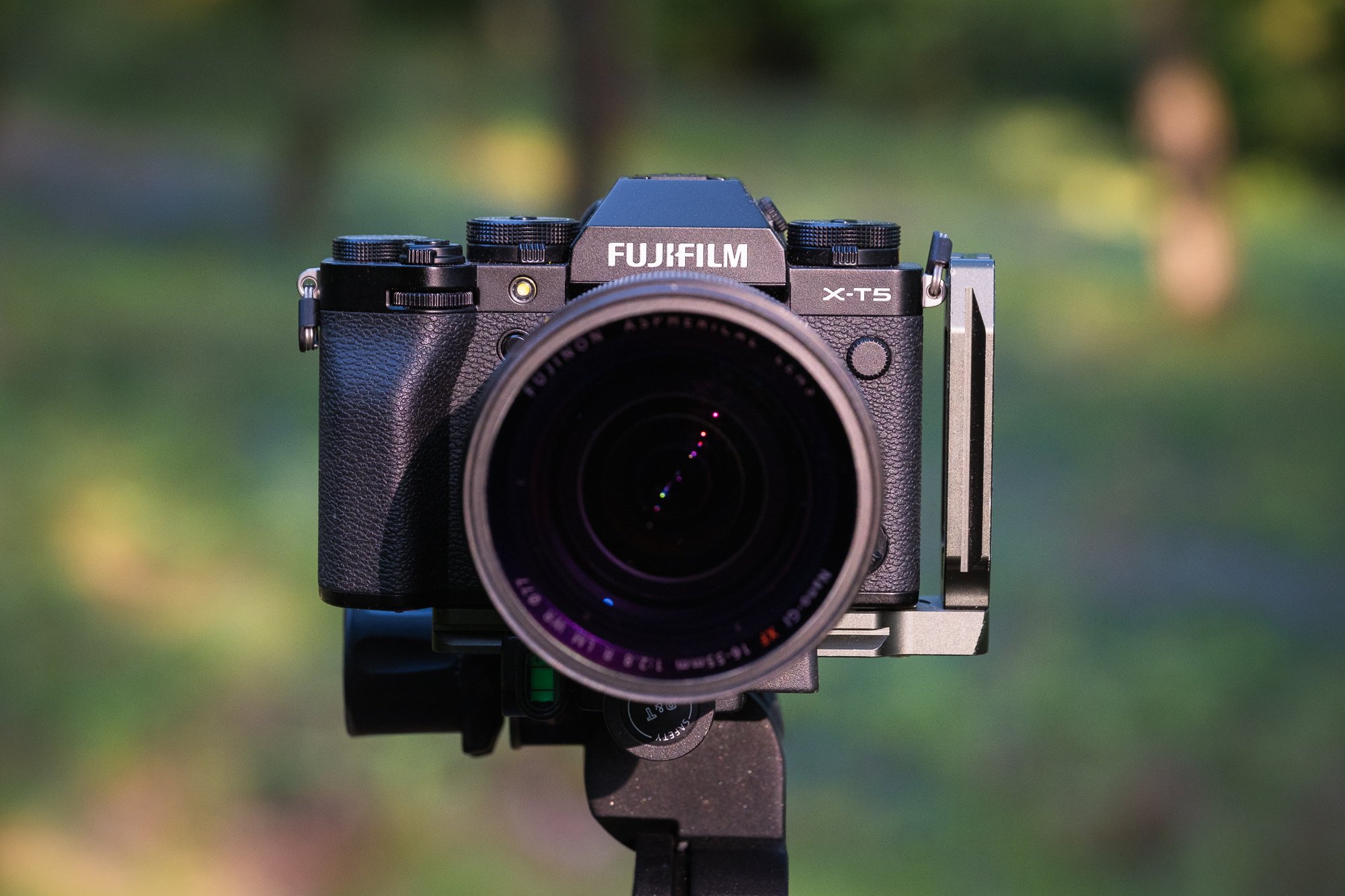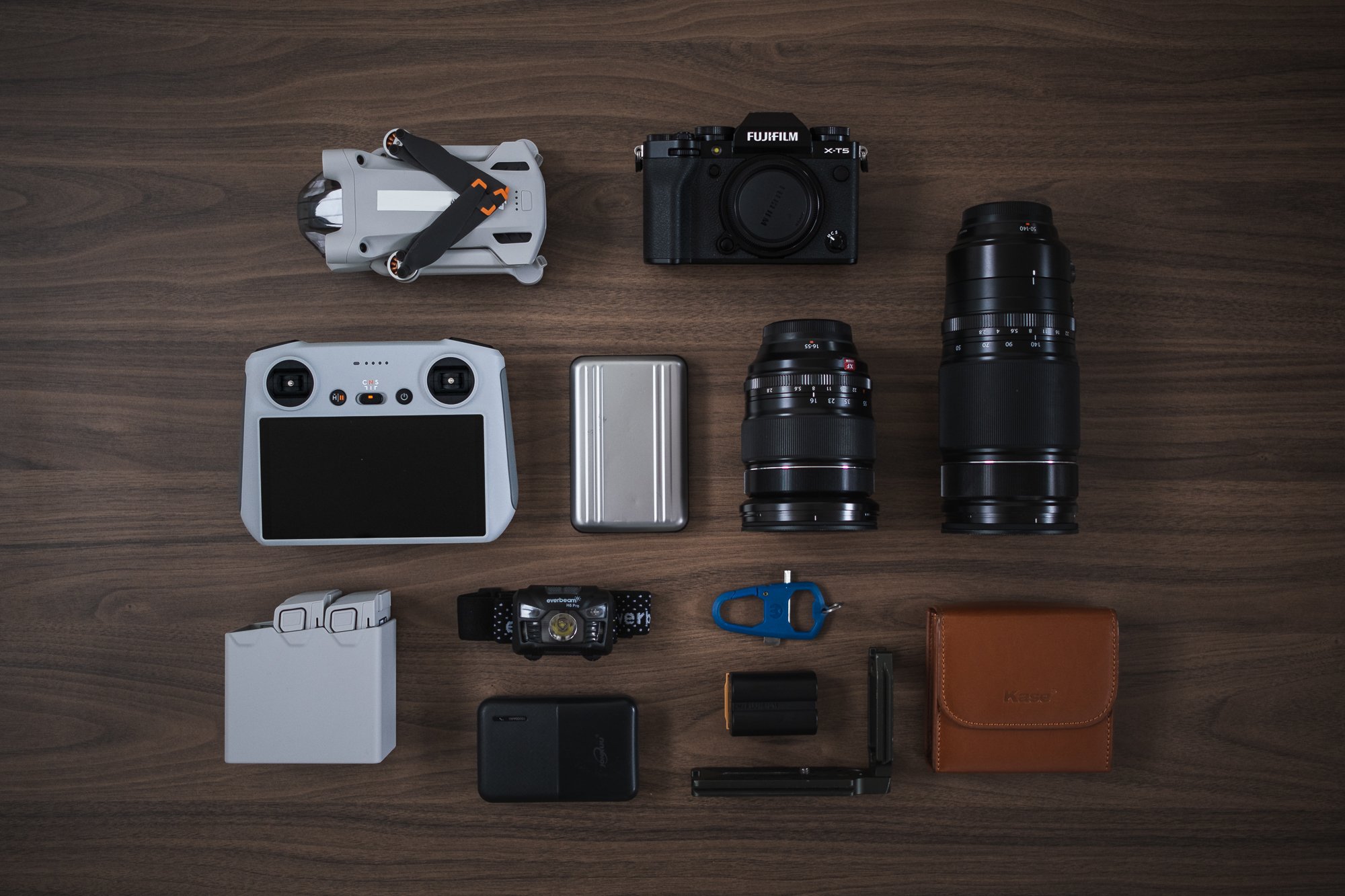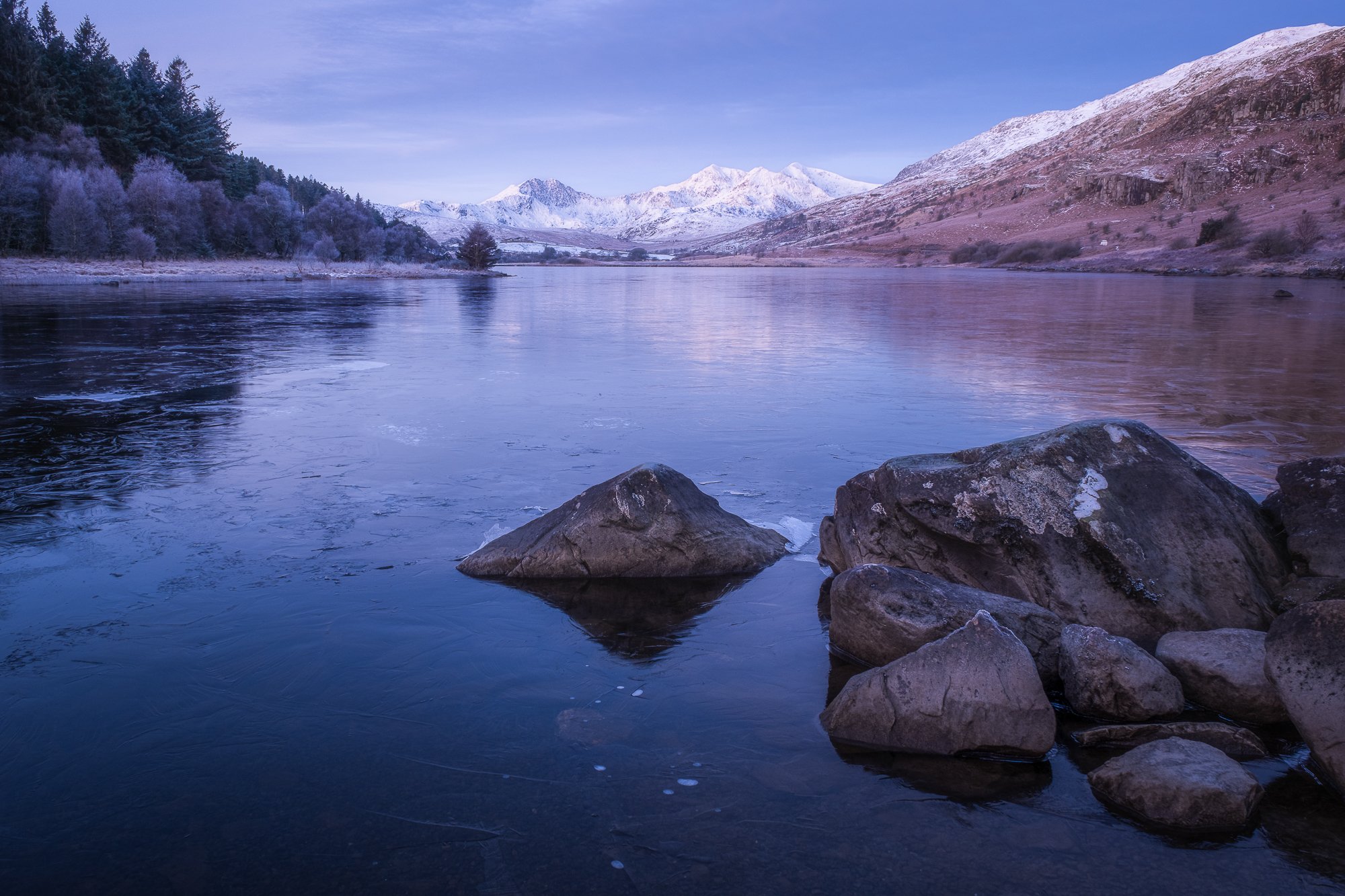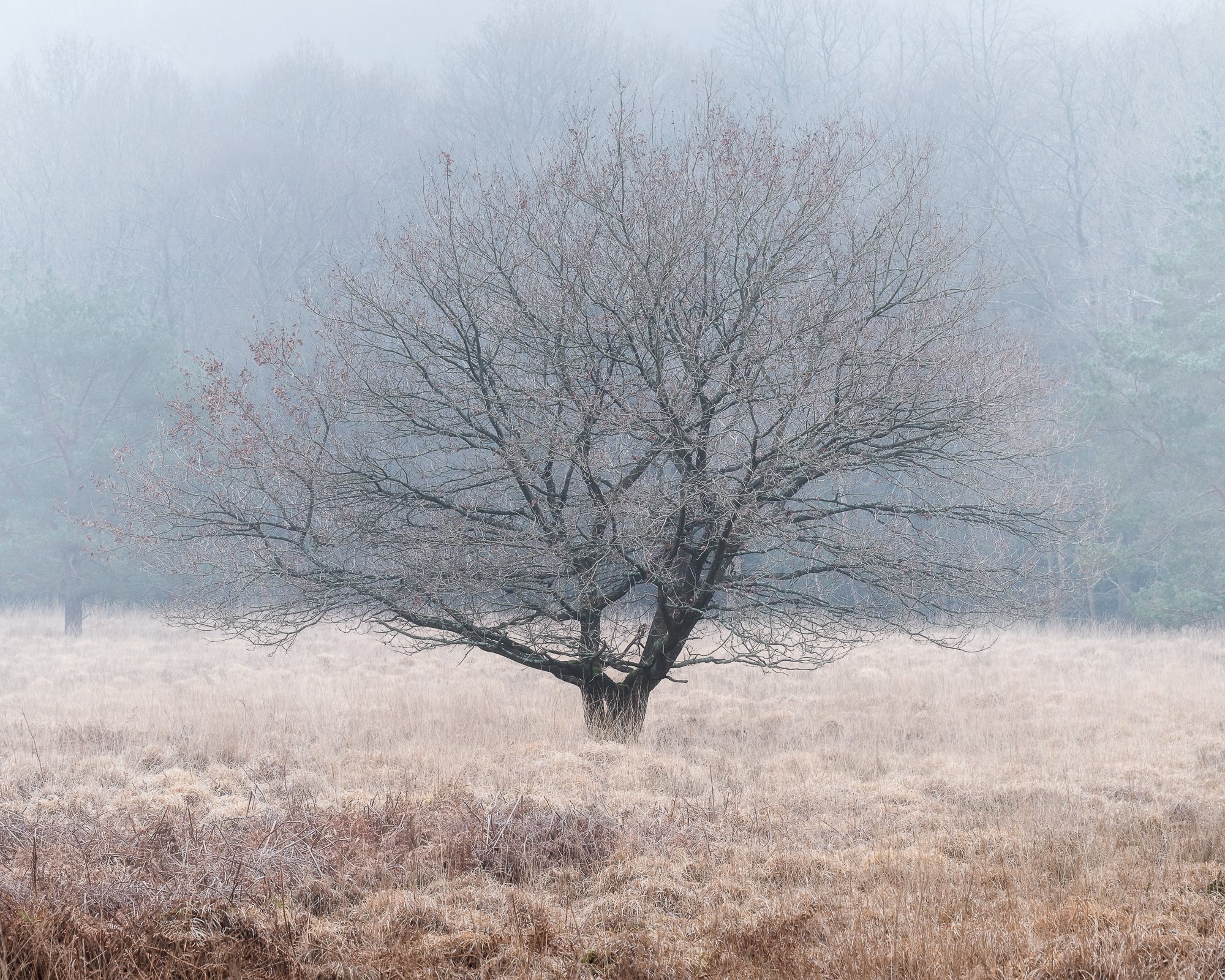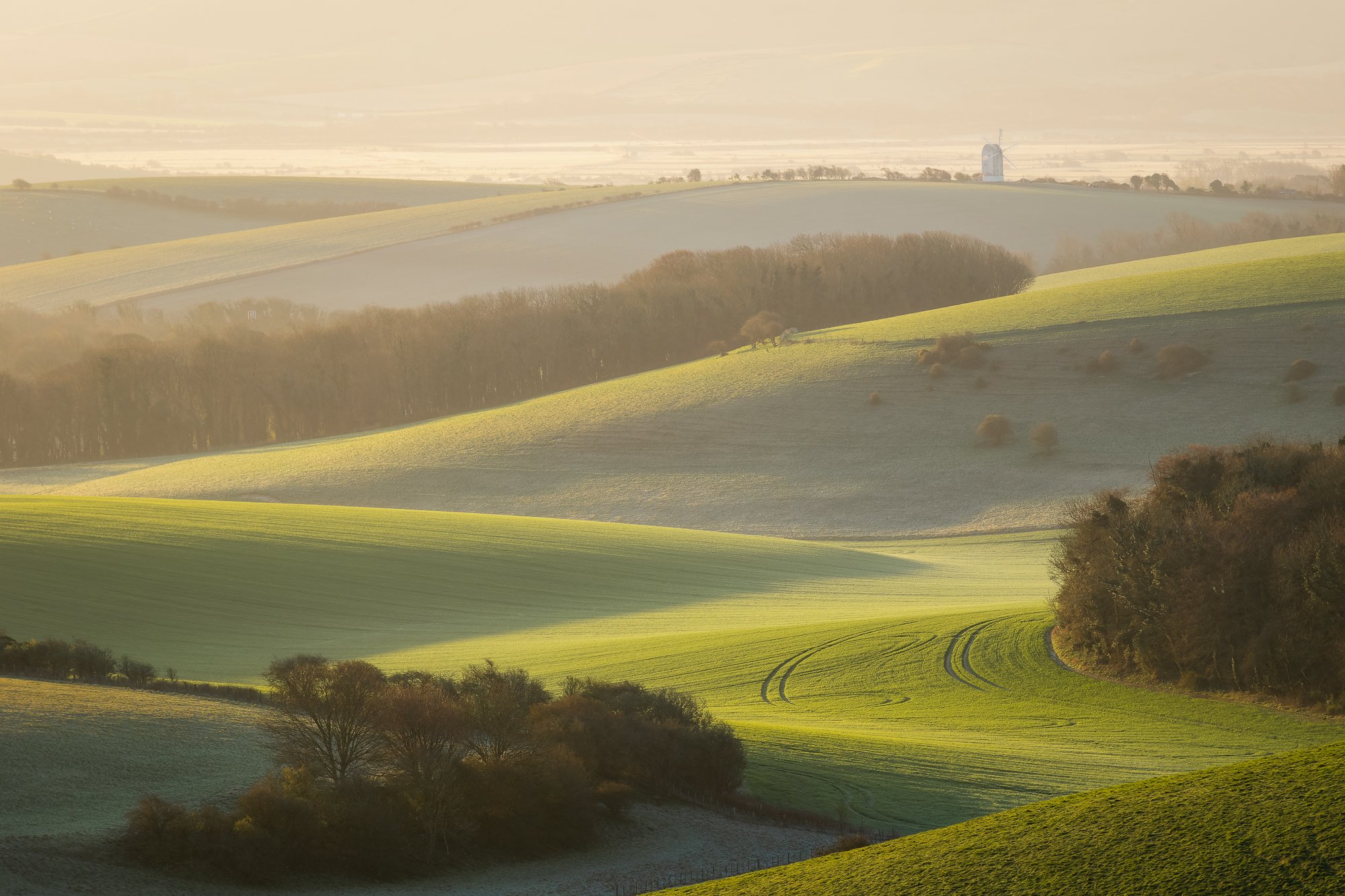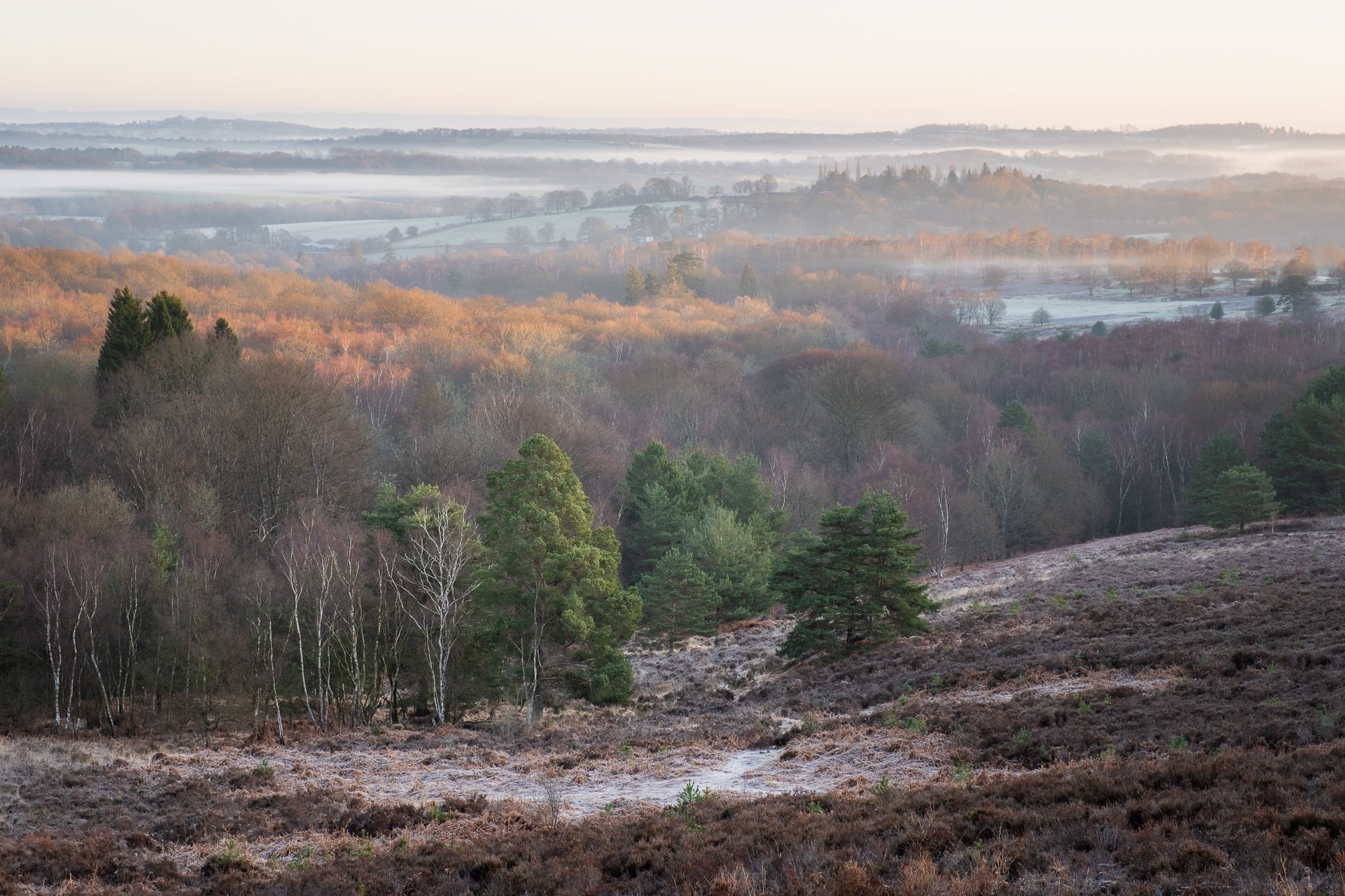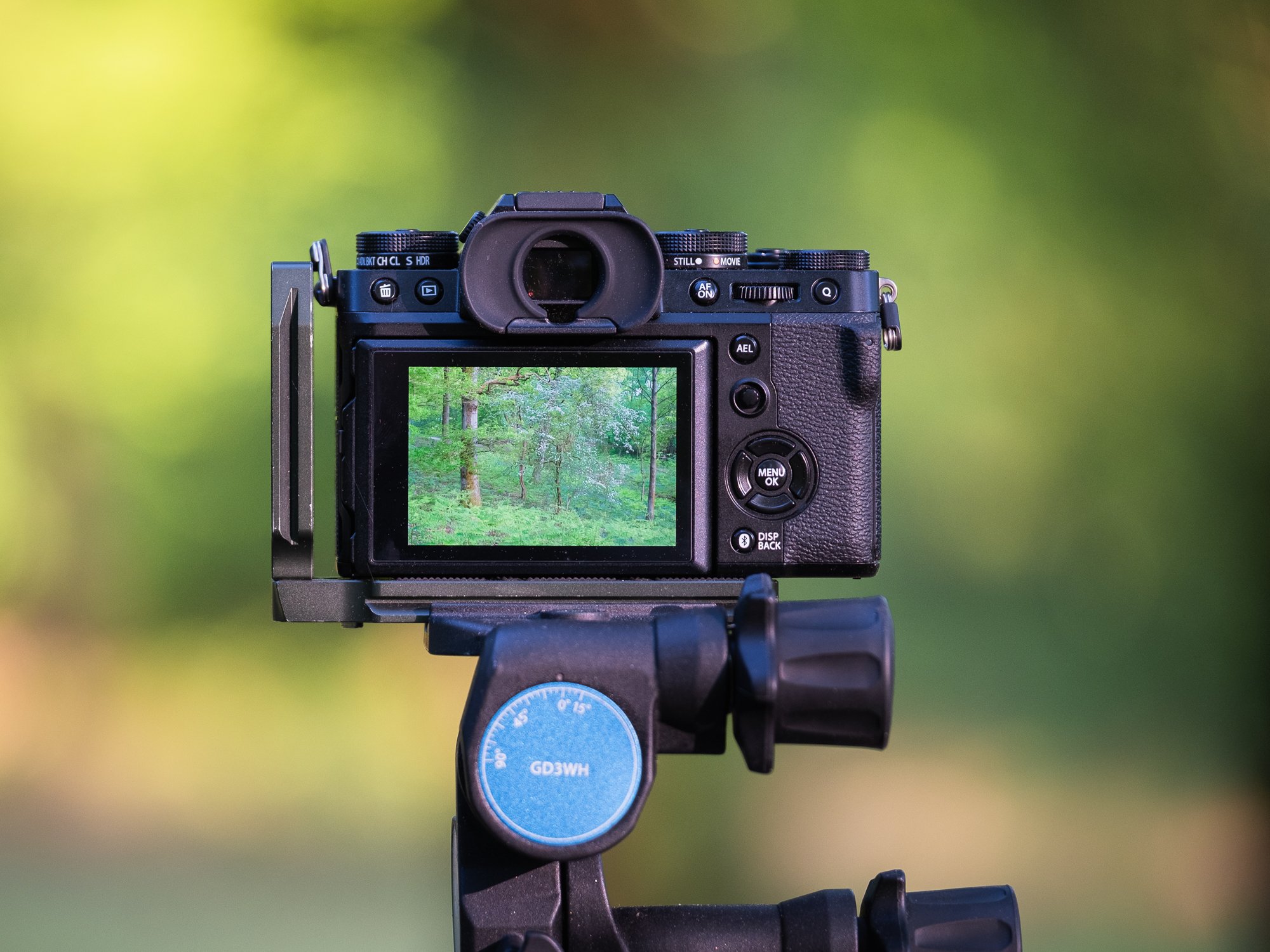BLOG ARCHIVE
My Favourite Landscape Photos from 2023
I look back at the landscape photos I took in 2023, choose a few favourites and think about what I want to achieve in 2024.
I probably start these yearly posts the same way each time but the reason for me to write them never changes. I enjoy these annual retrospectives as they give me a reason to look back at the last 12 months, enjoy some of the photos and relive some of the adventures I had with my camera in tow.
Have you ever listened to some music and it transported you back to a time and a place where you first heard it? You could have been on a big night out with friends, at home on the sofa with someone special or even in the car driving to work. However momentous or mundane the setting, there is now a connection in your mind between that song and the time or place you heard it. That’s what photography does for me. I look back at these photos and yeah, it’s great to have something nice to look at, but adding the recollection of that time I was stood in the woodland, first thing in the morning with the surrounding mist deadening all sound but the birdsong above me, or standing at the edge of a frozen lake in Snowdonia with distant mountains in front of me and the sun just rising, illuminating the peaks. That is something else altogether. However much I feel that photography is a way to express myself artistically, they are all connections to a time and place where I felt the moment was special enough to capture and keep forever.
So, to sum up, I get as much, if not more joy from writing these yearly posts than anyone might get from reading them.
The Woodland
I think 2023 was the first year since photographing landscapes that I spent more time capturing the woodland than the grand landscape. I really have put a shift in. I’ve made so many early morning trips into my local forest this year and between all that effort, practice and getting to know the woodland properly, I feel my woodland photography has progressed significantly in 2023.
Fujifilm XT5 | XF16-55mm | 23mm | 0.8 Seconds | f/10 | ISO400
Fujifilm XT5 | XF16-55mm | 26mm | 0.5 Seconds | f/7.1 | ISO125
Fujifilm XT5 | XF16-55mm | 35mm | 1/10th Second | f/7.1 | ISO400
Fujifilm XT5 | XF16-55mm | 34mm | 1/3rd Second | f/8 | ISO125
This year, I started to think about how so many of my photos never see the light of day and decided that I wanted to release more of these photos in the form of on-location blog posts. They’re not supposed to be too overwhelming, but just enough to feature the handful of photos I might take on a successful photography outing. Here are a couple of blog posts I wrote about my trips into the woodland.
London’s Cityscape
I was quite productive when photographing London in 2023, but not in my usual way. Ordinarily, I seek the wider, epic cityscape with dramatic clouds or vivid colours in the sky. This year was a bit different as I’ve not taken as many of what some might call my traditional style of cityscape photo. So, why was it productive if I didn’t take as many of my usual cityscape photos? Check out the section towards the end of this post featuring my Timeless City project.
I still managed, however, to bag a few keepers on my many outings into the Big Smoke and I’ve shared some of my favourites below.
Fujifilm XT5 | XF16-55mm | 16mm | 1/13th Second | f/8 | ISO125
Fujifilm XT5 | XF10-24mm | 10mm | 1/40th Second | f/11 | ISO125
Fujifilm XT5 | XF16-55mm | 16mm | 1/1000th Second | f/6.4 | ISO125
Fujifilm XT5 | XF10-24mm | 10mm | 1/100th Second | f/4 | ISO125
Fujifilm XT5 | XF16-55mm | 16mm | 2.5 Seconds | f/13 | ISO125
The Landscape
I always like to share some of the traditional landscape photos I took during the previous 12 months, but this past year, I struggled a little. With the shift to taking more woodland photos and recently feeling a little uninspired by my local landscape, I didn’t make as many trips and subsequently as many landscape photos as I normally do.
I did take a few worth sharing though, often revisiting some of my regular locations in the area to document how they have changed over time or through the different seasons. It’s something I do more and more these days. When I get to a location I like, I will revisit it time and again to try to improve on the photos I’ve taken before, or like I have been doing with the view of the low-lying woodland below, taking photos throughout the year as a mini seasonal project.
Fujifilm XT5 | XF16-55mm | 16mm | 0.4 Seconds | f/11 | ISO125
Fujifilm XT5 | XF16-55mm | 35mm | 1/10th Second | f/6.4 | ISO400
Fujifilm XT5 | XF50-140mm | 56mm | 1/10th Second | f/9 | ISO125
Fujifilm XT5 | XF50-140mm | 140mm | 1/80th Second | f/8 | ISO125
The Small Scenes
I thoroughly enjoy photographing small scenes like this and in 2023, I managed to take a handful of photos I like, some I’ve shared below.
I do, however, feel I lost my way a little when photographing the small scenes over the last 12 months. I believe that to photograph the details around me, I need to practice seeing them, looking down more often at what’s around my feet and working harder to notice nature’s textures and patterns that surround me every day. I just don’t think I did enough of that. It’s not about the number of photos I took, more that if I’m tuned in better to the details, I will spot them more often instead of just walking by. Something for me to work on in 2024.
Fujifilm XT5 | XF50-140mm | 140mm | 1/8th Second | f/9 | ISO125
Fujifilm XT5 | XF50-140mm | 134mm | 1/15th Second | f/9 | ISO125
Fujifilm XT5 | XF16-55mm | 55mm | 0.6 Seconds | f/8 | ISO125
Fujifilm XT5 | XF50-140mm | 140mm | 1/25th Second | f/2.8 | ISO125
The Drone
I have thoroughly enjoyed taking landscape photos with my done this year, but having only owned one since late 2022, it became apparent quickly that taking landscape photos with a drone was going to take a different approach altogether. There was quite a learning curve involved. With so much time spent photographing woodlands, not many of my dedicated landscape photography outings allowed for drone photography, but when they did, I took the opportunity and ended up with a handful of photos I particularly like.
If there’s one thing I want to take more photos with in 2024, it’s my drone, so I’ll be working hard to achieve that over the next 12 months.
DJI Mini 3 Pro | 24mm (effective) | 1/8000th Second | f/1.7 | ISO100
DJI Mini 3 Pro | 24mm (effective) | 1/30th Second | f/1.7 | ISO100
DJI Mini 3 Pro | 24mm Pano | 0.4 Seconds | f/1.7 | ISO100
Photographing Wales
With some beautiful woodland, rolling hills and chalk-lined coastlines, the Southeast of England has a lot to offer the landscape photographer, but what we don’t have is mountains and waterfalls and those lucky sods in Wales have ample amounts of both. So, over the last few years, I’ve been making multiple photography trips to both the Brecon Beacons and Snowdonia National Parks to get my fix of a more rugged landscape.
Since these were dedicated photography trips, I also wrote a couple of On Location blog posts that include more of the photos I took and some behind-the-lens stories. Select one of the thumbnails below to jump straight to that blog post.
A Landscape Photography Trip to Snowdonia
In January 2023, I spent a couple of days photographing a very wintry-looking Snowdonia. Barely scratching the surface, it was my first dedicated photography trip to this stunning location, learning lots along the way and getting to know the area as best I could in the short time I had. With any hope, the more times I visit, the better my photos will be, but as I just mentioned, this being my first trip dedicated to landscape photography, I’m still pleased with the photos I took.
Fujifilm XT5 | XF16-55mm | 18mm | 2 Seconds | f/8 | ISO125
Fujifilm XT5 | XF16-55mm | 16mm | 1/4th Second | f/5 | ISO125
Fujifilm XT5 | XF50-140mm | 54mm | 1/200th Second | f/9 | ISO200
Fujifilm XT5 | XF16-55mm | 16mm | 13 Seconds | f/8 | ISO200
Photographing Waterfall Country
Along with Snowdonia in January, I also took a trip to the Brecon Beacons National Park in October. Given the time of year, I was hoping for a little more colour on the trees, but the leaves were still predominantly green. Still, I made the best of it, taking some photos I was happy with, and I mentally clocked that to get the best colour, it will have to be an early-mid November trip next time.
Fujifilm XT5 | XF10-24mm | 14mm | 0.5 Seconds | f/9 | ISO125
Fujifilm XT5 | XF10-24mm | 10mm | 1/6th Second | f/8 | ISO125
Fujifilm XT5 | XF10-24mm | 10mm | 1/5th Second | f/7.1 | ISO400
Fujifilm XT5 | XF10-24mm | 15mm | 50 Seconds | f/10 | ISO125
Timeless City
I started the Timeless City project this year and was excited about it from the first photo I processed. I’ve been documenting London with my camera for a few years, making countless trips into the city and I feel I have finally found a way that allows me to share the photography as a cohesive body of work.
I deliberately used the word timeless as it represents so much about the project. The years I’ve been and will continue to photograph this great city, the way the old and new architectural styles sit side by side, and the aesthetic of the final image I create with the square crop and monochrome processing. All of it matters and represents something in the project.
I know the project has a way to go yet, not only in terms of the images I take but what it means and how it might develop. For now, I’m just excited to let it flow and see where it takes me.
Looking forward
As I mentioned at the start of this post, I usually spend a little time looking forward and thinking about what I want to achieve in the coming 12 months. Rightly or wrongly, these aspirations are relatively fluid as time is always limited and priorities can change. However, right here, right now, I’ve listed a few things I would like to achieve or make progress on in 2024.
Be it the woodland, cityscapes or small scenes, continue to be curious and inspired by the landscape.
Take more trips and make more memories to look back on in 12 months.
Be more consistent with both my blog and newsletter.
Publish my first book/zine and with hope, sell one or two.
Develop my Timeless City project further. Write about it, give it a dedicated space on my website, promote it and continue to build the work in preparation for something more in the future.
Print my photos more often.
Take photos with my drone more often.
Complete some of my seasonal woodland/landscape series.
There you go. That’s this year’s retrospective done and dusted. All that’s left to do is thank everyone who has supported me and my work this past year and I wish you all a happy and successful 2024.
Until next year.
Trevor
On Location Photographing Waterfall Country
In October 2023, I made a third trip in three years to the Brecon Beacons and spent a fantastic 48 hours taking landscape photos along the two main waterfall trails this national park has to offer.
Having made trips to the waterfalls in the Brecon Beacons twice before in 2021 and 2022, it seems these excursions are becoming an annual event, because just a few weeks ago, in late October 2023, I set off with my camera to spend a couple of days hiking the waterfalls once again.
On my previous two trips, I spent most of my time walking and photographing along the Four Falls Trail. This is probably the most popular of the main waterfall trails in the Brecon Beacons as it features some of the more dramatic falls, so it made sense that on those trips, I would focus a lot of my attention on these.
I’m a big believer that to get the very best photos possible, you should try to get to know the location well, and if I tried to cram too much in those previous trips while still being new to the location, I feel I couldn’t possibly take my best photos. I’d prefer to come away with just a few keepers instead of a much larger collection of average photos.
This time around, however, I felt that I had gotten to know the Four Falls Trail well enough to incorporate another trail into trip. So, I decided to include a couple of hikes along the Elidir Trail into the weekend.
If you’re after a bit more reading (after this one of course), I wrote another on-location post about my previous trip in spring 2022, which not only features the photos I took, but also includes some info about where best to park when heading to the Four Falls Trail. Click on the blog’s thumbnail to read that previous post.
What was in my camera bag for this trip?
For those interested in the gear I took, the picture below covers everything with just one exception. The image below is reused from my “What’s in my camera bag 2023” blog post, which features the XF16-55mm standard zoom and XF50-140mm telephoto. Since publishing that post in January 2023, I’ve added the wide-angle XF10-24mm WR to my collection, and I’m glad I did because it ended up being the lens I used most on this trip.
With the wide-angle lens now in my bag, I had all the focal lengths covered and equally as important was that my Fujifilm XT5 camera and all three lenses were weather-sealed, which, given the amount of water spray I had to contend with on this trip, was an absolute necessity.
Alongside my camera, lenses and tripod, the two other pieces of gear I couldn’t do without were my Kase magnetic filters and my head torch. I’ve talked about my Kase filters in a previous blog post here so I won’t go on about them too much here. The circular polariser was on the end of my lens 99% of the time to help tone down the glare reflecting off the water and I used my neutral density filters to help slow down the shutter speed as needed to get the texture I wanted in the water.
Regarding the head torch; let’s just say that no landscape photographer should head out without one in their bag.
Just a last note before we get into the photos I took. Like with my previous blog post in 2022, I visited some locations multiple times across the weekend but to keep things simple here, I grouped the pictures by location. So, if you see the same falls but in different conditions, now you know why.
Four Falls Trail
In my previous blog post, I mentioned that there is a very small car park which I try to use as it’s a lot closer to the falls than the other two main car parks and thankfully on the two occasions I walked the Four Falls Trail during this visit, I was lucky enough to find a spot there which saved me tons of time walking to and from the falls.
In Autumn 2021, I came across this intimate scene as I wandered down the path from the car park and although the colours weren’t quite as vibrant this time around, I still made a point of stopping to take another picture. I wasn’t convinced that there was a photo here until I played with the shutter speed a little until I had just the right amount of texture in the water. It’s an understated photo but I just love the feathery nature of the water and I’m pleased I decided to stop and take the shot.
Fujifilm XT5 | XF16-55mm | 16mm | 1.3 Seconds | f/9 | ISO125
Photographing Sgwd Isaf Clun-Gwyn Waterfall
My first stop was at Sgwd Isaf Clun-Gwyn (lower fall of the white meadow) and photographically, it’s by far my favourite along this trail. From the top to the bottom, it has so many compositional opportunities and I have spent more time photographing this waterfall than any others in the Brecon Beacons.
The official waterfall trail follows the eastern side of the river, but I think the best views of Sgwd Isaf Clun-Gwyn are from the western side. From here you can take in the scale of this 20-metre cascade but, it’s a lot trickier to get to and involves a bit of a scramble down a rather steep drop which should only be attempted by someone fit and sure-footed.
Pointing the camera downstream when photographing waterfalls doesn’t always work as you can lose some of the impact from the subject and the eye doesn't always have somewhere to go and rest on, but in the case of these two photos below, I think it does work as there is a visual flow, leading you from the interesting foreground, down the cascades and along the river. So, there is plenty of depth and most importantly, the eye is not led out of the image.
Fujifilm XT5 | XF10-24mm | 10mm | 1/6th Second | f/7.1 | ISO125
Fujifilm XT5 | XF10-24mm | 10mm | 1/6th Second | f/7.1 | ISO125
One thing I’ve not yet mentioned is just how much rain had fallen on the days leading up to my trip. The water was gushing down the valley and along with some gusty wind creating a lot of spray, it made for some tricky shooting conditions. I soaked a lot of lens cloths while taking this front-on composition of Sgwd Isaf Clun-Gwyn as the spray was relentless, but I’m glad I persevered as I managed to take one of my favourite photos from the trip.
Fujifilm XT5 | XF10-24mm | 10mm | 1/6th Second | f/5 | ISO125
Fujifilm XT5 | XF10-24mm | 13mm | 1/6th Second | f/5 | ISO125
The final photo of Sgwd Isaf Clun-Gwyn was taken at the foot of the cascades and ordinarily, I would have liked to get a slightly better view looking up the falls, but the water level was so high and the current so strong, this is as far left as I could get. So, I dropped the tripod lower to the ground and focused on capturing some foreground details, with the falls becoming more of a backdrop than the main subject.
Fujifilm XT5 | XF10-24mm | 10mm | 0.5 Seconds | f/8 | ISO400
Photographing Sgwd y Pannwr Waterfall
Travelling just a short distance downstream is Sgwd y Pannwr ('fall of the fuller' or 'fall of the woollen washer'). I started off at the top of waterfall with a composition I tried on my previous visit. I like the way the water falling over the long gully cleads the eye into the frame towards the tree. I would like to have a little more of the tree in the frame but any higher and the sky bursts into the image and is far too distracting.
Fujifilm XT5 | XF10-24mm | 11mm | 1/3rd Second | f/6.4 | ISO125
Following a path around the waterfall, I made my way to the other side to get a front-on view of Sgwd y Pannwr. My plan here was to drop down to the edge of the water and try to incorporate some interesting foreground, but again, with so much water, it was hard to get close and where I could, the higher water level meant that anything interesting I could use was covered. I just couldn’t find a composition I liked. So, with the sun now rising and the warmer light helping to bring out some of those early autumnal colours, I stacked an ND filter on top of my CPL and took this long exposure from a higher vantage point.
Did I mention it was a bit windy? To get the silky-smooth water but super sharp leaves, I took two separate photos. A four-second exposure for the water and a 0.4-second exposure to freeze some of the movement in the trees. I then blended the two together in Photoshop. It’s a technique I had to use a few times on this trip.
Fujifilm XT5 | XF16-55mm | 18mm | 0.4 Seconds/4 Seconds | f/8 | ISO125
Photographing Sgwd Yr Eira Waterfall
A bit further down the trail is Sgwd Yr Eira (Waterfall of the snow). Probably the most popular because it’s the only waterfall along the trail you can walk behind, I made a point to visit this one first thing in the morning as once other people start to arrive, it can be difficult to keep them out of the photos. So, up before sunrise with the trusty head torch guiding my way, I headed straight to here.
Fujifilm XT5 | XF16-55mm | 19mm | 1/4th Second | f/13 | ISO125
For the photo above, I stood a bit further back from the falls and used a hanging branch to help frame the waterfall which I think works quite well.
Getting a bit closer and wider with the 10-24mm lens, I placed the tripod lower to the water so I could emphasise its energy as it made its way around the rocks in the foreground. Even though I was using the wide-angle lens, I needed to focus-stack this one to get the image sharp from front to back.
Fujifilm XT5 | XF10-24mm | 10mm | 1/5th Second | f/7.1 | ISO400
The last photo from this Sgwd Yr Eira set was taken from the other side of the river. The last time I was here, I could wade across the river but with so much water, I had no choice but to brave the incredibly wet path behind the waterfall. On went the waterproofs and across I went. I got absolutely soaked!
Thankfully, I was able to find a composition I liked and came away with a photo, so it wasn’t all bad.
Fujifilm XT5 | XF10-24mm | 13mm | 1/3rd Second | f/9 | ISO125
The Elidir trail
As I mentioned at the beginning of this post, I felt that this time around I would have the time to visit a second waterfall trail, so I decided to also tackle the Elidir trail to see what photos I could come away with. The photos I’ve posted from along this trail were taken over two visits so, to keep things simple, I’ve once again grouped them together to make for a better flow.
A note on parking. This trail has parking near the top and bottom and both work really well. Parking at the top of the trail here will mean a shorter walk as its closer to many of the falls but if you park in the village here, you can stop off at the end for a drink or food.
Photographing Sgwd Ddwli Uchaf Waterfall
As mentioned, you can hit this trail from both north or south and during the trip, I did both but, in this post, I’ll be working my way downriver from north to south starting with Sgwd Ddwli Uchaf (The Upper Gushing Falls).
Fujifilm XT5 | XF10-24mm | 22mm | 0.4 Seconds | f/10 | ISO125
I’m not going to lie, I found photographing this waterfall quite difficult and it took a couple of visits to find the compositions you can see here. The first time I was here, the sun was out and the light was far too harsh for my taste. I just couldn’t see a composition, let alone take a photo, and it wasn’t until I returned when there was a bit more cloud around, I was able to take these three photos below.
With the light much more defused, I found a spot right next to the water (above), and while playing with shutter speeds, I used the textures in the water to add a bit of interest in the foreground.
I also got up close and personal with Sgwd Ddwli Uchaf, taking this portrait photo of the waterfall using the yellowing leaves on the overhanging tree to help frame the composition and at the same time, block some of the brighter sky from becoming too distracting.
Fujifilm XT5 | XF10-24mm | 11mm | 1.3 Seconds | f/14 | ISO125
I’d seen a photo similar to the one below while researching the trail before the trip, so it’s not exactly an original composition, but I guess most of these here are like that. When photographing a popular place which has been photographed a million times before, it puts more emphasis on how you take and process your images if originality is what you’re after.
This is a very busy scene, and it took a while to fine-tune the composition enough to frame it properly, add some order to the chaos and provide a final image I like.
Fujifilm XT5 | XF10-24mm | 14mm | 0.5 Seconds | f/9 | ISO125
Photographing Sgwd-y-Bedol Waterfall
After trying and failing to get a photo I liked of Sgwd Ddwli Isaf (Lower Gushing Falls), the next waterfall you will get to as you work your way down is Sgwd-y-Bedol (Horseshoe Falls). A multi-level, curved cascade that opens at its base into a large plunge pool.
These two photos of the same composition were all about combining the gushing water with different shutter speeds to create alternative looks, particularly in the plunge pool. I used a 3-second exposure for the first photo below which smoothed out the water a little to create a softer, cleaner finish. The second copy, for which the sun made a brief appearance to add a touch of warmth to the scene had a faster 1/2 second exposure which resulted in more texture on the surface of the plunge pool. I like them both and being just about different enough, I decided to include them both in this blog.
Fujifilm XT5 | XF10-24mm | 18mm | 3 Seconds | f/7.1 | ISO125
Fujifilm XT5 | XF10-24mm | 18mm | 0.5 Seconds | f/7.1 | ISO800
Photographing Sgwd Gwladys Waterfall
Just a few minutes’ walk downstream, the River Neath meets Afon Pyrddin and just a little way up the Pyrddin is the jewell in the Elidir trail’s crown. Sgwd Gwladys (Lady Falls) is an incredibly popular and accessible waterfall and in my opinion, the best looking along the trail.
I had a lot of fun playing with different exposure times when photographing these falls as I wanted to include the swirling movement of the foam in the plunge pool. Like with previous photos, I had to blend a couple of exposures to get the results I wanted. With the help of an ND filter, I took a 25-second long exposure to get those streaky lines in the plunge pool. I then removed the ND filter and took another shot at 1/15th second to freeze any movement created by the wind.
Fujifilm XT5 | XF10-24mm | 13mm | 1/15th Second | f/5 | ISO800 blended with 25 Seconds | f/13 | ISO125 | ND Filter
For the photo below, I used the same effect to blend a long and short exposure, but this time I went one step further, as to keep both the ferns in the foreground and the waterfall in the background sharp, I needed to focus stack the image too! Thankfully, the wind had died down a little so it wasn’t as hard as it could have been, but it was still a bit fiddly nonetheless.
Fujifilm XT5 | XF10-24mm | 15mm | 0.8 Seconds | f/10 | ISO125 blended with 50 Seconds | ND Filter
The good thing about Sgwd Gwladys is that even though the water levels were high, with just a pair of wellies on, I could wade across the river and take a photo while standing in the plunge pool directly in front of the waterfall or further downstream from across the river.
Fujifilm XT5 | XF16-55mm | 18mm | 0.5 Seconds | f/11 | ISO125 blended with 25 Seconds | ND Filter
Fujifilm XT5 | XF50-140mm | 50mm | 0.8 Seconds | f/11 | ISO125 blended with 40 Seconds | ND Filter
Sychryd Falls
My last stop on my final day before heading home was at the fantastic Sychryd Waterfall. The late afternoon sun was just about piercing through the clouds, and I spent around an hour here taking photos.
One regret from my previous visit to Sychryd Waterfall is that I didn’t get low enough or close enough to the smaller waterfall at the front of the pool, so despite the high water levels making it a little tricky and having to use some rather questionable tripod positioning, I got as close as I could, using the texture in the water as a foreground and took the photo you can see here below.
Fujifilm XT5 | XF10-24mm | 11mm | 1/4th Second | f/9 | ISO125
For the final waterfall photo of the entire blog, I adopted the same technique I used at Sgwd Gwladys and blended two exposures to capture the movement in the water while keeping the leaves free of too much motion blur.
Fujifilm XT5 | XF10-24mm | 19mm | 0.4 Seconds | f/9 | ISO125 blended with .5 Seconds | f/13 | ND Filter
Photographing the Brecon Beacon’s Woodland
As per my previous visits to the Brecon Beacons, I couldn’t resist taking a few photos of the local woodland as I walked to and from the various waterfalls. Being October, I had hoped for a touch more autumnal colours in the leaves, but they had yet to turn down in the valley and were still predominantly green. Regardless, that didn’t stop me from capturing some of those gnarly trees and branches which flank the river.
With the gusty wind and dull light, I found it a bit challenging at times, but with the help of a circular polariser to help take some of the glare off the wet leaves and give the colours a little punch, I came away with the handful of photos I’ve shared below.
Fujifilm XT5 | XF10-24mm | 24mm | 1/8th Second | f/7.1 | ISO400
Fujifilm XT5 | XF50-140mm | 84mm | 1/5th Second | f/9 | ISO400
Fujifilm XT5 | XF50-140mm | 120mm | 1/5th Second | f/8 | ISO400
Fujifilm XT5 | XF16-55mm | 29mm | 0.5 Seconds | f/10 | ISO125
Fujifilm XT5 | XF16-55mm | 50mm | 0.5 Seconds | f/10 | ISO125
Fujifilm XT5 | XF50-140mm | 95mm | 0.6 Seconds | f/11 | ISO125
Flow: a collection of intimate river photographs
If you call this photography trip to the Brecon Beacons a small project, well this is a mini project inside that small project. The thing about photographing the waterfalls is that aside from your own technique, the conditions you’re shooting in and your editing style, it’s a challenge to get original images. I’m ok with that because I love the experience as much as the final photos I take but it still didn’t stop me trying something a little different during this trip.
In between the heavy rain, I had some prolonged periods of clear skies and with the sun beating down, the light was too harsh and there was too much contrast for my taste. But there were pockets of shade along the river, and it was during one of these episodes of harsh light I decided to try something different and start photographing the patterns and textures in the flowing water.
I needed to find spots along the river where the sun wasn’t directly illuminating as the highlights were too distracting and I mostly used my 3-stop ND filter to get the exposure time just right to capture the movement but retain enough detail.
I decided while out taking these photos that I wanted to present them as a single body of work. For the collection to work well together, I chose to use a square crop and process them all in black and white. In my opinion, this was the right decision, as like the water, it helped the photos flow.
If you’ve got this far and managed to finish this blog, well done you!! It was a big one. A big one because I had a great time over those 48 hours taking many photos of this quite amazing place. I do hope you enjoyed the photos and the words that accompany them.
If you have any questions or comments, please leave them below and thanks for stopping by.
Until next time.
Trevor
Get To Know Your Local Woodland
In this blog, I share some photos I took during a misty morning in my local woodland and I talk about why getting to know your local woodland is so useful for getting the best possible photos.
Back in March, I published a blog post listing ten tips that can help photographers take better woodland images, and tip number 8 suggested that everyone should get to know their local woodlands.
You can read all ten tips here, but here is an excerpt of tip number 8: When heading to new locations or those you can’t visit as often as you like, luck can play a huge part in taking portfolio-worthy pictures as you might not get the best light, or you might not know the best time of day/year to photograph that particular location. Having a local woodland only a short walk or drive from where you live means you remove the need for some of that luck as you can keep returning until the conditions are right. If you live close enough, you can afford to be reactive to the weather conditions and as soon as the fog comes in, you can grab the camera and head out!
Well, this is exactly what I did just a couple of weeks ago. Due to other commitments, I had no intention of heading out on this particular morning but for some reason, I decided to check the weather the night before and noticed some light fog predicted around my area. When foggy or misty conditions are forecast, we photographers flock to the woodland like bees to honey as the soft, defused light can add depth and atmosphere to a scene, while at the same time help declutter the composition, providing a sense of space and room for the subject to breathe. This can result in some quite stunning woodland photos.
So, I had great conditions predicted but limited time to get out and shoot. What to do? This is where having good knowledge of the woodland and a list of previously scouted compositions comes in incredibly handy. Instead of heading out and rushing around in search of a composition and potentially coming away with a couple of hastily taken, average-looking photos, I was able to enjoy the little time I had, taking a leisurely stroll between locations knowing exactly where to set up and how to get the best composition of each tree.
An hour or so after arriving, I was back in the car, confident that I had a few keepers on my card and grateful for the time I had spent on previous visits scouting this local woodland.
Fujifilm XT5 | XF16-55mm | 24mm | 7 Seconds | f/9 | ISO125
Fujifilm XT5 | XF16-55mm | 27mm | 1.3 Seconds | f/9 | ISO125
Fujifilm XT5 | XF16-55mm | 28mm | 2.5 Seconds | f/9 | ISO125
Fujifilm XT5 | XF16-55mm | 27mm | 2 Seconds | f/9 | ISO125
Fujifilm XT5 | XF16-55mm | 35mm | 1/10th Second | f/7.1 | ISO400
Fujifilm XT5 | XF16-55mm | 44mm | 1/6th Second | f/8 | ISO200
Until next time,
Trevor
Quiet Light by Adam Gibbs | My Photo Bookshelf
Quiet Light is a showcase of images taken over 25 years by renowned Canada-based landscape photographer Adam Gibbs.
Adam Gibbs is a well-known landscape photographer based in Canada and by the time I discovered and started to follow Adam on his YouTube channel, he had already sold out of the first and second editions of Quiet Light. So, when the third edition was released, I ordered myself a copy as soon as I could.
Author’s Synopsis
Photography is all about light. Light is the key to creating mood, dimension, and often is the main subject of the photograph itself. "Quiet Light" is my homage to the main ingredient that makes an image, light. In this book, I share over two decades of my nature photography from around the globe. For me, the enjoyment of photography doesn't necessarily come from the final image; the joy comes from discovery, exploration and ultimately chasing the light. I hope you enjoy these images as much as I have experienced in creating them.
My thoughts about the book
Released in 2019, Quiet Light showcases 25 years of nature photography taken by Adam Gibbs. Apart from being an admirer of the pictures Adam takes on his YouTube channel, the main reason I wanted to get a copy of this book is that Adam is a big proponent of taking photos in soft, defused light such as you would find on cloudy or misty days and this is a style of photography I’ve found myself gravitating towards. Bagging an epic scene in stunning light is all well and good, and something I still enjoy from time to time, but for me, nothing beats a morning exploring my local woodland in misty or soft light, seeking out simplified shapes and woodland characters amongst the intimate landscape on offer.
As with all the Kozu books I own, it’s well made with superb picture quality. The sequencing of the images is quite clever, with pictures paired together with complimenting shapes and subjects along with a more extended colour-based theme throughout the book, starting with green and finishing with more subdued blues and greys.
Finally, the photos. Although common in being tastefully taken and presented, there’s quite an array of subjects, from the forests of British Columbia to the mountains in the Chinese province of Anhui. From small, intimate scenes to grand vistas, they are all wonderfully impactful images while somehow remaining calm and subdued.
This third edition may well sell out and, if you can, I recommend adding it to your landscape photography book collection.
Book Details
Hardcover
Size: 300mm x 240mm Landscape
Pages: 87 pages printed on 170gsm paper
Availability at the time of writing: First and Second Editions are sold about Third Edition is in stock and available at the time of writing from Kozu Books https://www.kozubooks.com/books-new/quiet-light-by-adam-gibbs-third-edition
DJI Mini 3 Pro Camera Settings for Landscape Photography
In this article, I share the camera settings I use to take the best quality landscape photos with my DJI Mini 3 Pro.
I’ve had quite a few questions, both in the comments or sent via email since I posted my 6-month review of the DJI Mini 3 Pro for landscape photography, and one question that has been asked a few times is how I find the image quality, particularly when it comes to editing the raw files. The DJI Mini 3 Pro is a very capable drone. When looking to fly almost anywhere (flight restrictions aside) by staying under the 250g weight limit, you will do well to find a more capable drone on the market today.
DJI Mavic Mini 3 | 24mm (effective) | 1/30th Second | f/1.7 | ISO100
That being said, there is no getting around the fact that the image sensor used in the Mini 3 Pro’s camera is a little on the small side. With smaller pixels and a lower resolution compared to some of the larger drones on the market, getting the very best image quality will require you to take advantage of all of the settings and features available. In this article, I will share some tips and tricks I’ve picked up over time so you can take the best aerial landscape photos possible with the DJI Mini 3 Pro.
One final point before we jump in. This article has been written with a specific focus on photos and contains my personal opinion based on my own experience capturing and editing photos taken with the Mini 3 Pro. I won’t be covering other topics in this post such as the best video settings or even flying modes. I’ll save those topics for someone else.
Set the photo mode to PRO
Like most traditional cameras, the Mini 3 Pro has both auto and pro (manual) camera modes. For those that may be apprehensive about switching their camera away from auto mode, it really isn’t as scary as you may think and making the switch provides you full control of the shutter speed, white balance and ISO settings. Having the PRO picture mode enabled will open up more possibilities to ensure the image looks the way you want, and the great thing is, the real-time feedback you get on the screen will help ensure you don’t under/over-expose your photos. Many of the settings I mention in the post rely on PRO mode being activated, so, in my opinion, this should be one of the first things you do when you’ve mastered flying your drone and want to take better photos.
To switch from AUTO to PRO mode, simply tap the AUTO icon located in the bottom right-hand side of the screen. You will know you are shooting in PRO mode as the icon will change and more settings will appear.
Shoot in J+R (JPEG+RAW)
Most people who take digital photos will be familiar with a JPG or JPEG file as it’s by far the most used image format out there. But what is a raw file? Think of it as a digital negative. It’s a lossless picture format that contains all the image data captured by the drone’s camera, without any editing or adjustments and although not for everyone, shooting stills as raw images really is the best way to ensure all of that image data is retained.
When taking JPGs, the camera’s processor will apply the default picture profile settings and discard all other data no longer used. The file size is smaller and if that’s all you need, that’s great. But if wanting to maintain full control of the final look of the image and plan to import the photos into your chosen editing software, then choosing to shoot raw is the better choice.
It’s worth noting that the Mini 3 Pro doesn’t have a raw-only mode, so whatever format you choose, you will still have a JPG copy saved onto your card. That can be useful for the times you just want to quickly grab an image from the memory card to share, bypassing the editing stage altogether. It really is the best of both worlds.
You can shoot in JPEG+RAW in either AUTO or PRO modes. To change from jpg to raw, tap the word JPEG in the bottom right-hand corner of the screen, and depending on whether you are in PRO or AUTO mode you will need to select either J+RAW or J+R.
Keep your ISO as low as possible
The native ISO for taking photos with the Mini 3 Pro is 100, and although raising your ISO can be incredibly useful when the ambient light is too low to take a sharp photo, it will negatively affect picture quality. The higher the ISO, the more digital noise and artefacts will be introduced to your images, and yes, a sharper, noisier image is better than a blurry one in nearly all cases, to keep my images as clean as possible, I will only raise my ISO as a last resort.
If you are in a situation where a higher ISO is needed and PRO mode is enabled, simply tap the ISO icon located at the bottom right of the screen and slide the dial until you have the exposure you need.
Enable the Histogram and Overexposure Warning
Unlike traditional photography where you and the camera typically have the same view of the subject, taking photos with a drone means relying far more heavily on what you can see on the screen. So, in my opinion, the more info it provides, the more likely you will take a high-quality, well-exposed photo and that’s why I keep the histogram and Overexposure Warning enabled when taking pictures with the Mini 3 Pro.
I won’t dig too deep into what a histogram is, but in short, it is a graph that visually represents how much light, mid or dark tones are in the photo. The shape of the graph will depend on the type of photo being taken but the thing to watch out for is when the graph data starts to touch and overlap with the far left or right-hand side. Typically, this is called clipping and means you’re losing image details in the shadows or highlights which might not be recoverable later in post-processing.
The Overexposure Warning feature is a little easier to explain. All this really does is highlight parts of the image that are overexposed with black and white moving lines. To some, this might be a bit too distracting, but I use the same option on my main Fujifilm camera and find it a useful feature to enable to prevent overexposing parts of the image.
To enable one or both features, select the three dots on the top-right of the screen to open the main menu. From here, select the Camera settings sub-menu and scroll down. Here you will see both options with a toggle switch to enable or disable the feature.
Shoot to the right
This suggestion requires the histogram to be enabled, so check out the previous point to see how this is done.
Typically, the more light collected onto the sensor when exposing an image, the higher the quality, because less noise and artefacts will be present in the resulting photo. So, one technique to try is to overexpose an image by a stop or two where the histogram will be heavier weighted towards the right. This is where the term “Shoot to the right” or STTR comes from and is commonplace in traditional landscape photography.
Shooting to the right should be practised with a degree of caution. For example, slowing down the shutter speed risks adding motion blur to an image and if not careful, you can also end up pushing it too far and clipping the highlights. Shooting to the right along with AEB being enabled (see the next tip) can help get around these issues.
Use AEB mode when shooting in high dynamic range situations
AEB stands for Auto Exposure Bracketing and is a super useful feature enabling you to capture varying exposures of the same scene, all with a single press of the shutter button. It works by taking a base exposure using the settings you have already chosen, then taking either one or two extra photos on either side, increasing or decreasing the exposure by a stop each time. This results in 3 or 5 separate images which can be merged in your chosen image editor later.
DJI Mavic Mini 3 | 24mm (effective) | 1/2500th Second | f/1.7 | ISO100
As I mentioned at the beginning of this article, the DJI Mini 3 Pro has a smaller sensor, with smaller pixels compared to the higher end/bigger drone models, meaning it will have more difficulty properly exposing a photo in high dynamic range scenes. So, to make sure I gather as much image detail in the highlights and shadows as possible, I will take 5 bracketed images of a given scene 90% of the time. Not all photos will need to be bracketed, but the file sizes are relatively small and, in my opinion, the benefits significantly out way the minimal drawbacks.
To enable AEB when in photo mode, select the icon just above the screen’s shutter button, select Photo, then AEB, then select whether you want to take three or five bracketed images. Select the AEB icon above the shutter once more to close the menu.
Capture a panoramic image for maximum resolution
The native image resolution for the Mini 3 Pro is 12MP which, by modern standards is on the lower side and if you plan to print your photos, then a great way to boost your resolution is to take multiple images and stitch them together in post. There are actually a few ways to achieve this.
First up, there are the built-in Pano options. If there is plenty of light and the dynamic range isn’t too high, then using one of the built-in pano modes is a great option as the drone will take care of panning and picture taking. All you need to do is set your exposure settings and press the shutter button.
I used the built-in Pano mode when I created the picture below.
DJI Mavic Mini 3 | 24mm (effective) | 1/2000th Second | f/1.7 | ISO100 - Wide Pano Mode
When shooting in jpeg+raw, the drone will automatically stitch the JPEG image and place the individual raw files in their own sub-folder on your memory card, ready to be imported and merged into your chosen software later.
To access the built-in pano modes, choose the icon above the screen’s shutter button and when the menu opens, scroll down and select Pano. Here you can select from the different panorama options which are Sphere, 180°, Wide Angle, and Vertical. I won’t go into all the various options here but for a traditional panorama, you would select the wide option. In this mode, the Mini 3 Pro will take a grid of 9 photos automatically.
The built-in pano modes are incredibly useful but to retain more control of the final image, I prefer to take the individual photos manually, like I would when taking traditional landscape photos with my main camera. My typical approach would be to switch the camera to portrait mode (a welcome feature introduced in the Mini 3 Pro) as this provides more vertical resolution without the need to tilt the camera up or down, thus avoiding any unnecessary distortion which would need to be dealt with in post. I will then pan horizontally, taking individual photos as I go, overlapping by 30-50% and leaving a little room on either side for cropping.
DJI Mavic Mini 3 | 24mm (effective) | 1/5th Second | f/1.7 | ISO100
Create a manual pano with AEB for maximum dynamic range and resolution
This is the number one reason why I like to create my panoramas manually. For reasons only known to DJI, the Mini 3 Pro does not have the ability to take AEB images in pano mode. Maybe it will be introduced later but this seems an obvious feature to add with a firmware update. So, for now, I manually combine the two by taking a manual panorama with the 5-image AEB mode enabled. The resulting images will have the highest (native) resolution with the most image detail and the highest dynamic range.
I will then import them into Adobe Lightroom (my chosen image editing software) and with all the raw images highlighted, I select Photo - Photo Merge - HDR Panorama from the main menu.
With the sun setting behind the mountains, I needed all the dynamic range available to avoid blowing out the sky when creating the panorama below.
DJI Mavic Mini 3 | 24mm (effective) | 1/6400th Second | f/1.7 | ISO100
Use the 48-megapixel mode, (but do so with some caution)
The Mini 3 Pro comes with a high-resolution stills mode, allowing you to take photos at 4x the resolution compared to the base 12-megapixel option. In the right conditions, using the 48MP mode can help when you might want to crop the image later or print your photos even bigger.
Sounds too good to be true, right? Well, maybe. Although the native resolution is 12MP, to achieve a 48MP image, the Mini 3 Pro’s camera has a type of filter (called a quad bayer filter) which, splits each of the 12MP into four, resulting in the 48 megapixels mentioned. The issue is that smaller pixels capture less light and can result in noisier, lower-quality images. If the conditions are good for photography and there is plenty of light, the 48MP images can look really good, but when conditions are less than ideal, the images can leave a lot to be desired. That’s certainly my experience, anyway.
My usual workflow when taking stills with the Mini 3 Pro is to hedge my bets and capture a native 12MP image with AEB first and then a 48MP version which I can then compare and decide on the best one to edit later in Lightroom.
To enable the 48MP stills mode, simply select the icon above the screen’s shutter button, from there select Photo then to the right, select 48 PM.
It’s probably worth mentioning that using the base 12MP stills mode and taking a panorama can result in high-resolution, less noisy images too, but it will be a wider aspect, requiring the drone to be closer to the given subject. There is no right or wrong here, just different options suitable for different situations.
Set your white balance to manual
There are a couple of reasons why you might consider manually setting your white balance while out taking photos with the Mini 3 Pro. If you’re taking single, raw photos, then it’s not such an important topic as the white balance can be changed later in post. But if taking JPEGs, the white balance is baked into the image at the time it is taken, so getting it right while out with the drone is much more important.
Secondly, and the main reason I set the white balance manually is to keep all images completely consistent when taking panoramic images. As you pan the camera around, the changes in the scene being photographed might lead to changes in the white balance which can add more work when trying to seamlessly stitch the photos together later.
I tend to keep the WB at about 5300-5500 on brighter days and a little higher when there is more cloud around but typically, I will judge each situation individually. To manually set the white balance, you need to be in PRO photo mode. On the bottom right corner of the screen, there will be a square with WB and a Kelvin number next to it. This number is the numerical value the white balance will be set to. Select the WB icon and a familiar box will pop up. At the top, if the white balance is set to automatic, the box with Auto will be highlighted in yellow. If so, tap that and then use the slider to scroll through the numbers to your desired white balance value.
BONUS TIP: Fix it in post!
Ok, I hear you. We all want to take the very best photos while out in the field but sometimes you will reach the limit of what the Mini 3 Pro camera is capable of and have noisy photos. Luckily, we seem to be in a bit of a boom when it comes to software-based noise reduction. Amongst others, DxO, Topaz and not Adobe have all recently released updated software with some impressive noise-reduction features. So, even if you use all the suggestions I have listed in this article and still end up with noise or artefacts in your photos, try running them through one of these applications as it might save the day.
Printing your photos taken with the DJI Mini 3 Pro
If you regularly visit my website, you will know that I am a big believer in the printed image. Be it a single print, a photo book or wall art, the physical, tangible print is a far better way to view and experience a photo compared to a screen. With this in mind, I recently printed some of the drone photos I’ve taken over the last year to get a better idea of how they look in the flesh.
I printed a selection of my photos, taken using many of the techniques I mention above at both A4 and A3 sizes, and although it’s impossible to demonstrate here, I have to say, they look pretty good. Nice and sharp and with little to no noise. If you’ve taken some photos with the Mini 3 Pro and are on the fence when it comes to printing your photos, then my advice is to power up that printer or choose a good lab and get some printed. You won’t regret it!
DJI Mavic Mini 3 | 24mm (effective) | 1/30th Second | f/1.7 | ISO100
So, there you have it. If you follow some or all of these suggestions, you will take the very best landscape pictures possible from the DJI Mini 3 Pro and if you have any suggestions I might have missed, feel free to leave a comment below.
Until next time,
Trevor
On Location Photographing a Foggy Spring Woodland
With fresh green leaves, a scattering of bluebells and some fantastic foggy conditions, I've shared some of the photos I took during a recent hike through my local woodland.
It’s always a bonus when out photographing woodland to have foggy conditions and that’s precisely what I had back in April, just before the spring growth arrived. I spent a couple of fantastic hours with my camera that morning and you can see some of the photos I took on my previous blog post On Location Photographing a foggy winter woodland.
Fast forward just a few weeks later and the forest had transformed from cold and colourless, to vibrant and very, very green. The colour of the new leaves was almost luminous and whereas it’s not a woodland known for having an abundance of bluebells, there were pockets of them all over the place. As luck would have it, on the day I chose to revisit the forest to photograph its fresh spring colours, I was again gifted with glorious foggy conditions. Lucky me!!
For this trip into the woodland, I used my standard landscape photography gear (which you can read all about here), which includes the fantastic Kase Magnetic filters. The Circular Polariser was particularly useful to add a touch of clarity and reduce a little reflective light from the foliage.
Fujifilm XT5 | XF16-55mm | 31mm | 10 Seconds | f/9 | ISO125
Just a quick note on this character above. This was our first encounter. Set back from the path I usually tread and only a few minutes into the walk, something told me to climb the small bank to my right and take a look around. I’m glad I did. By veering off the beaten track, I’ve now found a new woodland character that, without a doubt, I’ll be visiting time and again with my camera in different conditions.
Fujifilm XT5 | XF16-55mm | 55mm | 1 Seconds | f/9 | ISO125
Fujifilm XT5 | XF16-55mm | 41mm | 1 Seconds | f/9 | ISO125
Fujifilm XT5 | XF16-55mm | 44mm | 1 Seconds | f/9 | ISO125
Fujifilm XT5 | XF16-55mm | 40mm | 0.6 Seconds | f/9 | ISO125
Fujifilm XT5 | XF16-55mm | 31mm | 0.4 Seconds | f/9 | ISO125
Fujifilm XT5 | XF16-55mm | 55mm | 1/3rd Second | f/9 | ISO125
Fujifilm XT5 | XF16-55mm | 41mm | 1 Seconds | f/9 | ISO125
Fujifilm XT5 | XF16-55mm | 30mm | 1/2 Second | f/9 | ISO125
Fujifilm XT5 | XF16-55mm | 41mm | 1/3rd Second | f/9 | ISO125
Fujifilm XT5 | XF16-55mm | 16mm | 1/2 Second | f/9 | ISO125
Fujifilm XT5 | XF16-55mm | 31mm | 0.4 Seconds | f/9 | ISO125
Fujifilm XT5 | XF16-55mm | 24mm | 0.4 Seconds | f/9 | ISO125
Until next time.
Trevor
The Long Exposure by Gary Turner | My Photo Bookshelf
This A5 zine is dedicated to the art of long-exposure photography with 24 beautiful black and white photos by photographer Gary Turner.
I came across Gary Turner and his A5 zines when listening to him being interviewed on Euan Ross’s Biblioscapes podcast. With what seems like the rise of the Zine in recent years and with a particular fondness for long-exposure photography, I popped over to Gary’s website and grabbed a copy.
Author’s Synopsis
My (Gary Turner’s) first foray into the world of self-publishing resulted in this limited edition zine comprising 24 pages of beautifully calming black and white, long exposure imagery of water.
My thoughts about the book
What I like about the zine format is how accessible it is for both the reader and the book creator. Zines tend to be less expensive to make and subsequently buy, which means when I come across one I like, I’ll usually buy it there and then instead of adding it to my ever-growing list of more traditional, more expensive photo books.
It might be easy to assume that with a lower price point comes inferior quality and if this zine by Gary Turner is anything to go by, that’s absolutely not the case. The Long Exposure zine is a collection of 24 black and white, long-exposure photos all with one common theme. Water. The collection includes photos taken of natural streams and waterfalls to man-made piers and canals. With 200gsm silk paper pages, the book looks and feels a nice quality and the paper choice works well to ensure the pictures retain a healthy amount of contrast which, for the photos included is important.
I really like the collection of photos Gary has put together but there are a handful that really stand out to me. Rocker Pier (which is on the front cover) is fantastic. It’s an incredibly strong composition, simplified by the softening effect the long exposure technique provides but I think my favourite is the picture of Salts Mill Wier which I particularly like as the long exposure has resulted in some fantastic patterns in the water which in my opinion makes this good photo into a great one.
Being a smaller zine full of strong long exposure photos, it’s hard not to recommend this book but as it’s no longer in print, I highly recommend the eBook version which, at the time of writing is for sale. See the link below.
Book Details
Softcover
Size: A5
Pages: 24 pages of 200gsm silk paper
Availability at the time of writing: No longer in print but an eBook copy is currently available from: https://www.shutterspot.co.uk/product/the-long-exposure-zine/
Masters of Drone Photography | My Photo Bookshelf
At the time of writing, I’ve owned a drone for almost a year now and I’m always looking for ideas and inspiration to draw from. so, when I came across this book on Amazon, knowing how the “Masters” series of books is presented, I knew this would be a book I would enjoy.
At the time of writing, I’ve owned a drone for almost a year now and having other options in my camera bag to capture the landscape from a different perspective has been a lot of fun. With that, I’m always looking for new ideas and inspiration to draw from, and when I came across this book on Amazon, knowing how the “Masters” series of books are presented, I knew this would be a book I would enjoy.
The synopsis
Masters of Drone Photography orbits the world of 16 leading lights, each with a creative vision of how, where, and why drones should be used to create stunning photography. Through probing Q&A style interviews, beautifully reproduced images, captions telling the story of each picture, and detailed technical information, the reader is given an insight into the photographers’ working practices, from their career paths and inspirations, to the equipment and techniques they employ to create their breathtaking and visionary works.
My thoughts about the book
As I mentioned above, this isn’t the first book I’ve owned in the “Masters” series, I also have Masters of Landscape Photography on my bookshelf, so I know the general format of the book and particularly enjoy the questions posed to each photographer and the variety in the answers provided. This gives a useful “behind the camera” perspective and contains many hints and tips the reader can implement into their own work.
The general format is, there are 16 photographers featured in the book, each sharing 6 of their own aerial photos with a small caption alongside. On top of the pictures they share, the author of the book posed 8 different questions about their work. At the end of each section is a thumbnail of each picture and some technical details such as the done and camera settings used.
I enjoyed the variety of photographers included in the book, as with photos ranging from top-down pictures of whales in Hawaii to colourful, urban basketball courts in New Zealand, it opened my eyes up to what I could achieve when I’m out taking pictures with my drone.
Talking of the photographers, the quality of the pictures included really were top-notch. All are very different and all display their own unique take on this genre of photography. After each chapter, I would often put the book down and open the laptop to research the photographer further and in many cases subscribe to their social media pages to continue to follow their more recent work.
All in all, if you enjoy drone photography and want some creative inspiration, or just want to admire the work of other, established drone photographers, then I highly recommend picking up a copy of this book.
Book Details
Hardcover
Size: 230mm x 285mm
Pages: 176
Availability at the time of writing: Still in print and available from leading bookshops.
On Location Photographing a foggy winter woodland
Back in April 2023, when all my weather apps were aligned and fog was predicted for the next morning, I packed my bag and set the alarm for an early morning trip out to my local woodland.
What is the fascination many photographers have with a foggy woodland?
Fujifilm XT5 | XF16-55mm | 51mm | 0.4 Seconds | f/7.1 | ISO125
I’ll try to answer.
Along with simplifying and adding a sense of depth to a composition, nothing brings a sense of mood and atmosphere to a woodland like some mist or fog. Along with softer edges and textures, the diffused light falling on the trees creates an ethereal atmosphere and a sense of mystery in the photos and being drawn to lower contrast scenes in general, the resulting look and feel it can create appeals to my taste and style.
Like a lot of landscape photographers, as soon as the weather app shows even a tiny chance of fog in my local area, I’m immediately planning an early morning trip to one of the woodlands I like to photograph, keeping my fingers firmly crossed that any fog predicted comes to fruition.
So, back in April 2023, when all my weather apps were aligned and fog was predicted for the next morning, I packed my bag and set the alarm.
In my bag was my Fujifilm XT5 and both my XF16-55mm and XF50-140 lenses but during the shoot, I stuck with the standard zoom and the telephoto remained in the bag for the entire shoot.
Thankfully, on this occasion, the predictions were right and there was thick fog throughout the woodland. I decided to concentrate on just a small section of the woodland and in the two or so hours I was there, I must have only walked two or three hundred yards.
Fujifilm XT5 | XF16-55mm | 25mm | 1.3 Seconds | f/7.1 | ISO125
Fujifilm XT5 | XF16-55mm | 31mm | 1.3 Seconds | f/7.1 | ISO125
Fujifilm XT5 | XF16-55mm | 47mm | 0.5 Seconds | f/7.1 | ISO125
Fujifilm XT5 | XF16-55mm | 47mm | 0.4 Seconds | f/7.1 | ISO125
Fujifilm XT5 | XF16-55mm | 39mm | 0.4 Seconds | f/7.1 | ISO125
Fujifilm XT5 | XF16-55mm | 38mm | 1/3 Second | f/7.1 | ISO125
Fujifilm XT5 | XF16-55mm | 19mm | 0.6 Seconds | f/7.1 | ISO125
I hope you like the photos.
Until next time.
Trevor
Fujifilm XT5 | A Landscape Photographer’s Review
My review of the Fujifilm XT5 from the perspective of a landscape photographer after 6 months of owning and using it in the field. How good is the new 40MP sensor? How is the image quality? Have a read and find out what I think.
Towards the end of 2022, while out in the field on a shoot, the screen on my Fujifilm XT2 started to flicker uncontrollably and after a few minutes of strange behaviour, it turned itself off and however much I tried, I couldn’t get it to turn on again. It seemed after 5 faithful years of service, the XT2 was dead. So, I had a decision to make. Do I fix it? Or do I invest in a new camera body? When it comes to cameras and lenses, unless there is a particular problem I need to solve, I never chase the latest gear.
I much prefer familiarity over shiny and new. If my camera does the job for me and I know it’s strengths and weaknesses (they all have them), I tend to stick with it.
After 5 solid years of use, I decided it was time to say goodbye to the XT2 and hello to the newly released XT5. Before buying the XT5, I briefly considered the recently released XH2 but decided against it as I wanted to stick with the familiar dials and ergonomics of the XT range.
Having now used the camera for 6 months and along with a few of the photos I’ve taken with it, I wanted to share some of my thoughts and opinions on the Fujifilm XT5 from a landscape photographer’s point of view. As with my other gear reviews, this will be far from scientific (a simple Google search will provide you with those). I won’t talk about every new and improved feature this camera offers, these are my personal observations and opinions based on how I use the camera in the field and other people’s experiences may differ from mine.
What’s in my camera bag?
Before we get into the XT5, I wanted to mention what gear I currently carry with me while taking landscape photos. More specifically, the lenses I use with my XT5 on a day-to-day basis.
At the moment, I am quite happy carrying just 2 lenses, the XF16-55 f2.8 standard zoom and the XF50-140 f2.8 telephoto. These are red badge lenses so considered the best quality in the XF lens lineup and give me an effective focal range of 16 to 140mm (24mm to 200mm in 35mm terms) which is fine for 95% of the photos I take. That being said, with constant f2.8 apertures, they may be better quality but they’re also a lot heavier than Fujifilm’s variable aperture lenses. Worth thinking about if weight is a priority.
You may have also noticed the DJI Mini 3 Pro which I also reviewed from the perspective of a Landscape Photographer. You can read about that here.
For more details about all the gear I carry in 2023, pop over to my latest “Whats in my camera bag” blog post.
Is the Fujifilm XT5 bigger and heavier than its predecessors?
Well, yes and no. It would have been fair to assume that the XT5 wouldn’t be immune to the current trend that sees mirrorless cameras getting bigger over time and yes, compared to the XT2 (133 x 92 x 49mm, 507g) the XT5 (130 x 91 x 64mm, 557g) is slightly bigger and heavier, but Fujifilm has, to their credit, shaved off a little size and weight compared to the XT4.
However, in real terms, these numbers don’t really mean a lot to me. A few mm here, a few grams there won’t make a huge difference and although its important camera manufacturers keep the size and weight of their respective systems in check, it’s probably easier to say that the XT5 is around the same size as those before it. That’s a good thing.
Fujifilm XT5 | XF16-55mm | 16mm | 1/100th Second | f/5 | ISO125
I spend a lot of time hiking up hills, exploring woodland or even as per the picture of London above, climbing the 528 steps to the top of St Paul’s Cathedral. So, what’s even more important to me is that I choose to shoot with a smaller, lighter system compared to the full frame and medium format systems. Using an APS-C system allows me to carry the XT5 along with 2 heavier, flagship lenses and still have a lighter camera bag compared to other full-frame or medium format systems.
How good is the XT5 build quality and weather sealing?
Landscape photographers need to be able to shoot in almost any condition and in all but the most extreme weather, should be able to do so without the need of additional rain covers and shower caps. The Fujifilm XT5 has a weather-sealed body and when coupled with a weather-resistant lens such as my XF16-55mm or XF55-140mm, I’m able to shoot in most conditions. In the 6 months I’ve been using this camera, I’ve shot in many a wet and rainy woodland, the wintry mountains of Snowdonia and some stormy weather by the coast and so far, so good.
Fujifilm XT5 | XF16-55mm | 18mm | 2 Seconds | f/8 | ISO125
That’s all well and good but there have been questions raised about the amount of plastic used in the construction of the XT5 compared to previous models making it look and feel a little cheaper. I guess if being particularly pernickety, it probably does a little but in the 6 months since buying the camera, I’ve literally given it zero thought. In all fairness, Fujifilm makes no claims that the camera is fully waterproof and certainly doesn’t provide an IP rating. So, although I would happily shoot during an average rain shower, I would stop short of exposing it to a prolonged torrential downpour.
What about the XT5’s physical dials, dual memory card slots and tilting screen?
Although I already had dual memory cards, physical dials and a 3-way tilting LCD on the XT2, I now consider these a must when picking a camera to use for landscape photography.
Coming from the world of IT, I know too well how technology should not be relied upon, however robust it might seem. The last thing I want is for a whole day of shooting to be lost because my only memory card suffered a failure at the wrong time. This is why I’ve configured the XT5 to write my raw files to both cards simultaneously, creating an instant backup while out in the field.
Fujifilm XT5 | XF16-55mm | 16mm | 1 Second | f/8 | ISO125
Next up, those physical dials. For me, these were a game changer. Apart from the warm fuzzy feeling of nostalgia I get when using them, being able to fine-tune my exposure by feel, without a menu in sight makes life so much easier when out taking photos. This is especially true in the winter when using gloves or when the camera is low down to the ground like it was when photographing the Sussex coast as pictured above, which can make accessing menu buttons trickier.
Talking of having the camera low to the ground. As a landscape photographer, this will often be the case and having a tilting screen means I don’t have to be down there too. Whether I’m shooting in landscape or portrait mode, the 3-way tilting LCD means the screen will tilt in my direction whatever its position.
Fujifilm XT5 | XF16-55mm | 55mm | 1/10th Second | f/11 | ISO125
How good is the battery life on the XT5?
With the larger W235 battery used in the XT5 compared to the smaller X126s I was using in the XT2, for me at least, battery life has improved dramatically. A game changer in fact. This was my main gripe with the XT2 as I was constantly having to change out dead batteries midway through a shoot.
The extra battery life really came into its own during the 48 hours I spent in a wintry Snowdonia. The temperature during the day barely made it above freezing and being so cold will reduce the amount of charge the battery will hold, but irrespective of this, I was still able to shoot from sunrise to sunset on a single charge.
Fujifilm XT5 | XF50-140mm | 69mm | 1/2 Second | f/9 | ISO125
Even if upgrading from the XT4 which also uses the W235, Fujifilm still claims an improved battery over its predecessor due to the reduced power consumption of the X-processor 5. So, I think it safe to say that Fujifilm has made a big step forward in battery performance since introducing the larger W235 into their recent flagship cameras.
Is the XT5’s 40-megapixel sensor worth the upgrade?
Fujifilm announced their 40.2MP sensor a long time before it was released and the prospect of having the extra resolution was exciting, opening new possibilities for cropping in post or bigger prints. I was, however, slightly concerned about how cramming more pixels onto the same size sensor would affect image quality and, if it would result in noisier pictures.
Fujifilm XT5 | XF16-55mm | 55mm | 1.3 Seconds | f/6.4 | ISO125
I’m pleased to report that I’ve not found the pictures I’ve taken so far to have any more noise than I was used to with the XT2. That was a big surprise and a welcome one at that! Don’t get me wrong, Do I still see noise in some of my images? Of course. There will always be situations where the light levels are such that avoiding noise altogether is impossible, but overall and in my own unscientific way of pixel peeping, I don’t see any negative impact of those smaller pixels all bunched up together on this new X-Trans CMOS 5 HR sensor.
One thing that I was hoping for and something Fujifilm appear to have delivered is improved dynamic range performance. Again, not something one expects when increasing pixel density but given this sensor is a few generations newer than what I was using, I was very much hoping for this to be the case. I did a little research on this topic and for sure, many out there say the dynamic range has gone backwards slightly and still not as good as the XH2 which uses the same sensor but from my own real-world usage, the dynamic range has definitely improved for me. Sure, it’s still not up there with the full-frame and medium format systems (pesky laws of physics), but what I can say is that with my woodland photography, where high dynamic range scenes are commonplace, I’ve not had to bracket my images nearly as much as I used to. Saving me time during editing and saving space on my hard drive too!
Talking of hard drive space, with the increased resolution comes increased file sizes so if you’re tight on raw file storage space, consider shooting with the compressed raw enabled on the camera or prepare to invest in bigger hard drives.
Fujifilm XT5 | XF50-140mm | 140mm | 1/50th Second | f/7.1 | ISO125
Is the Pixel-Shift on the XT5 worth all the hype?
Remembering this article is about sharing my experience, I’m going to say no……for now.
Pixel Shift, which can be enabled in the menu, is where the camera will take 20 separate photos, shifting the sensor by half a pixel each time and by using a separate software on your computer, you can merge the photos together to create a huge 160MP image.
Taking landscape photos can often mean a static scene where 20 separate photos won’t capture any movement but add in some waves along the coast or some subtle breaths of wind in the woodland and suddenly things start to get a little trickier. I’ve used this feature a few times to see how well it works and if you have a static scene and need that extra resolution, then having this option available is great, but, given the extra disk space needed and the time it takes to merge them together in post-processing, it’s not something I think I will use very often personally.
Fujifilm XT5 | XF16-55mm | 53mm | 1/40th Second | f/8 | ISO125
What about the Fujifilm XT5’s improved autofocus?
This is where things went a little awry for me. Fujifilm boast that due to the higher pixel count in the XT5, the number of phase detection pixels also increases resulting in an improved AF-S focusing accuracy when taking landscape photos.
With the XT2, I preferred to use back button focus when taking landscape photos. When composing an image and selecting the autofocus area, the XT2 locked in nearly all cases without issue, and I only really needed to switch to manual focus in trickier, low-light situations. I didn’t really give it much thought as it just worked.
Fast forward to getting the XT5 out in the field and after setting the camera up to work in the same way, things were a lot different. When pressing the back-button focus, the XT5 was missing focus almost 50% of the time. It was incredibly frustrating and after a little research it seemed I wasn’t the only one to notice how poor the autofocus was on this camera.
Fujifilm XT5 | XF50-140mm | 66mm | 0.4 Seconds | f/9 | ISO125
With zero trust in the autofocus, I switched to manual focus 100% of the time which, although not the end of the world, did slow down my workflow a little.
This went on for about three or four months and although I’ve not seen anything specifically from Fujifilm on the subject, since applying the firmware updates released since, the issue has improved somewhat. I still refuse to default back to my previous workflow as my trust in the autofocus hasn’t been restored but when using features like focus bracketing, which depends on autofocus, I do have a little more confidence that the results will be sharp.
Again, this was my personal experience and there are built-in tools that can help your focusing workflow such as focus peaking, but for me, a quick zoom-in and out again to check the image sharpness works just as well.
Update: I wrote this post just before firmware v2.0 was released, which included some significant focus improvements for the XT5. Since applying this and subsequent lens updates, the camera has had far fewer issues with autofocus.
Does Adobe Lightroom play nice with the XT5 RAF files?
I’ve used Lightroom (Classic) to edit my raw files for many years, long before I swapped to Fujifilm in 2016 and I think it’s fair to say, Lightroom has not always played nice with Fuji raw files - worms anyone? If you know, you know. These days, life is a lot easier when it comes to editing Fujifilm RAF files in Lightroom, either Adobe has improved the compatibility, or I’ve just learned to avoid the pitfalls as I run through my usual workflow (step away from the sharpening slider). In truth, it’s probably a bit of both.
One approach I use is not to apply any sharpening in Lightroom and instead, when I want to prepare for print or screen, I export to Photoshop and use the High Pass filter on a separate layer (between one and two pixels radius) and the Overlay blending mode, masking in the areas I want to be sharpened. A method I still do today and works best for me.
Fujifilm XT5 | XF50-140mm | 140mm | 1/8th Second | f/9 | ISO125
There are, however, still times I feel Lightroom doesn’t render my raw file with the amount of detail I know the file contains. I’ve heard many times that other editing software is more sympathetic to the Fujifilm raw files, but I really don’t want to learn another software. Instead, for those times I need a little more detail I use a plug-in called DXO Pure Raw. I don’t run every picture I take through the software as I prefer some to be a little softer or painterly but when a bit more detail is called for, it seems to do the job nicely.
Conclusion
I’ve written a lot about the features and benefits of using the XT5 for landscape photography and there are many great features I decided not to talk about such as the 7-stops of IBIS, improved video modes, subject detection and white balance driven by AI (whatever that means) but in truth, my needs are quite basic meaning I probably only use about 10% of the camera’s features for my landscape photography and it would be wrong for me to review those I haven’t used extensively.
So, would I recommend this camera to other landscape photographers? The simple answer is yes. If size and weight is important to you, the XT5, with its fantastic image quality, intuitive ergonomics, weather sealing and much-improved battery life, packs a real punch.
I hope you found that useful and enjoyed some of the photos I shared. If you have anything to add such as any points I missed or questions about the camera, please leave a comment below or contact me directly here.
Until next time
Trevor
My Top 10 Tips for Woodland Photography
In this article, I list my 10 top tips for getting the very best woodland photos from when to shoot, how to eliminate distractions and what gear can help improve your images.
I’ve been taking photos of the landscape for a number of years now but more recently, I discovered the joy and subsequent benefits of woodland photography. Woodland photography is a beautiful and relaxing way to connect with nature while still allowing me to practice this creative craft I enjoy so much. It encourages me to explore and learn about the wildlife I see and offers a sense of peace and tranquillity, allowing me to escape life’s more hectic demands, even if it’s just for just a few hours.
During this time, I’ve made plenty of mistakes, learned lots of lessons and picked up new skills that have helped me take better woodland photos. So, this blog post is my attempt to share some of those lessons and provide a little inspiration to those who might not be quite as far along in their own woodland photography journey.
So here are my top 10 tips for woodland photography.
Fujifilm XT2 | XF10-24mm | 11mm | 1.5 Seconds | f/10 | ISO400
#1 Photograph the Seasons
There are so many reasons to pay attention to the way a woodland changes over the course of 12 months and being aware of these can open up so many creative possibilities when it comes to woodland photography. One popular example is to find a particular composition that works in all seasons and take the same picture in spring, summer, autumn and winter, creating a ‘through the seasons’ series. This might sound cliché, but some I’ve seen are simply amazing and it’s a useful little project that encourages you to go back to the same place to observe how it changes. To get the best photos, you might have to wait several years to get a portfolio image of a particular season but chasing that shot is part of the fun. I have a few on the go but haven’t quite made it to all four yet.
Alternatively, knowing how your local woodland changes through the year may also open up new photographic opportunities. There will be places that lack photographic allure in (let’s say) summer but come alive with opportunities at other times of the year. For instance, in my local woodland, there is a lot of fern growth which means parts of the forest are completely cut off in the summer months but from late autumn to late spring, those areas of woodland are easier to explore with the camera.
Another example is the bluebell picture below. Of course, bluebells in spring are beautiful in their own right but in this particular location, the woodland floor is typically messy with fallen branches and patchy plant life, but, for a few weeks each year, the bluebells completely cover the messy floor resulting in a much cleaner photo.
#2 Photograph the woodland whatever the weather
While perfectly defused golden hour lighting can create beautiful woodland photos, don't be put off by cloudy, or even rainy days with less inspiring light. I for one love to head out into the woodland while the sun is obscured as the softer, diffused light of an overcast day can result in quieter, lower contrast images, helping to create a moody and ethereal feel to your photos.
Even if the sky is blue and there is high contrast, midday light to contend with, don’t let that stop you. Personally, I struggle in such situations but when I do find the light too bright and distracting for my usual style of woodland photography, I will change tact and more often than not, point my camera down towards the ground and seek out small scenes with interesting patterns and details hiding in the shadows and away from those pesky specular highlights. More on that in the next tip!
Fujifilm XT2 | XF55-200mm | 55mm | 1/8th Second | f/9 | ISO250
#3 Point your camera towards the floor
Getting into the habit of taking pictures of the woodland floor is something I’m still getting to grips with. It took a while for me to move away from the traditional “landscape” style photo and start paying attention to the smaller shapes and textures hiding amongst the undergrowth, but once I did, I never looked back. A year or so into my woodland photography experience, I started heading out into the forest just to see what small scenes I can photograph, completely ignoring the wider landscape photos I usually look for.
With so much texture and pattern on offer, once you get the camera up close to these smaller scenes, you will be able to tap into a wealth of photographic opportunities and although getting down that low can often be a little tough on the back, by slowing down and taking your time to compose the image properly, you will undoubtedly capture some beautiful, intimate woodland photos.
#4 Look out for mist and fog in the woodland
Although it should never be considered the be-all and end-all of woodland photography, I think it’s safe to say that the majority of woodland photographers prefer to shoot in misty/foggy conditions, and for good reason. A scene full of branches and leaves can be a cluttered, messy affair and one of the challenges with woodland photography is simplifying the composition. This is where a foggy woodland comes into its own as not only can a fog add depth and atmosphere to a scene, but it can also help declutter the composition, providing a sense of space and room for the subject to breathe.
#5 Avoid a distracting sky
Unless you are blessed with the defused light of a foggy woodland, there’s a good chance that by including the sky in your woodland photos, you will be left with some distracting highlights around the top of the frame. With the lower light levels under the trees and the bright sky, the dynamic range will be extreme enough to push the limits of most modern cameras. So, what to do if you come across this situation yourself?
Avoiding the sky completely in your woodland photos can be tricky, but one option to avoid it is to shoot from an elevated position. Keeping the camera pointing slightly downhill can cut some or all of the brighter sky out of the frame. Alternatively, if there is space to do so, try stepping back away from the scene and then use a telephoto lens to zoom back in to better isolate your subject.
Lastly, choose a time of year when there are plenty of leaves on the trees. Like with the picture below, during the warmer months, the woodland will be much fuller and as a result, a lot less sky will be included in your compositions.
Fujifilm XT2 | XF55-200mm | 55mm | 1.4 Seconds | f/13 | ISO200
#6 Pack a circular polariser to give your photos some punch
If like me, you enjoy photographing the woodland early in the morning or in damp conditions, you will almost certainly come across wet, reflective leaves in your scene. Reflective light can be pretty distracting in your woodland photos which is why I recommend packing a circular polariser (CPL) filter in your camera bag. A CPL filter works by blocking the reflective light from entering your lens which means less glare and more punchy colours in your woodland images. This effect is practically impossible to replicate in post, so, to get the very best quality pictures in these conditions, it’s definitely worth mounting a CPL onto the end of your lens.
Just a word of caution. A common mistake many photographers make is to automatically turn the CPL all the way; removing all reflective light from the image. This can result in flat, highly saturated pictures. My advice is to rotate the filter back and forward until there is a good balance between eliminating the distracting reflections and retaining some of the life in the scene.
Fujifilm XT2 | XF18-55mm | 29mm | 2 Seconds | f/10 | ISO200
#7 Remember, the woodland is always changing
These two images below were taken in separate woodlands and are among my favourite woodland photos I’ve taken. I’m so happy I found and photographed them when I did because they now look very different as they were both devastated by stormy weather in early 2022.
So, tip number seven is to not take the apparent static nature of woodland for granted. If you find a location worth photographing and conditions are not quite right at the time, don’t wait too long to return. Through the hand of man, or mother nature herself, it can change literally overnight and like in my case, a couple of locations I planned to return to look completely different now.
Fujifilm XT2 | XF18-55mm | 31mm | 0.6 Seconds | f/9 | ISO200
Fujifilm XT2 | XF18-55mm | 29mm | 1/6th Second | f/8 | ISO200
#8 Get to know your local woodlands
This may seem similar to shooting the seasons or observing the changes in your woodland but getting to know your local woodland goes a lot deeper than that. If you speak to any experienced woodland photographer and they will tell you that knowing a location intimately is by far the best way of getting the best woodland photos.
When heading to new locations or those you can’t visit as often as you like, luck can play a huge part in taking portfolio-worthy pictures as you might not get the best light, or you might not know the best time of day/year to photograph that particular location. Having a local woodland only a short walk or drive from where you live means you remove the need for some of that luck as you can keep returning until the conditions are right. If you live close enough, you can afford to be reactive to the weather conditions and as soon as the fog comes in, you can grab the camera and head out!
Taking it one step further, having the ability to return again and again means the pressure to get a portfolio image on any given trip is removed, meaning you can relax more as you wander the woodland. This will help you slow down and get under the skin of the woodland, helping you fully engage your mind and in turn, spot compositions you might have otherwise walked straight past.
The below four pictures were all taken from the same woodland only 5 minutes’ drive from where I live.
#9 Try different focal lengths
Depending on the subject you are trying to shoot, experimenting with different focal lengths can transform the look and feel of the photos you take.
A wide-angle lens can help you include more of the scene and capture the grandeur of the woodland you’re in, enabling you to include more compositional elements such as an interesting foreground or more dramatic lead-in lines. As appose to using a wide-angle, the telephoto lends itself to seeking out more intimate details, helping you to eliminate distractions and focus on the shapes, colours and texture the woodland offers. As I mentioned in tip #5, when you have a bright distracting sky, this is where a telephoto focal length can save the day.
Play around with different lenses to see which ones work best for the photos you want to take.
#10 Leave no trace
The enthusiasm for the natural landscape is on the rise, particularly since the pandemic as so many people have re-discovered the beauty of their local woodlands. But all this footfall is having a big impact on these important natural spaces. That’s why, through effective education and following a few simple principles, these popular places can still be visited and enjoyed, but remain protected for future generations to experience.
I’ve shared the bluebells photo below as this is a good example of how our actions directly impact these natural spaces. The bluebell is actually a protected species in the UK and picking or digging them up is illegal but not many people know just how fragile they really are. Bluebells can take years to recover from the damage caused by people trampling over them just to take a selfie, and if their leaves are crushed they can be weakened (as they can no longer photosynthesis). This can all be avoided if everyone sticks to the woodland pathways.
Nature First is just one of many organisations trying to help us woodland photographers to keep these natural spaces safe and they have a few simple principles to follow. By doing so, we can all do our part to preserve our beautiful woodlands.
Prioritize the well-being of nature over photography.
Educate yourself about the places you photograph.
Reflect on the possible impact of your actions.
Use discretion if sharing locations.
Know and follow rules and regulations.
Always follow Leave No Trace principles and strive to leave places better than you found them.
Actively promote and educate others about these principles.
Fujifilm XT2 | XF55-200mm | 67mm | 1/13th Second | f/9 | ISO200
There you have it, with a few simple techniques and ideas, you can take your own woodland photography to the next level.
I hope this blog post will help anyone that might be lacking some inspiration and the motivation to get out there and take amazing photos of our beautiful, wooded areas. if you have any more tips you want to share, feel free to leave them in the comments below.
Until next time
Trevor
On Location | Photographing a Wintry Snowdonia
In January 2023, I took a trip to Snowdonia to spend 48 hours photographing this stunning, snow-covered landscape, from epic sunrises to aerial drone panoramas.
Ever since taking up landscape photos, I’ve been fascinated by the Welsh landscape. From the beautiful waterfall country in the south to the rugged, mountainous terrain in the north, but as I am based down in the Southeast of England, I’m a good 3 hour’s drive from the Welsh border and even further from the likes of the Brecon Beacons or Snowdonia in the north. This means heading there for a sunrise shoot or even just for an entire day is tricky as the round trip alone would take half a day. To make a trip worthwhile, it really needs to be at least 24 hours and even better, 48.
Starting off in The Brecon Beacons in 2021, I’ve since made a couple of trips to photograph the amazing waterfalls on offer but in January this year (2023), I drove further north to spend 48 hours photographing the more dramatic landscape in Snowdonia.
Although I had a few locations in mind, I wanted to focus most of my attention in and around the Ogwen Valley, so I booked an inexpensive hotel close by and set off for Wales.
With some inevitable hills to climb, I needed to strike a balance between having the right gear with me and keeping the weight manageable, I packed my Fujifilm XT5 body and two lenses, the 16-55mm standard zoom and 50-140mm telephoto.
With the scenery on offer, there was no way I would be travelling without the drone, so in the bag that went along with my Kase filters, batteries, memory cards and head torch.
Although a little on the heavy side, I took my Benro tripod and geared head as I wasn’t sure how windy it might get up on the mountains and wanted to ensure I had a good, stable tripod to work with.
For more detail about what I carry in my camera bag, check out my latest “What’s in my camera bag?” blog post.
Heading off first thing on Friday and arriving in the national park later that afternoon to a beautiful snowy landscape and clear blue skies, I spent the first few hours getting to know the area around the Ogwen Valley, scouting a few locations for when the light would hopefully improve. Typically, when in an environment I know well and the light doesn’t lend itself to photographing the wider landscape I will focus my attention on smaller scenes and take more intimate landscape photos, but when in a new landscape, especially those as beautiful and dramatic as this, I often get distracted and just end up wandering around in awe of my surroundings.
Photographing Tryfan from across the Ogwen Valley
Being the middle of winter, the sun started to dip quite quickly so I made my way up to the first location I had planned, which was this classic view of Tryfan and Llyn Ogwen. Back in June 2022, I spent a week in Snowdonia with some family and friends and while there, managed to fit in a couple of landscape photography shoots. One of the locations I went to back then was here, to photograph the same view of Tryfan from across the valley.
Fujifilm XT5 | XF16-55mm F2.8 | 16mm | 1/5th Second | f/16 | ISO125
There is a popular composition up on the edge of Pen yr Ole Wen which features a stone wall and stile. The one I’ve seen plenty of is to the right of the stream (as you’re looking back down the slope) but in that composition, the wall seems to cut a horizontal line straight through the middle of the scene which I find quite distracting. Instead, along the same wall, on the other side of Afon Lloer, there is another Stile, but this time the wall comes into the frame from the left and leads the eye a little further into the scene and at this time of year, straight towards the setting sun.
It took a bit longer than I planned to climb as the higher I went, the deeper the snow got so I had to take it slow, being careful not to lose my foot in a snow-covered gap between the rocks. When I did finally arrive, the sky hadn’t improved at all, so I positioned my camera ready to capture the sun just as it dipped behind the horizon and managed to photograph the picture above featuring a small sunburst before the sun disappeared for good, leaving a beautiful landscape but a rather uninteresting sky.
Happy with the sunburst image at least and with the sun now behind Cwm Idwal across the valley, I decided to make my way down the mountain, following Afon Lloer to the same spot I photographed back in June. I like this position on the hillside as I’m able to use the small waterfall in the foreground to help build a stronger composition and although the partially snow-covered ground made for a messier landscape than I would have liked, there was still a shot to be had. Being careful not to slip into the water, I set my tripod as low as I could and framed up a composition.
By this time, some high-level clouds had drifted in and although the sun had already set, there was a lovely post-sunset glow emanating from behind Cwm Idwal, so with the light levels dropping fast and not wanting to miss the opportunity, I clicked the shutter and bagged this photo below.
This is the first of two times I found my 16-55mm lens just a bit tight and could have done with a slightly wider focal length to include a bit more foreground and a little more sky but overall, I’m pleased with the picture I took.
With the best of the light now gone, I made my way back down the hill to the car and headed for my hotel.
Fujifilm XT5 | XF16-55mm F2.8 | 16mm | 1/4 Second | f/5 | ISO125
Photographing Snowdon from Lynnau Mymbyr
Fast forward to the next morning and my only full day of the trip, I decided to drive the short distance to Lynnau Mymbyr to photograph the well-known view of Snowdon’s horseshoe from across the lake. With very little wind and the potential for nice light, my hope was for a calm lake with plenty of reflections to play with but as it got lighter, it became clear that the lake was completely frozen over. This may not have been what I had hoped for but at least the surface was still, meaning there were at least some reflections to play with.
As the blue hour started to creep in, the cool tones that draped across the landscape were simply stunning and the snow-covered peaks were illuminated by the early light, helping them to stand out in the distance. Taking a few minutes to find a composition, I found this spot here behind some rocks which I could use to provide some interest in the foreground and with the tripod resting on top of the lake’s frozen surface, it was time to take my first picture of the day.
Fujifilm XT5 | XF16-55mm F2.8 | 18mm | 2 Seconds | f/8 | ISO125
Starting with the wider composition above and using the rocks to build a stronger composition, I tried to create as much symmetry as I could using the banks on either side and adjusting the height of the tripod to allow plenty of space between the layers of rocks, reflections and background but still staying as close to those rocks as I could, I managed to take one of my favourite photos from the trip.
To make a real feature of Snowdon’s horseshoe, still using the 16-55mm lens, I zoomed in to around 42mm and with a 2:1 crop, I took this blue hour pano of the frozen lake and snowy mountains. The great thing about my new Fujifilm XT5 camera is that I now have 40MP to play with and even after cropping this image to a 2:1 ratio, the resulting image is still 28MP. That’s plenty of resolution for creating reasonably large prints and still more than my old 24MP XT2.
Fujifilm XT5 | XF16-55mm F2.8 | 43mm | 1.3 Seconds | f/8 | ISO125
As the blue hour faded and the pre-sunrise light started to get more intense, the sky became awash with these wonderful pastel pink colours. Being from the Southeast of England, our landscapes are nowhere near as impressive as those in Snowdonia, so for me, I was simply in awe of the scene and the conditions I was witnessing.
Like with my first blue hour picture above, I switched back to a wider focal length and captured the image below and all its wonderful pastel pink colours reflecting from the lake’s frozen surface.
Fujifilm XT5 | XF16-55mm F2.8 | 17mm | 1/3rd Second | f/8 | ISO125
For the picture below, I decided to make it a multi-image panoramic. As the vivid pinks started to fade, I switched to the 50-140mm telephoto lens and zoomed in to around 70mm. With my tripod and camera completely level, I swept the camera from left to right taking pictures along the way which I stitched together later in Lightroom to produce this close-up 3:1 panoramic of the Snowdon peaks basking in the warm sunrise light.
Fujifilm XT5 | XF50-140mm F2.8 | 72mm | 1/15th Second | f/8 | ISO125
With the 50-140mm lens still attached, for my final picture of the morning, I zoomed in to 106mm to pick out a much tighter wintry composition of Snowdon’s snow-covered peak (the one on the left). with the beautiful pink clouds above. What I like about this image (apart from the light and colour), is the repeating horizontal and diagonal lines you can see through the scene which provide some interesting repeating patterns while adding a sense of depth at the same time.
After the best of the light was gone, off I went to my next location.
Fujifilm XT5 | XF50-140mm F2.8 | 106mm | 1/13th Second | f/8 | ISO125
Photographing the Ogwen Valley with my drone
After a fantastic and successful morning photographing Snowdon, I headed back to the Ogwen Valley. By the time I had found somewhere to park and refuelled with some food and a coffee, it was getting close to midday. Although I had flown my drone a little that morning, I didn’t manage to take any good photos with it, so I sent it up again to see what I could see.
I parked just west of Llyn Ogwen, along a small country road and flew the drone up and around this area of the valley.
With Tryfan over in the background, I focused my attention on the contrasting landscape with snow-covered hills to the right and a greener, exposed landscape to the left. On top of this, there were sunlit areas with dappled light across the landscape adding more interest to the scene.
I admit, the sky wasn’t great, but given the time of day, I’m still pretty happy with how they look.
DJI Mavic Mini 3 | 24mm (effective) | 1/4,000th Second | f/1.7 | ISO100
I spent 30 minutes to an hour flying around the valley and from this flight, the picture below is probably my favourite. I like that there is more of the snowy landscape in the frame and the transition in the foreground where the snow stops, giving way to the ground underneath. This transition creates a subtle lead-in line towards Llyn Ogwen and further through the valley to Tryfan.
On the right-hand side of the picture, you can see the reflective surface of Llyn Idwal and that’s where I’m heading next.
DJI Mavic Mini 3 | 24mm (effective) | 1/6,400th Second | f/1.7 | ISO100
DJI Mavic Mini 3 | 24mm (effective) | 1/1,000th Second | f/1.7 | ISO100
DJI Mavic Mini 3 | 24mm (effective) | 1/6,400th Second | f/1.7 | ISO100
By this point, it was mid-afternoon and with sunset around 4:30-5pm, I started to slowly make my way to my final spot of the day which was part way up Y Garn. To get there, I first needed to get to Llyn Idwal. Once there, I spent a while looking for some interesting compositions of the lake but there was a small problem. Although the scenery was absolutely stunning, the frozen lake had lots of broken ice spread across its surface. I assume from people throwing it on to see if they could break the surface. This meant any attempt to capture the clean reflections in the ice from the edge of the lake would be thwarted by the inclusion of lots of broken pieces of ice. So, after trying and failing to take a picture from ground level, up went the Mini 3 Pro once again to see what I could see from the air.
DJI Mavic Mini 3 | 24mm (effective) | 1/6,400th Second | f/1.7 | ISO100
While flying above Llyn Idwal, I took a few pictures, including these two panoramas. The first (above) was taken from just a few feet above the lake, away from the banks and the messy ice, and by keeping the drone low, I could make the most of those fantastic reflections across the lake’s icy surface. Without the drone, this shot would have been impossible, so this alone made the inclusion of it in my bag 100% worthwhile.
The second pano (below) was taken from much higher and further back from Llyn Idwal to get more of the scene in the frame. I wanted to capture the contrast between the dark water and the brighter, snow-covered scenery. While processing the image, I did consider cropping out the green valley floor on the right, but I like the added interest and with the mountain range falling away towards the right-hand side, the colour contrast adds a touch of visual weight and balance.
For both drone panoramic photos, I rotated the DJI’s camera to a vertical orientation to get more foreground and sky in the frame. I then swept the camera from left to right, turning the drone on its axis and taking overlapping images as I went. I simply stitched the images together later in Lightroom.
DJI Mavic Mini 3 | 24mm (effective) | 1/8,00th Second | f/1.7 | ISO100
Photographing the view from Y Garn
Finishing up with the drone, I carried on past Llyn Idwal and part way up Y Garn. Although I had appropriate clothing on to photograph in the snowy mountains, I didn’t have hiking sticks or shoe grips and due to the conditions, such as hardened snow and Ice, I decided not to push my luck too much and climbed only part way up, stopping just before the incline became too slippery for spikeless walking boots. I wasn’t overly concerned about not climbing higher because my main intention was to capture this panoramic view of Llyn Idwal and Llyn Ogwen down in the valley.
Once high enough, I found a useful plateau to shoot from. With it getting late on this midwinter’s day, I knew this would be my last opportunity to take photos so with plenty of layers on I settled in for the hour or so I would be up there.
Fujifilm XT5 | XF16-55mm F2.8 | 22mm | 1/125th Second | f/8 | ISO125
The picture above was the first of two panoramic images I took of this wide, wintry vista which features both Llyn Idwal on the right and Llyn Ogwen further down the valley. The mountains in view start from the base of Pen yr Ole Wen on the far left, the mighty Tryfan across the valley nearer the middle of the frame and moving right you have Glyder Fach, Castell y Gwynt and Glyder Fawr and the Devil’s Kitchen just out of view.
With a perfectly level tripod, I took this pano by mounting my camera vertically and sweeping it from right to left, overlapping each image by around 30-40% to make sure I had enough overlap to stitch easily later in Lightroom. This final image is around 140MP and although you can’t appreciate this fully when viewing the image on the screen, the amount of detail as you zoom in is quite astonishing.
Fujifilm XT5 | XF50-140mm F2.8 | 91mm | 1/30th Second | f/11 | ISO125
Fujifilm XT5 | XF50-140mm F2.8 | 115mm | 1/30th Second | f/11 | ISO125
Over the previous 24 hours, I hadn’t used my 50-140mm lens too much and I could see over in the distance how the snow-filled crevices against the darker rockface were creating all sorts of interesting textures and by zooming in on the mountains on the other side of the lake, I was able to fill the frame, creating the above abstract pictures of the mountain range. If you scroll back to the panoramic image above and look closely, you can see what part of the mountain these two are from.
Still using the telephoto lens, I decided to pick out a few more features in the landscape like this here of Llyn Ogwen and the mountain top further down. I just love the soft, cool tones in the closeup photo of Llyn Ogwen below, particularly that vivid blue water. The two different tones across the surface of the lake are created by the partially frozen water. A very cool effect but signs that the temperature was rising.
Fujifilm XT5 | XF50-140mm F2.8 | 50mm | 1/40th Second | f/11 | ISO125
Fujifilm XT5 | XF50-140mm F2.8 | 56mm | 1/50th Second | f/11 | ISO125
With the wind increasing fast, I decided to throw the drone up one last time before it became too windy to fly. I few around capturing different compositions and the below images are two of my favourites. No panoramic images this time but I did manage to capture some different compositions of the two lakes.
DJI Mavic Mini 3 | 24mm (effective) | 1/1,600th Second | f/1.7 | ISO100
DJI Mavic Mini 3 | 24mm (effective) | 1/1,600th Second | f/1.7 | ISO100
Just before the light dipped too much, I took my final panoramic picture of this epic Snowdonia vista. Although it’s a similar composition to my first pano from this spot, I decided to go even wider and included all of Pen yr Ole Wen on the left-hand side. I think this addition adds more weight to the left-hand side and emphasises the distant view down, through the valley.
By this time, it was getting very cold out there and with the light levels dropping the resulting cooler tones work well to portray the freezing temperatures I was experiencing up on the side of the mountain. Just looking at this picture makes my toes feel cold again!! The resulting panoramic is made from 11 vertical pictures and even after some cropping, the resulting image is nearly 200 megapixels. I plan to print this image nice and big and can’t wait to see all that glorious detail!
Fujifilm XT5 | XF16-55mm F2.8 | 23mm | 0.4 Seconds | f/8 | ISO125
Photographing the Nant Gwynant Valley
Originally heading out at sunrise on my final morning to photograph Llyn Gwynant, I arrived in the dark and with my head torch on to guide the way, I climbed up the south-eastern side of the valley to get to a higher, less visited vantage point, offering a fantastic view down the valley towards the lake. Well, today, the views of Llyn Gwynant were far from fantastic. The air was hazy with light rain and there was very little clarity or contrast in the scene so as much as I tried, there was no image to take pointing down the valley.
I did, however, point my camera across the valley towards Gallt y Wenallt. Although at 619m it would be considered small compared to some of the 900-1000m peaks, from where I stood, the contrast provided by the snow on top gave it all the drama I needed to attach my telephoto lens and take the picture below.
Fujifilm XT5 | XF50-140mm F2.8 | 50mm | 1/125th Second | f/3.6 | ISO400
From where I stood, I had a pretty good view of Snowdon so, before heading back to the Ogwen Valley for the last time of the trip, I pointed my lens over at its partially obscured peaks and took the photo below. With the light so bad that morning, I’m pretty pleased to have come away with a couple of images I like.
Fujifilm XT5 | XF50-140mm F2.8 | 80mm | 1/200th Second | f/3.6 | ISO400
After climbing down and driving back in the Ogwen Valley, I did climb up to get another view of Tryfan once more but with the melting snow creating a very messy foreground, I decided against climbing all the way up and instead, used the 50-140mm telephoto lens once more to take a few closeup pictures of Tryfan’s peak and (I think) Glyder Fawr off to the right. It was the stark contrast and textures created by the dark, menacing rock and the bright, partially melted snow that I like about the photos I took. With poor shooting conditions, getting in close and seeking out alternative ways to photograph these epic landscapes was a great way to avoid coming away from this morning’s shoot empty-handed.
Fujifilm XT5 | XF50-140mm F2.8 | 54mm | 1/200th Second | f/9 | ISO200
Fujifilm XT5 | XF50-140mm F2.8 | 140mm | 1/100th Second | f/9 | ISO200
Photographing Llyn Idwal and the Devil’s kitchen
My very last stop before heading home was back up at Llyn Idwal. I had passed the waterfall at the foot of the trail a few times during the trip, each time hoping to stop and get a good photo of this view looking up at the falls with Y Garn’s peak in the background. Frustratingly, each previous time, the conditions weren’t right for the picture I wanted to take. Either the sky was bright blue with too much contrast or, the sun was directly in line with the view meaning the sky was too bright for my taste.
Thankfully, as I crossed the bridge on this very last visit, the shot was on! The low, dark clouds kissing the peaks in the background added the right amount of drama and the dark rocks flanking the falls helped to emphasise the water making its way down the hill.
With the tripod up and the 16-55mm lens attached, I opted for a longer exposure to smooth out the water as it cascaded down, between the rocks. With the ND filter on the lens and with everything in the frame lined up, I took what ended up being one of my favourite shots of the trip.
Fujifilm XT5 | XF16-55mm F2.8 | 18mm | 1/5th Second | f/10 | ISO200
Happy I had the waterfall shot I was after and having arrived up at Llyn Idwal, I wanted to take a picture of this classic view of The Devil’s Kitchen. The wind was getting up by now and it was creating ripples across the lake’s surface, giving it a messy, cluttered look, so before taking the shot, I mounted my ND filter (6-stop I think) to smooth out those ripples and help simplify the composition.
I just love the texture in those foreground rocks, for me they are the main subject of the composition, so I got the camera as low down as I could to make the most of them. Along with the ND filter I was using, I also attached my circular polariser which worked a treat to remove any glare from the rocks and eliminate any reflections in the water and bringing out some of the details from underneath the surface closer to the camera.
In an ideal world, I would have liked just a bit more sky but if I lifted the camera, I would have lost some of the foreground elements, so this would be the second time in the trip that the 16-55mm lens was a little tight. Next time I visit, a wider lens will be in my bag for sure.
Fujifilm XT5 | XF16-55mm F2.8 | 16mm | 13 Seconds | f/8 | ISO200
Fujifilm XT5 | XF16-55mm F2.8 | 22mm | 10 Seconds | f/8 | ISO200
With a long drive home ahead of me and with the rain now falling hard, it was time to call it a day and head to the car.
As a photographer, when you visit an area for the first time and don’t get the opportunity to return often, luck plays a huge part in whether you walk away with any keepers and it would be unrealistic to expect to come away from every location with a banging shot, so I am incredibly grateful for those I did manage to get on this trip and with some lessons learned and experience gained, I feel a little more prepared for my inevitable return with the camera.
Thanks for sticking with this incredibly long post1
Until next time,
Trevor.
Shoreline by David Southern | My Photo Bookshelf
Shoreline by David Southern. An abstract view of natural shapes, patterns and textures created by mother nature along a 40-mile stretch of England’s northeast coastline.
I’m unsure how I originally came across David Southern and his close-up, abstract work. It could have been a podcast or maybe on Instagram via another member of their Parhelion creative. Still, either way, the timing could not have been more perfect, as around the same time I started to become more interested in this genre of photography, I also came across David and his Shoreline book.
The synopsis
All the images within the book were captured within a 40-mile stretch of coastline. With his imagination let off the leash David did not limit himself to seeing an attractive pattern or shape etched in rock but rather enjoyed the liberation of finding subtleties of light, shade and water flow that created compelling images.
My thoughts about the book
When this book first arrived, not only was I blown away by the imagery on show, the lines, the patterns and details but the imagination to see familiar-looking shapes and objects and communicate these through clever titles. The below page spread is a perfect example of David doing this. It’s easy to see that so much work went into each and every individual photo to make the very most of the compositions on offer.
On the day I received the book, I had a quick flick through a few of the pages and noticed the creative image titles, so when the time came to spend a bit more time with the book, I had a lot of fun studying each image and trying to guess what the title might be after. I was wrong almost every time.
The book itself is well presented, with minimal text except for David’s introduction and a forward written by Rachael Talibard (which is a nice touch.) The sequencing works really well with some fantastic image pairings but as mentioned in other photo bookshelf posts, I’m not a huge fan of pictures that span multiple pages as it partly obscures the image and can often interrupt the flow and this book has a few of them.
This fantastic project and beautiful imagery deserve to be shared in printed form and this book does the job perfectly. I’m thrilled to have it on my bookshelf.
Book Details
Hardcover
Size: 240mm x 280mm
Pages: 116
Availability at the time of writing: Still in print and available from the author’s website at https://www.southernphotography.co.uk/
Landscape Within by David Ward | My Photo Bookshelf
Written by one of the British landscape photography masters, David Ward takes a creative deep dive into the world of landscape photography.
I have followed David Ward’s work for a number of years and consider him up there with some of the British landscape photography masters such as Joe Cornish or Charlie Waite, so, as I started to grow my own photography book collection, I was please to find David’s 2004 book Landscape Within and quickly added it to my bookshelf.
The synopsis
While no photographer would deny the importance of mastering the technicalities of the craft, most would agree that true satisfaction comes from using technique to realize more profound, creative goals. In this book, distinguished landscape photographer David Ward investigates the goals of photography and how they can best be achieved. He is concerned, primarily, with the nature of creativity as it is experienced and practiced by photographers, and with the thought processes that go into making an image that aspires to be a work of art. In exploring these issues, and in drawing on his own superb work, he has produced a book that goes far beyond the "how to" manual, addressing questions that, though rarely asked, go to the heart of every photographer’s ambitions. David Ward has been a fine-art landscape photographer for more than 20 years; his work has appeared in many publications, including Outdoor Photographer and Amateur Photographer.
My thoughts about the book
With so many books covering technique, technical know-how and gear, this soft-cover book from David Ward is more about art, creativity and “the why”. David covers so many topics, too many to list here. Still, some of the more notable for me was his views on photo manipulation, the art of seeing, what defines an intimate landscape, historic references and much, much more.
I particularly liked chapter 4, The Art of Seeing. Here David talked about having creative concentration and although he didn’t directly reference Mindfulness, he talked about it in all but name itself including how the mind needs to be clear and focused on the task at hand and not distracted by everyday life. He referred to it as peaceful daydreaming, which I kind of like too. With a focus on the intimate landscape, I also enjoyed how David describes the differences between what makes a scene intimate vs a wide vista and then proceeds to dissect the building blocks of the intimate landscape photograph, talking about the form, texture, perspective and rhythm.
This book was published in 2004 so, at the time of writing, nearly 20 years ago. Although there are some references that give this away, the fundamental message is as true today as it was then. To put it bluntly, I think this book has aged very well as it focuses on the creative, rather than the technical side of our craft.
Along with the excellent writing, David has included lots of his beautiful intimate landscape photos throughout the book. Not only do these photos illustrate the book nicely, but they also provide a timely rest for your eyes and mind to gaze at before taking on the next page as for me at least, some of the writing is a bit full on and takes a couple of reads to click.
For anyone who likes to study landscape photography a little further, to gain a deeper understanding of the craft as well as learn a little of the history along the way, then this is well worth a read.
Book Details
Softcover
Size: 223mm x 228mm
Pages: 128
Availability at the time of writing: Unavailable from the usual UK booksellers. Consider buying a used copy.
What's in my Camera Bag for Landscape Photography (2023 Edition)
Want to know what gear I take on a landscape photography shoot? This post provides a look inside my camera bag and lists the equipment I use in 2023.
With my last update now 2 years ago and with so much of my landscape photography gear changing in 2022, I thought it about time I posted an updated “What’s in my camera bag?” blog post. Here you will find a list of the camera equipment I use and a little bit of information about why it’s in my camera bag.
My primary landscape photography gear
Fujifilm Camera and Lenses
XT5 camera: Having used the excellent XT2 since 2017 and it decided to fail on me while out on a shoot, I held out repairing it or buying a new main camera body as based on the rumours I’d heard, it wasn’t going to be long before Fujifilm released the XT5. Sure enough, a few weeks later they did and the day they announced it, I placed the order.
XF16-55 F2.8 standard zoom lens: Although I still have the very capable XF18-55mm, in 2022, I decided to upgrade to the XF16-55 F2.8 as I wanted all of my main landscape gear to be weather sealed. The improved optics is a nice bonus, but the extra weight most certainly isn’t.
XF50-140mm F2.8 telephoto lens: For the same reasons I upgraded my standard zoom, I also traded in my XF55-200mm lens for the weather sealed XF50-140 F2.8. I do miss that extra reach now and again but my plan is to buy the 1.4x teleconverter to get that 200mm (300mm FF) reach for the odd occasion I need it.
DJI Mini 3 Pro drone
Last year, after what seemed like an eternity of indecision, I finally took the plunge and purchased my first drone. For a number of reasons, I opted for the DJI Mini 3 Pro. Having already posted about why I chose this drone and what I think about it 6 months on, there is a dedicated blog post you can read here: DJI Mini 3 Pro | A Landscape Photographer’s Review.
Filters and accessories
Kase Wolverine magnetic filters: I used to carry larger, square slide-in filters and would spend time fiddling with step-up rings for the different lenses and the holder before being able to slide in the filter I intended to use. That all changed when I got the Kase Wolverine filters. No more fuss! Snap the filter onto the lens and get shooting. I wrote more about my experiences with these filters in a previous blog post here: Kase Magnetic Filters | A Landscape Photographers Review.
Benro Mach3 TMA37AL tripod: After using my previous tripod for a number of years, I was after something a little sturdier and a little taller without relying on a less stable centre column. After a bit of research and getting a few recommendations, I eventually opted for the Benro Mach3TMA37AL.
Benro Gd3Wh geared tripod head: For years I’d been happy to use a ball head on my tripod but when I started taking woodland photos, the lack of precision and having to compensate for further movement while making small adjustments with the tripod head began to frustrate me a lot. I invested in this Benro geared head and although it has a bit more bulk, it has solved this problem for me completely.
Spare batteries: The Fujifilm NP-W235 used in the XT4 and XT5 is so much better than the last generation of batteries and I can shoot for much longer on a single charge. So far, I have one spare battery but I intend to add a couple more soon enough.
Memory cards: Can’t have too many memory cards. I still prefer to use Sandisk as they have been bulletproof for me so far but I know there are other brands just as good on the market.
3 Legged Thing L-bracket: Used to quickly switch from landscape to portrait orientation when using my tripod.
3 Legged Thing Toolz: A handy tool to tighten tripod legs, remove L-brackets, etc.
Headtorch: Not much to say about this one, other than it is bright, light, waterproof and rechargeable. It cost about £15 and lights my path on those dark treks before or after a shoot.
Power bank: Now that I carry the DJI Drone with me, the spare battery case can also charge my other devices if I start to run low so technically, I could do without this little guy, but being small and light, it doesn’t hurt to keep a bit more juice with me while out and about.
Camera Bag
Although I still have the bags I mentioned in my last “What’s in my camera bag” post, I now use the Vanguard VEO Active 46 as my primary means to carry my landscape photography gear around. Although I was on the lookout for a new bag when I went to the Photography Show back in September 2022, I hadn’t really considered Vanguard until I had a look around their stand and saw the VEO Active range. For the features I wanted, the size, weight and price, it ticked all of the boxes for me.
My lightweight/walk-about camera and lenses
In addition to my main landscape photography kit, the list below includes another Fujifilm camera body and a few smaller lenses I use when I want to travel a little lighter. Typically, I might swap my heavier camera gear with these smaller alternatives when I head out on a photo walk in London or I might pack lighter when taking a city break abroad. Also, on days out with my family, I will often take with me just the single X-T30 camera and prime lens so I can snap a few nice family photos without lugging around lots of gear with me.
Fujifilm Camera and Lenses
X-T30 camera: Apart from a few “Pro’ features such as weather sealing and dual card slots, etc, this is a very good camera. When my XT2 camera failed, this smaller, but very capable camera became my primary shooter for a few weeks and didn’t miss a beat.
XF18-55mm standard zoom lens: This is the very first Fujifilm lens I bought back in 2016 as it came in the kit with my since-retired X-T10. Although it looks a little beat up now, nearly 7 years on and it is still going strong and I will often grab it when I want to travel light with the versatility of a zoom lens.
XF16mm F2.8 prime lens: I love this range of small primes from Fujifilm. They are compact, light, weather sealed and most importantly, excellent quality. I will often head out onto the streets of London with a single camera and prime lens combo. The simplicity and lack of bulk can be quite liberating compared to when carrying a full bag of landscape photography gear.
XF23mm F2 prime lens: When it comes to primes, this is probably my favourite focal length. Equivalent on a full frame to 35mm, it’s a familiar focal length which is wide enough to include some background but not so wide that it can’t be used for more intimate subjects. It’s incredibly versatile.
Tripod and accessories
3 Legged Thing Corey tripod: I wanted a smaller, lighter tripod to use while in the city or when travelling and this was my choice. Nearly three years on and it works as well as the first day I used it.
Manfrotto Pixi Mini tripod: A pocketable tabletop tripod which can support a surprising amount of weight. I’ll carry this with me when I want to keep my kit as light as possible.
Peak Design Slide Lite neck strap: A comfortable, strong neck strap which comes with a handy quick-release function for when I want to quickly remove the strap.
Spare batteries: Can’t have too many of these, especially when these smaller NP-W126S barely last a few hours when the temperature drops!
Something I’ve mentioned previously and worth reiterating is that I don’t get that excited by new camera equipment and if there is no good reason to upgrade, I’ll happily stick with what I have. After all, I used my previous Fujifilm XT2 camera body for around 6 years and had some of my lenses even longer. Don’t get me wrong, I enjoy new gadgets like everyone else, but when it comes to my photography gear, it’s different. I actually don’t look forward to using a new camera and I prefer familiarity over novelty. Even when upgrading to the newer version of a camera I already own (like I did last year), there is still a period of adjustment to get to grips with new features or changes to the menu system.
My advice to anyone buying new camera equipment is to invest in the gear you feel most comfortable using. If you can, visit your local camera store and hold it in your hands to get a feel for the size and weight. When you get it home, get to know it well and customise the menu and physical buttons so your most important settings are at your fingertips. This ensures the physical act of taking photos is as seamless as possible, allowing you, the photographer, to “focus” on being creative and working the light or composition in front of you.
Until next time.
Trevor
Woodlands by Nigel Danson | My Photo Bookshelf
Woodlands by Nigel Danson is the second book in the series and having already purchased the first, I had no hesitation adding another of his to my collection.
I’ve been photographing the woodland for a couple of years now and throughout this time, Nigel has been such an inspiration to me while honing my own woodland photography craft. So, when Nigel released his Woodlands Book, I bagged myself a copy straight away.
Nigel’s synopsis
I feel that woodland photography offers something more than just the fun of the pursuit of a beautiful image. It is the exact opposite of the adrenaline driven climb up a mountain for first light to get that magnificent shot as I showed in Vistas.
I take a trip through the seasons and share my favourite images of oaks, beeches, silver birch and many more woodland scenes from the UK and further afield.
My thoughts about the book
Following on from Vistas, Woodlands is the second in a trilogy of landscape photography books and features a large collection of Nigel’s stunning woodland photography.
There is a familiar look and feel to Woodlands and that’s because this hardcovered book has the same cloth finish and foil lettering as Vistas and that consistent design runs throughout the inside pages with the same layout and lettering. It’s a sturdy, well-crafted book which feels solid and durable.
The images, as you might expect if you follow Nigel’s work are top-notch. I particularly like the photos that have his trademark painterly look, as I think this approach to editing works really well for woodland scenes and with just a small amount of text here and there, the photos taking centre stage on the page. The images are grouped together in chapters based on the season they were taken and personally, I think that’s the right way to present a book like this as it allows for the most natural flow from cover to cover. That being said, sequencing the images within the chapters may still prove tricky but Nigel’s done a good job here too.
The book finishes off with a little information about the gear Nigel used and I like this approach. Gear is not the be-all and end-all and should not detract from the photo itself, but dedicating a page or two at the end is a good, subtle way to address any questions readers might have about the gear used to capture these photos.
This is a fantastic woodland photography book and I certainly recommend it, especially for those who love to spend time amongst the trees like me.
Book Details
Hardcover
Size: 300mm x 240mm
Pages: 128
Availability at the time of writing: The book is now sold out, but you can sign up to be notified of future print runs on Nigel’s website here https://www.nigeldanson.com/products/woodlands

